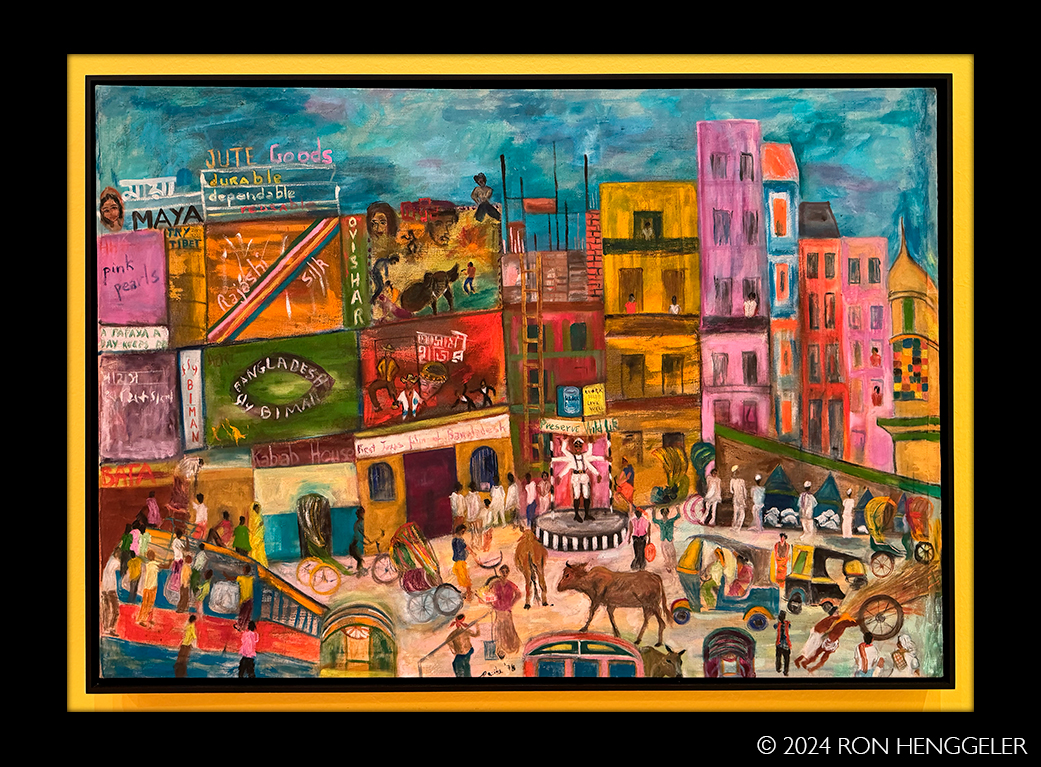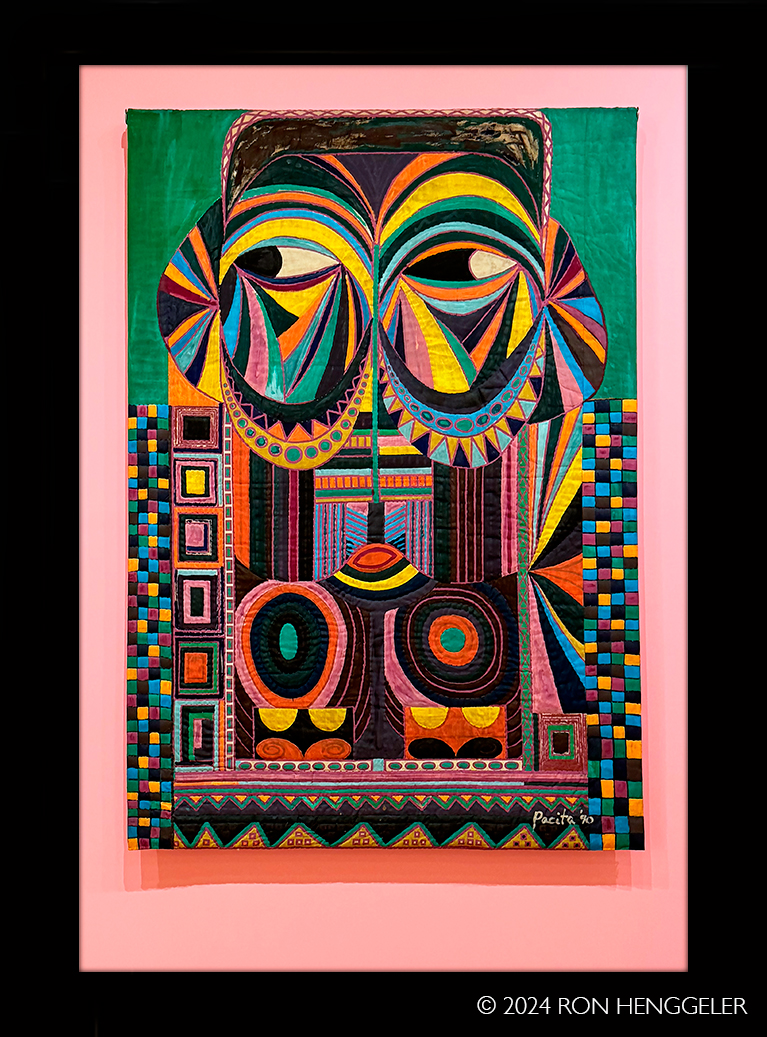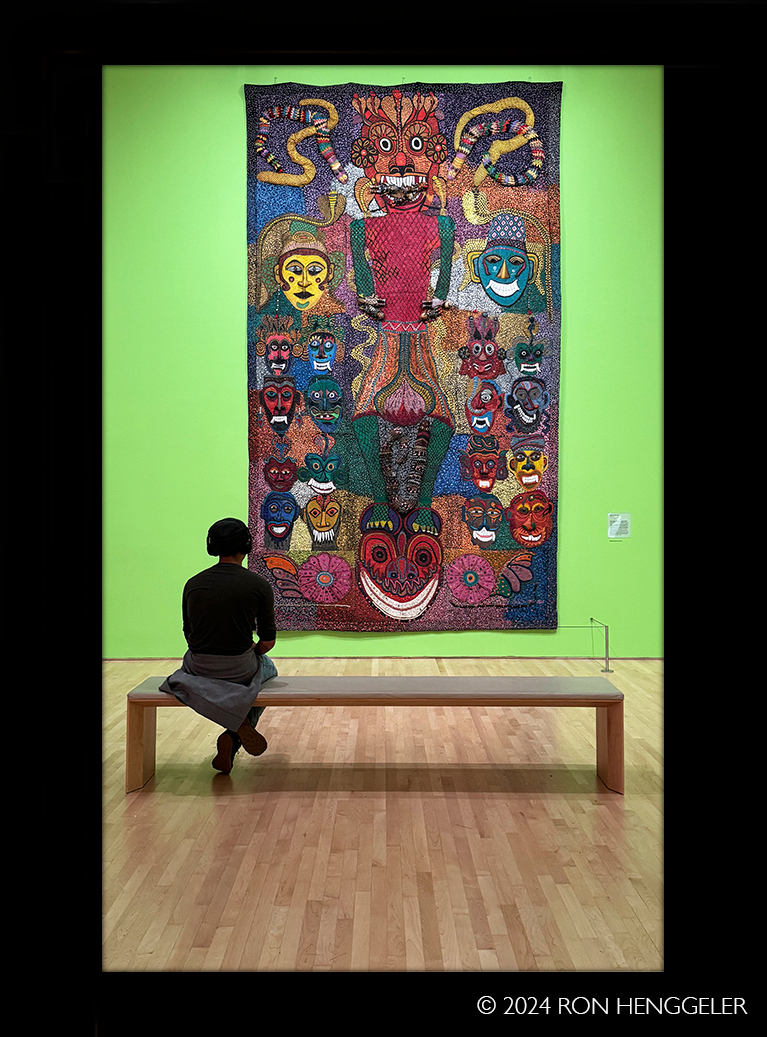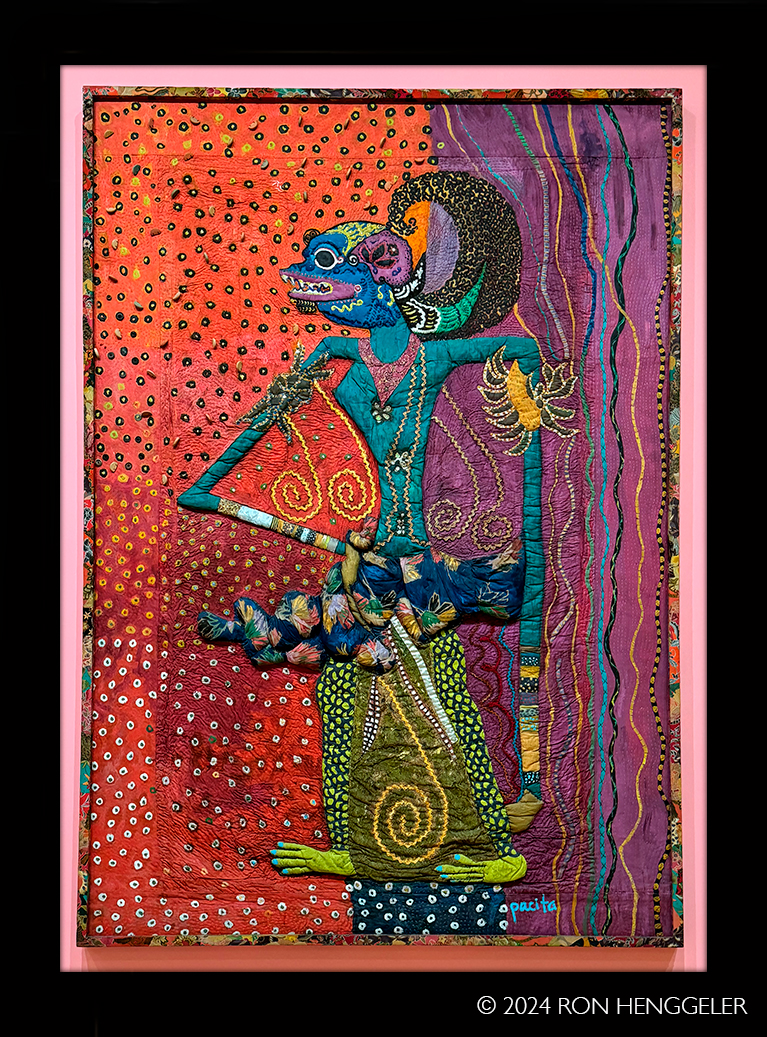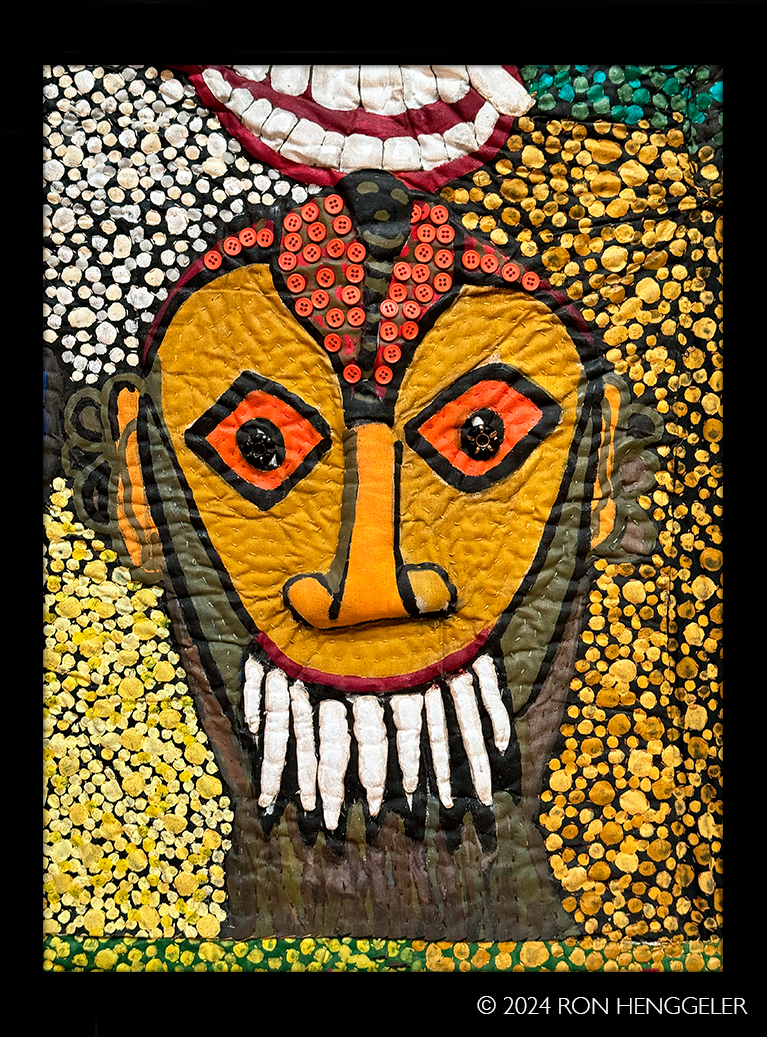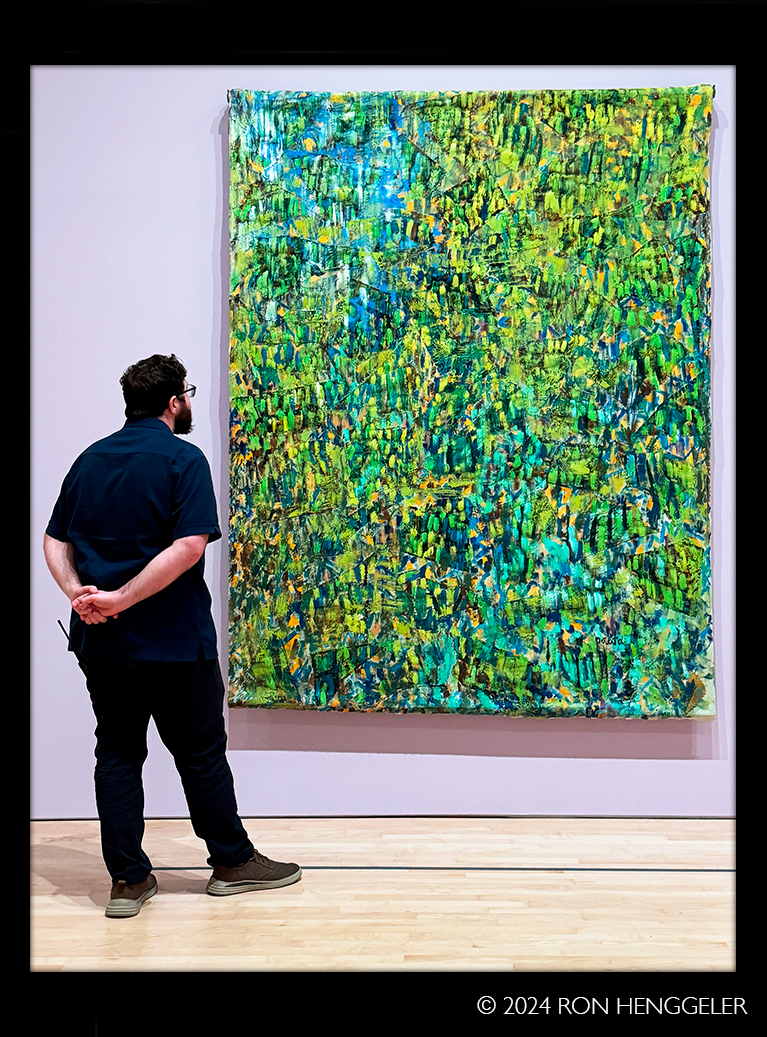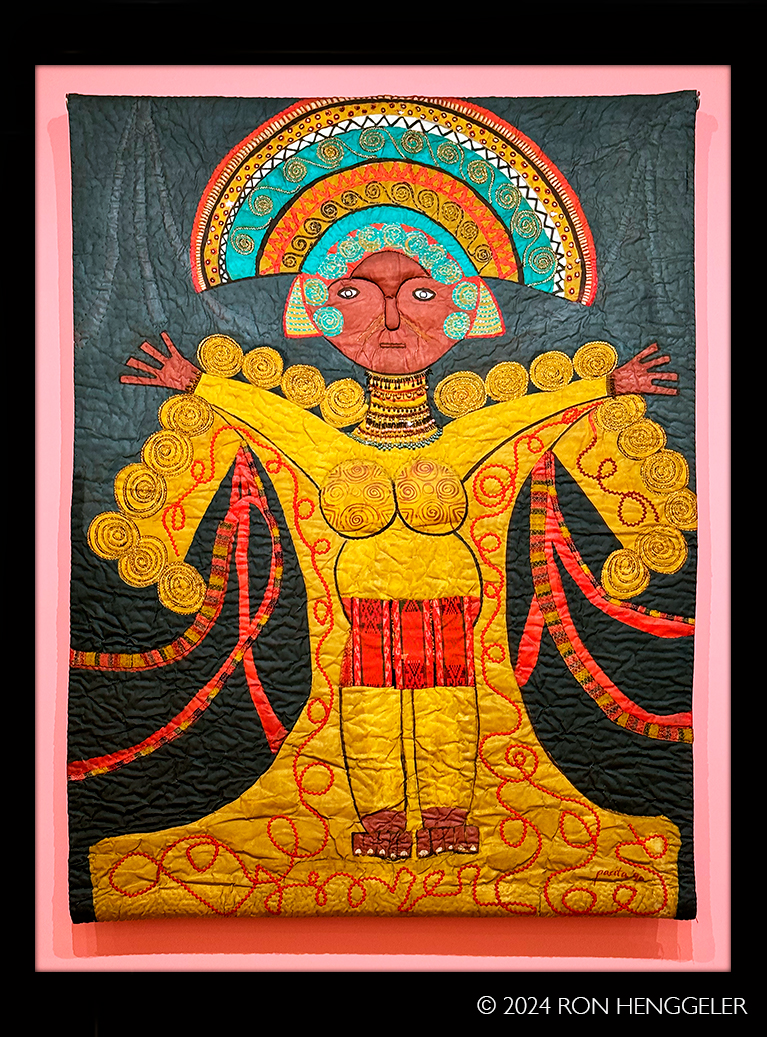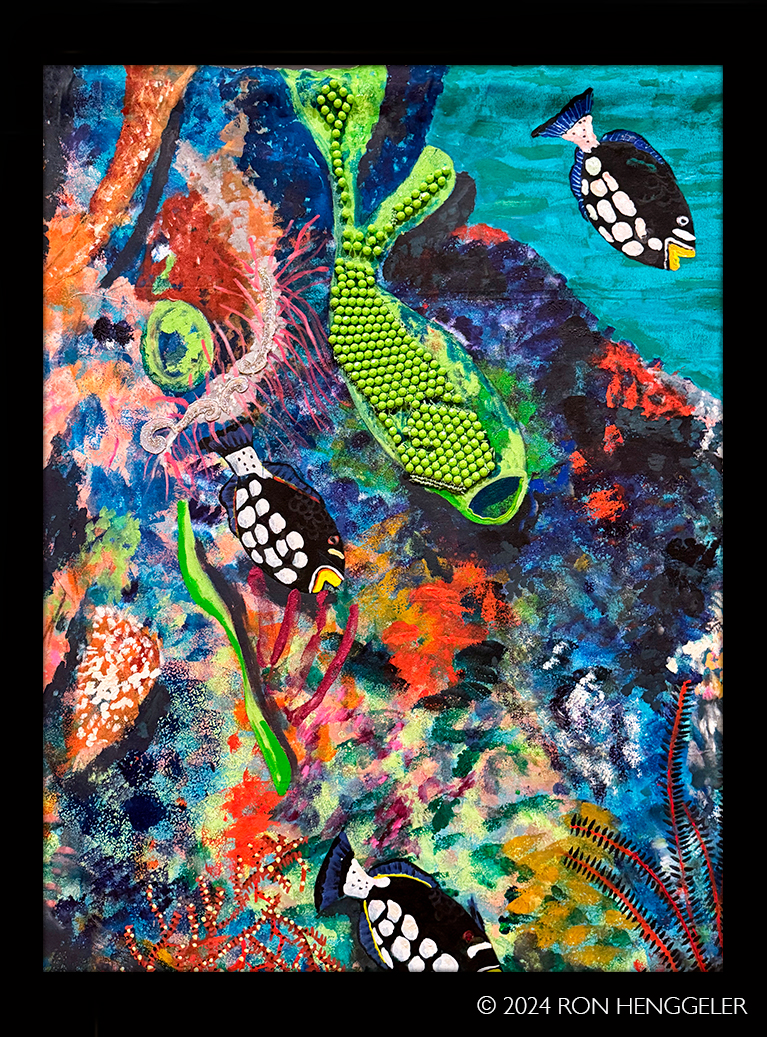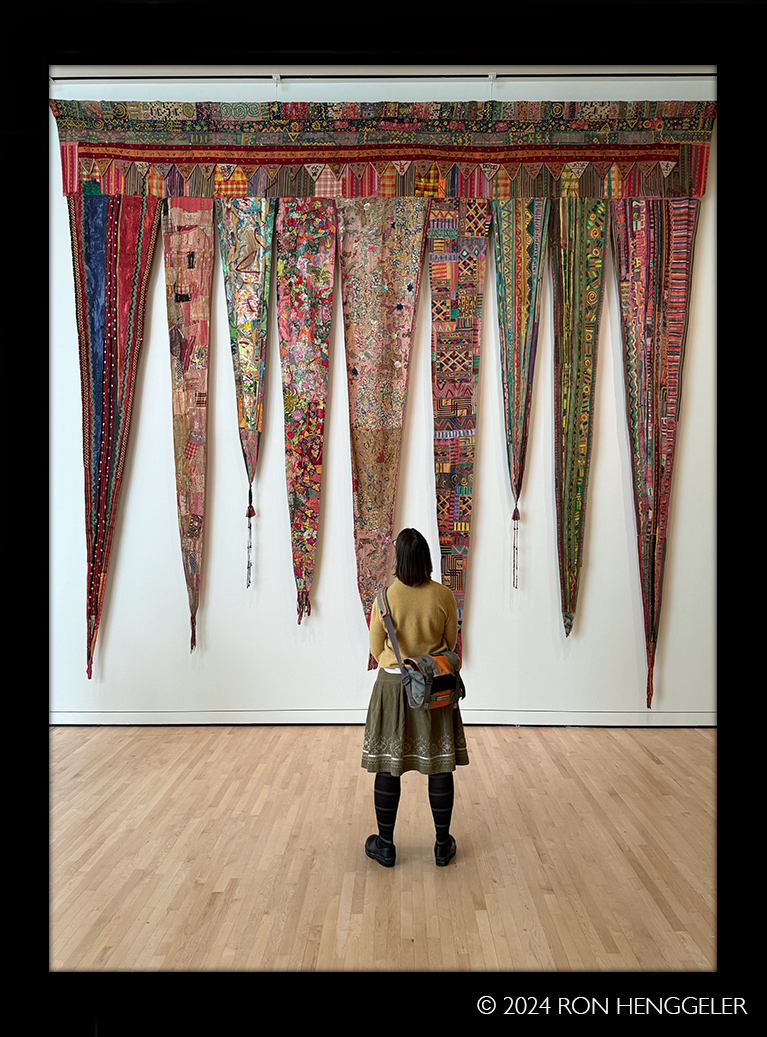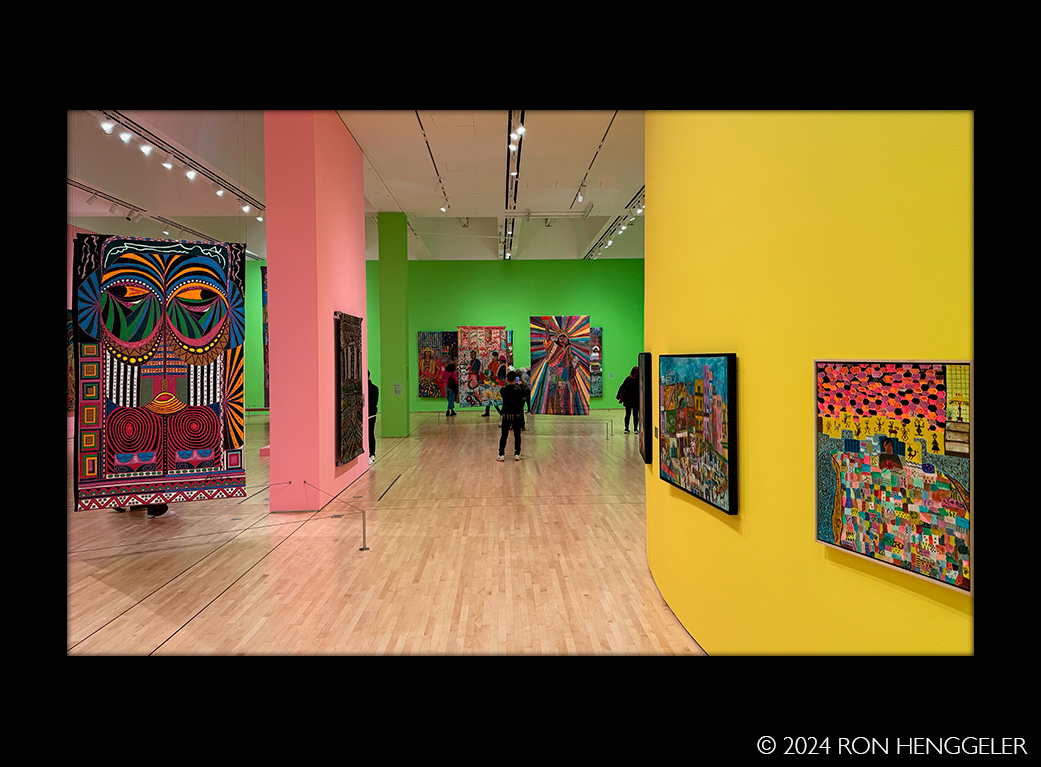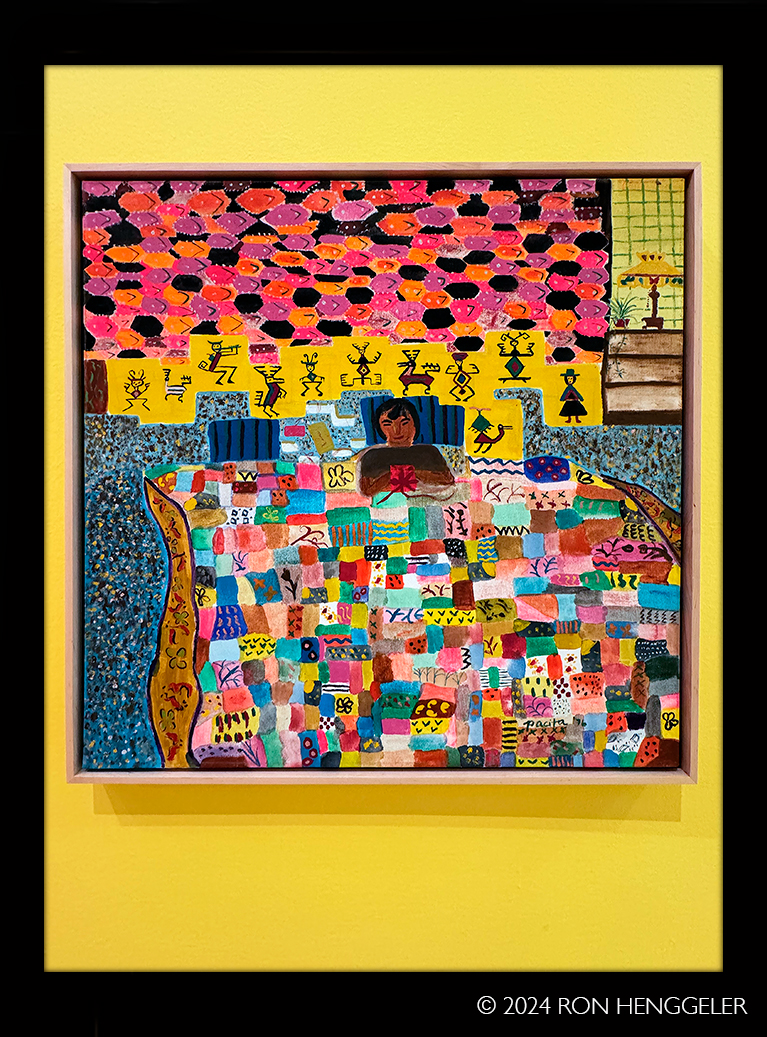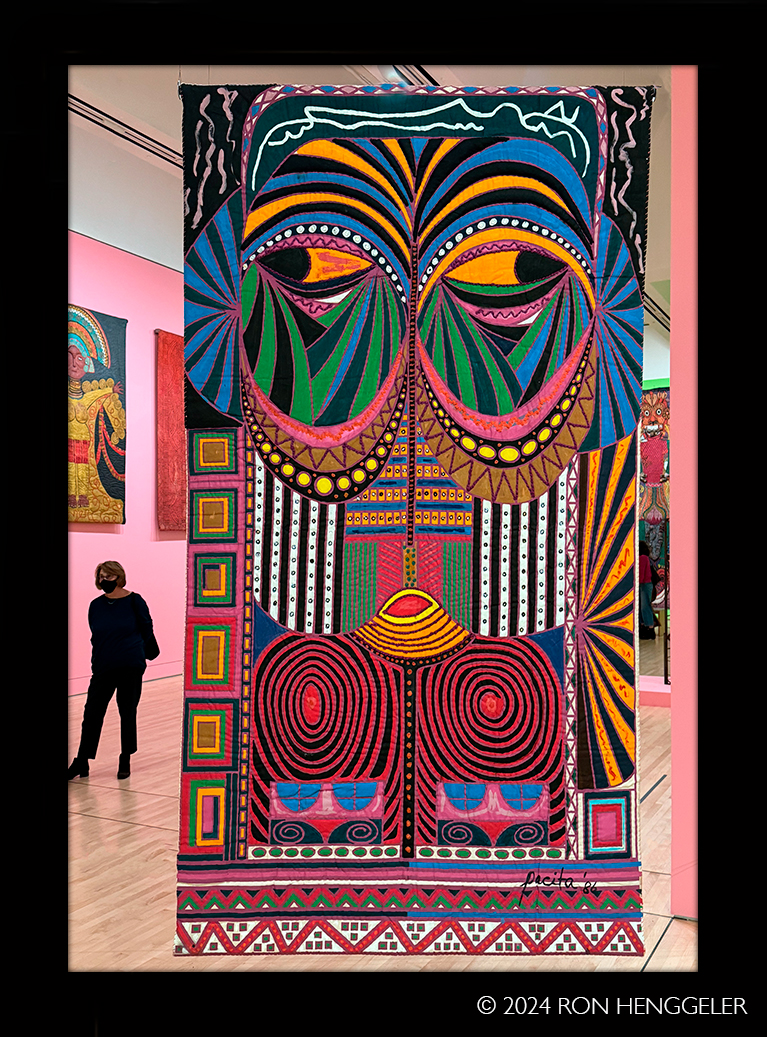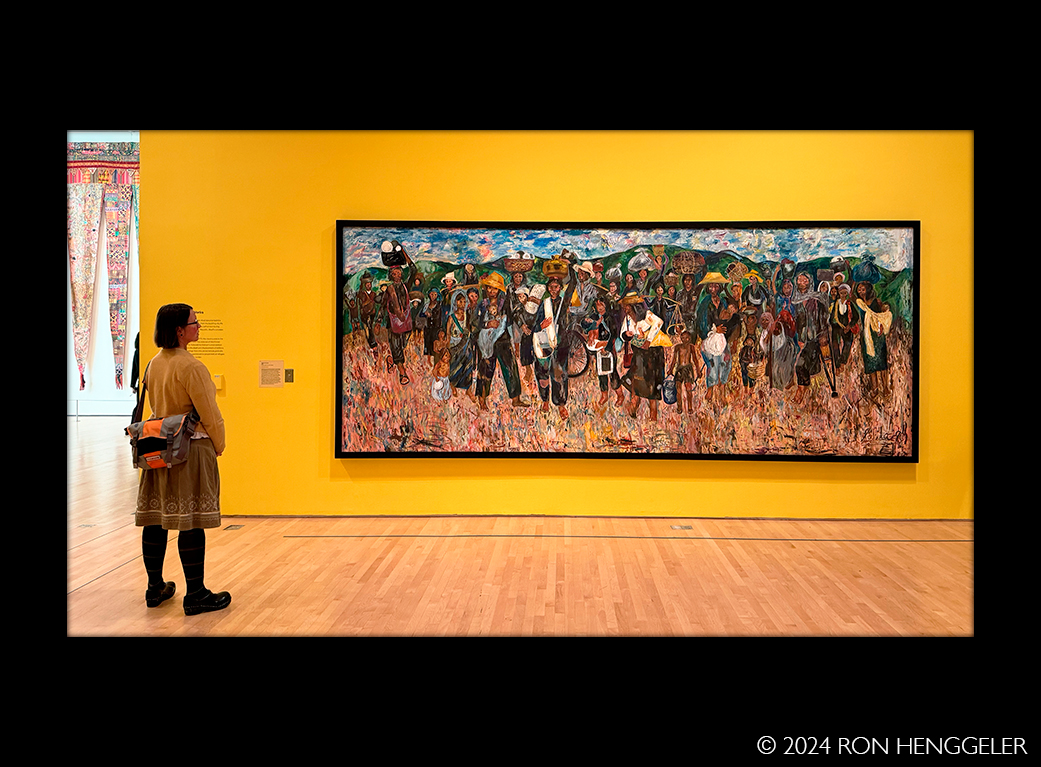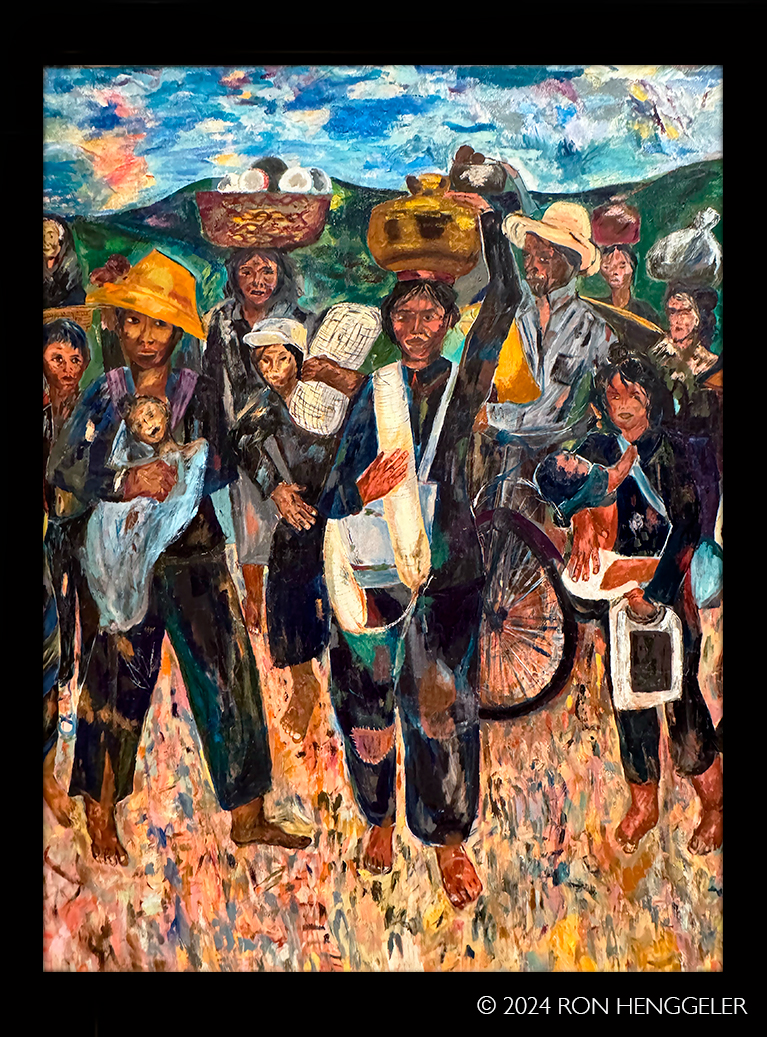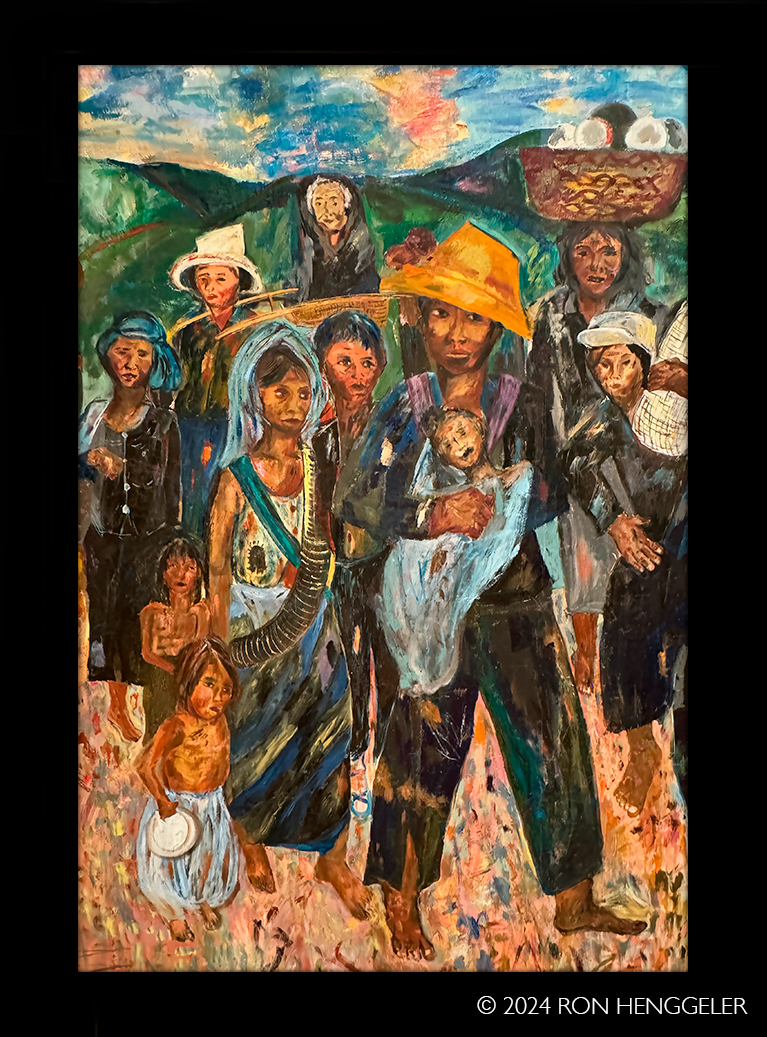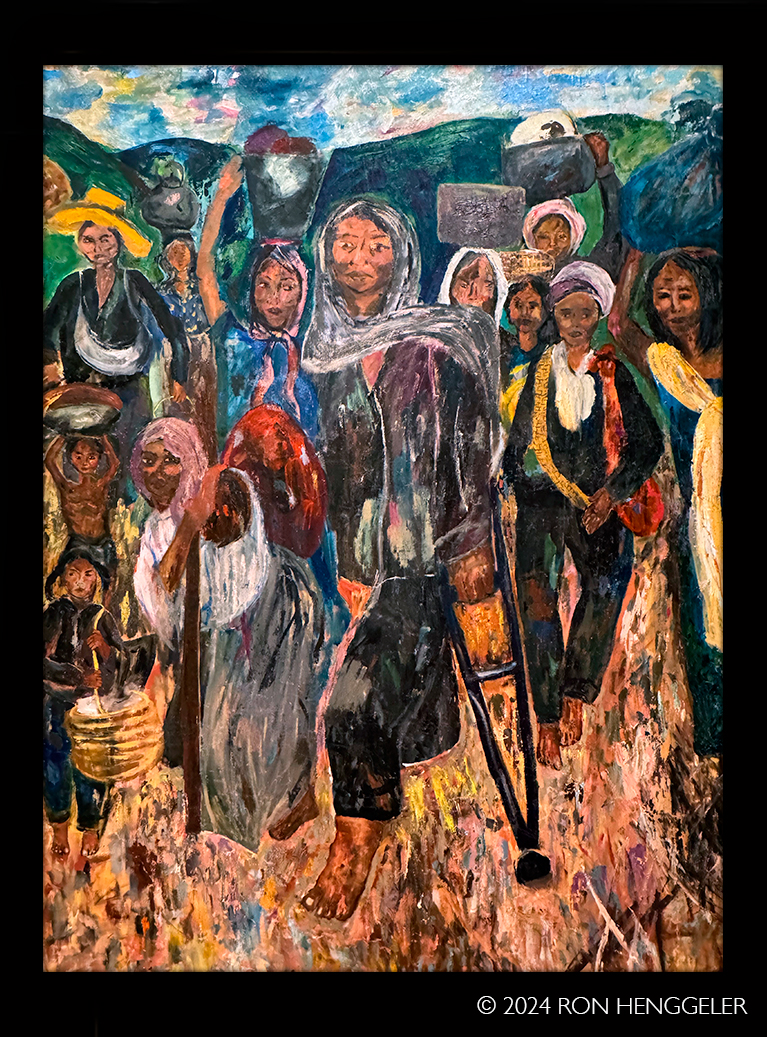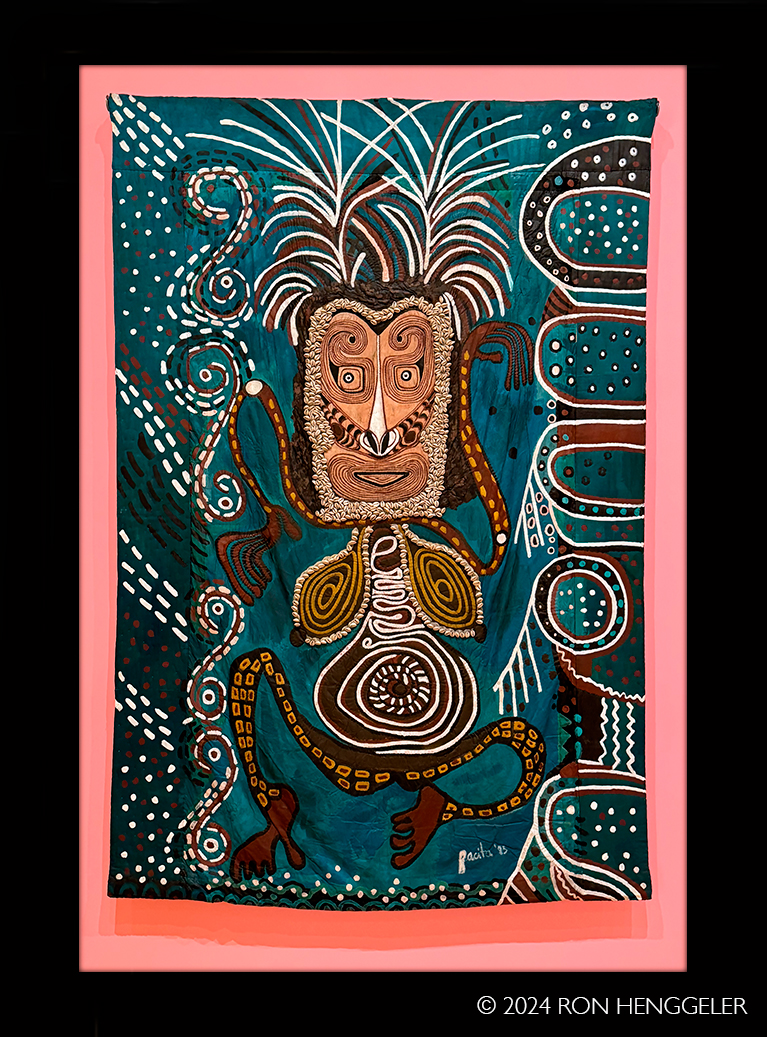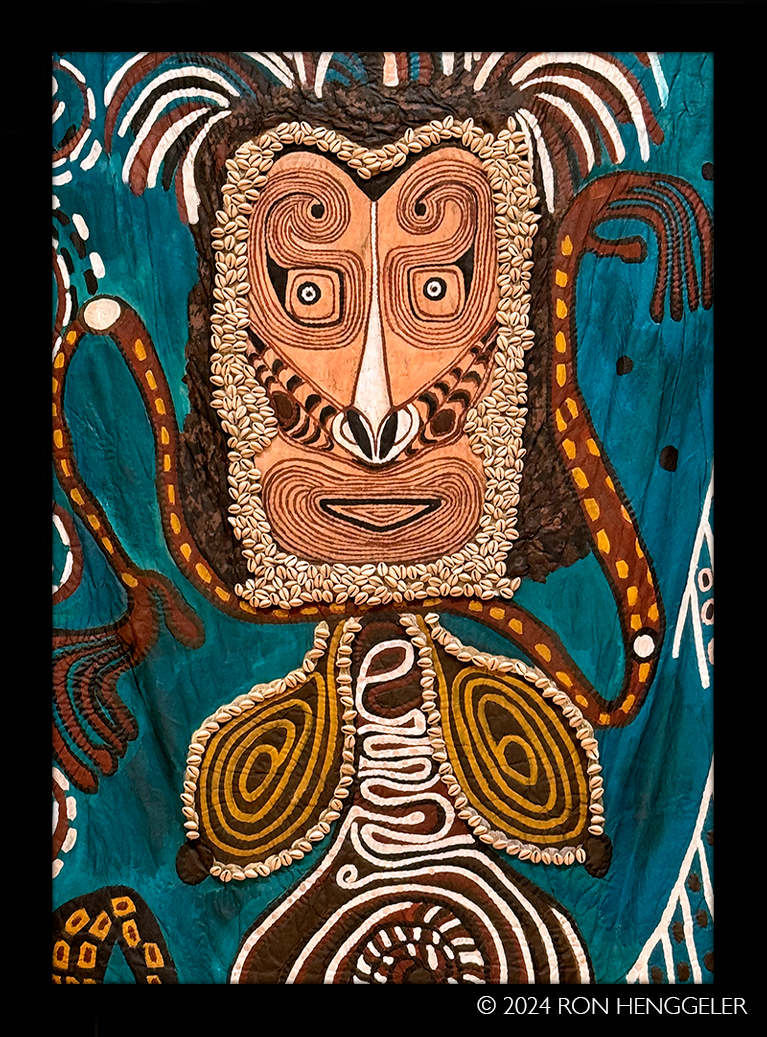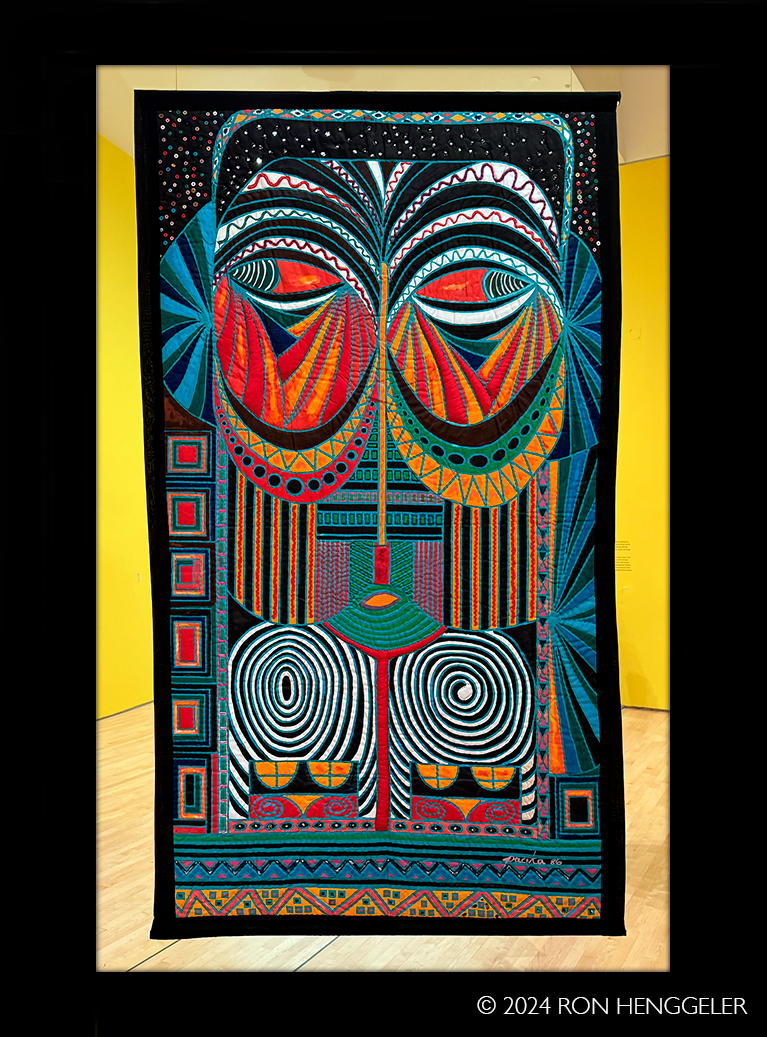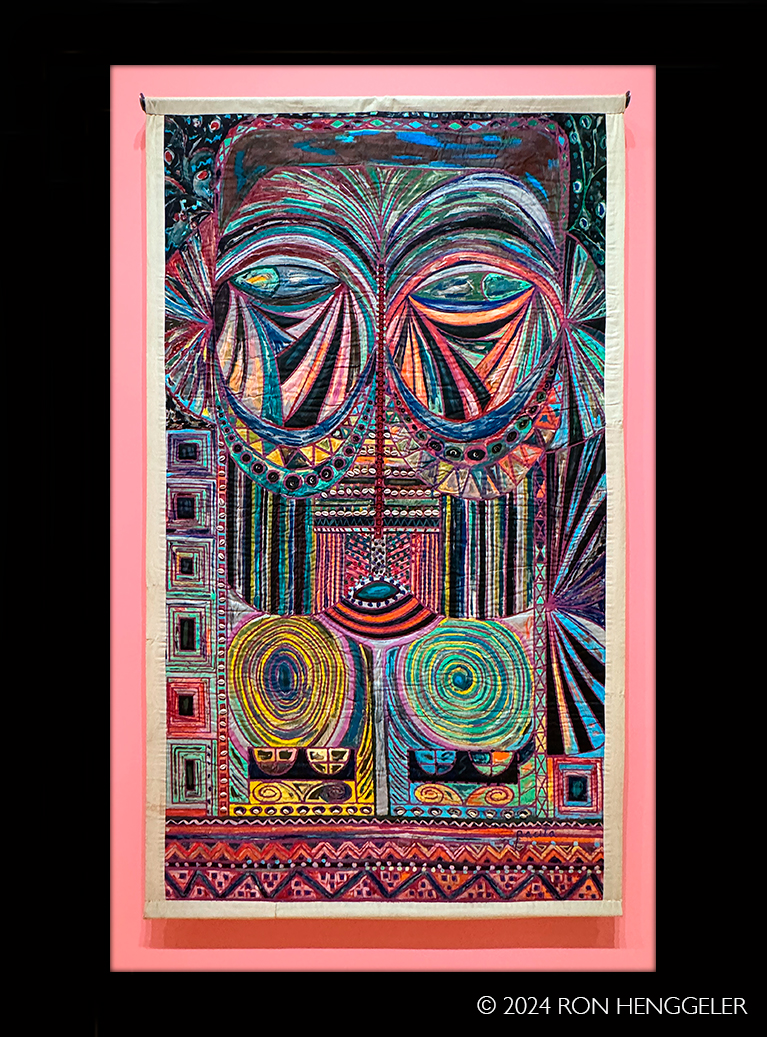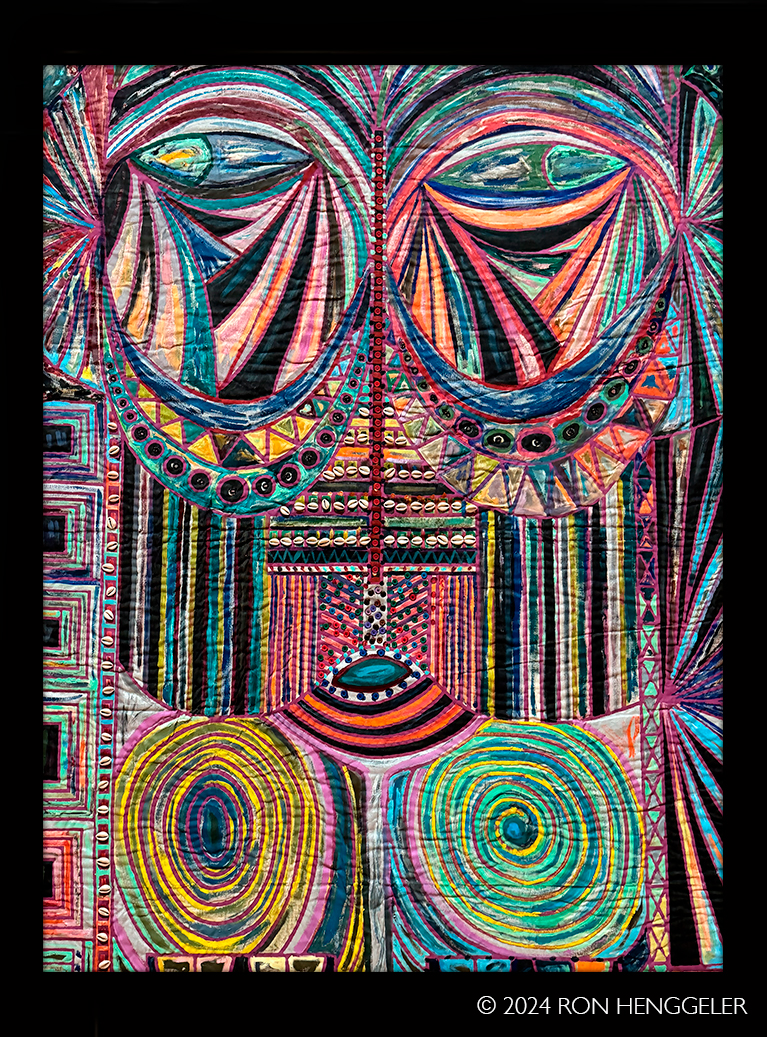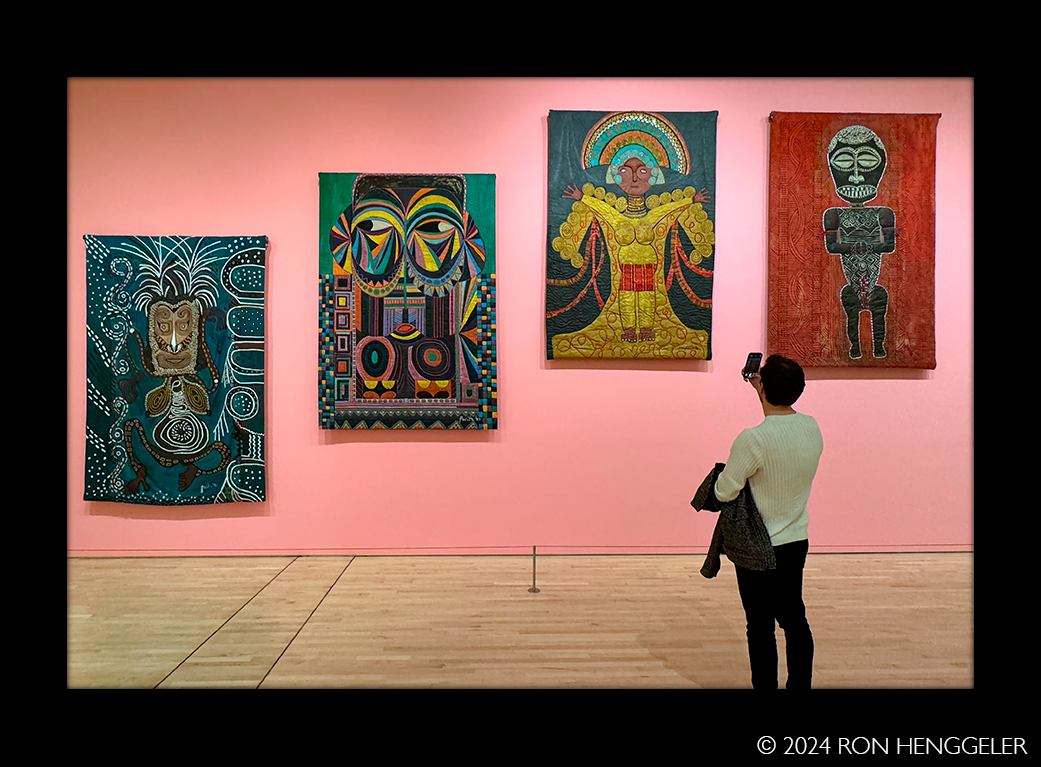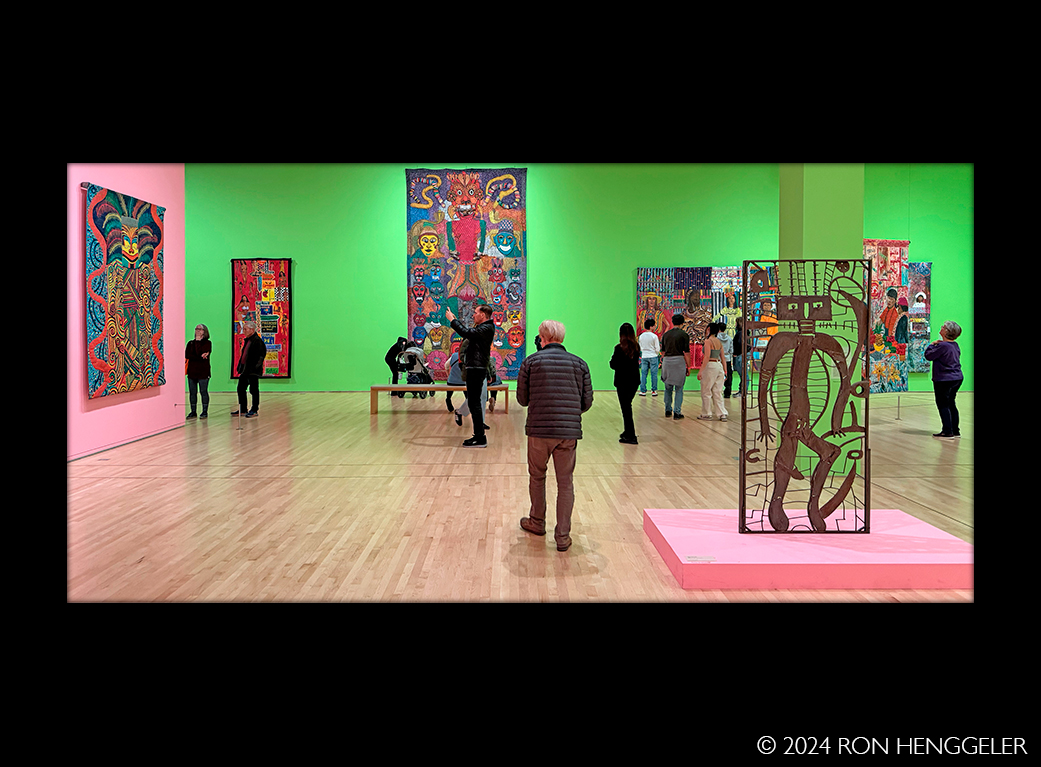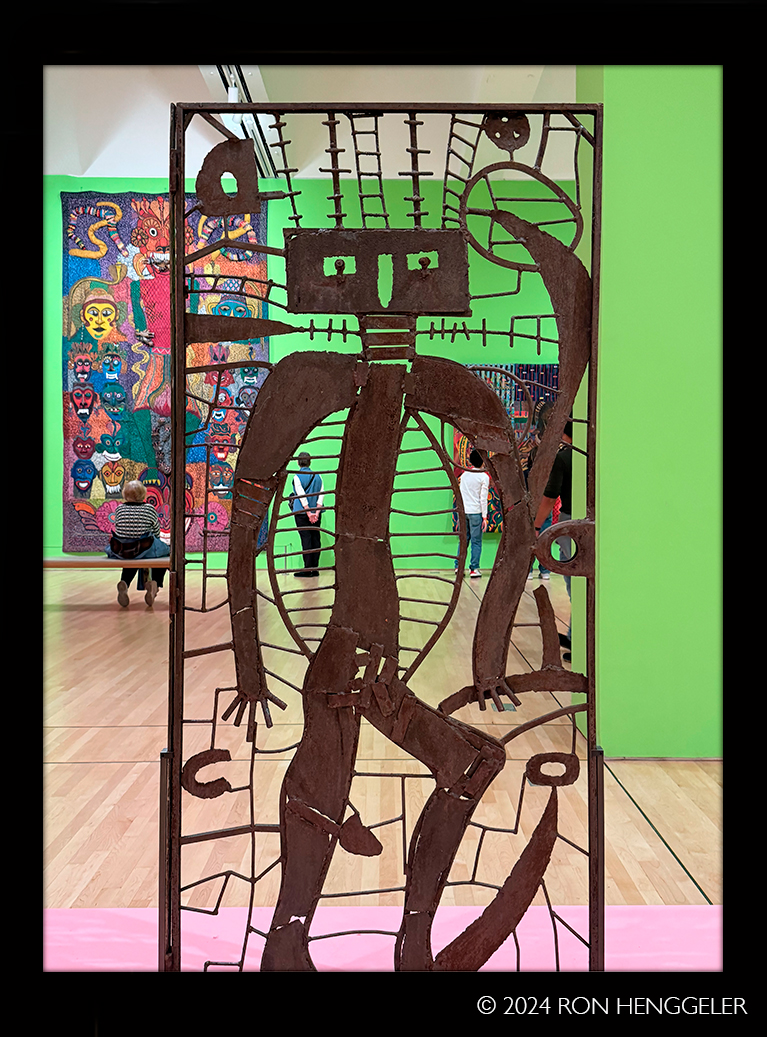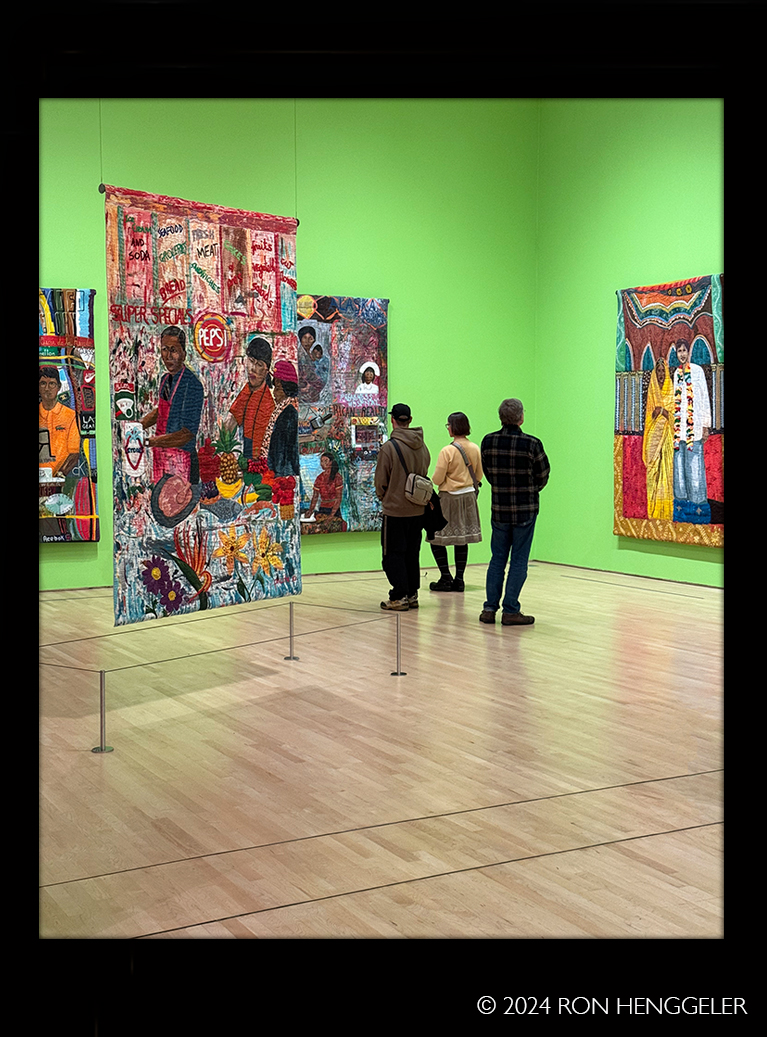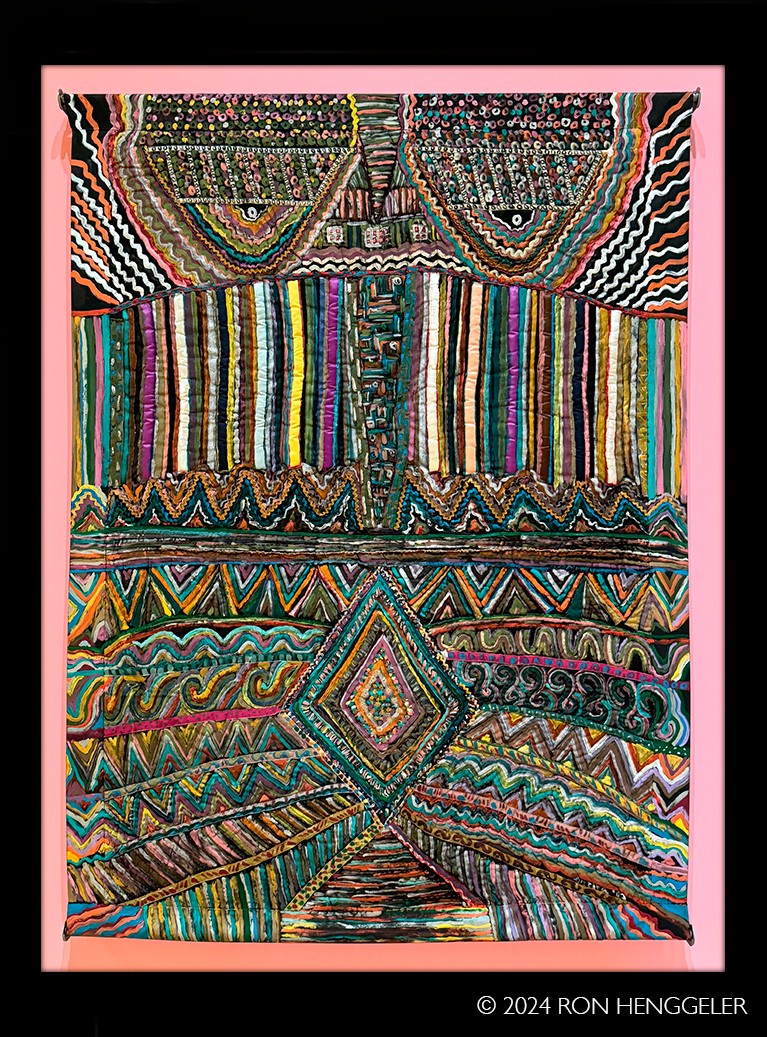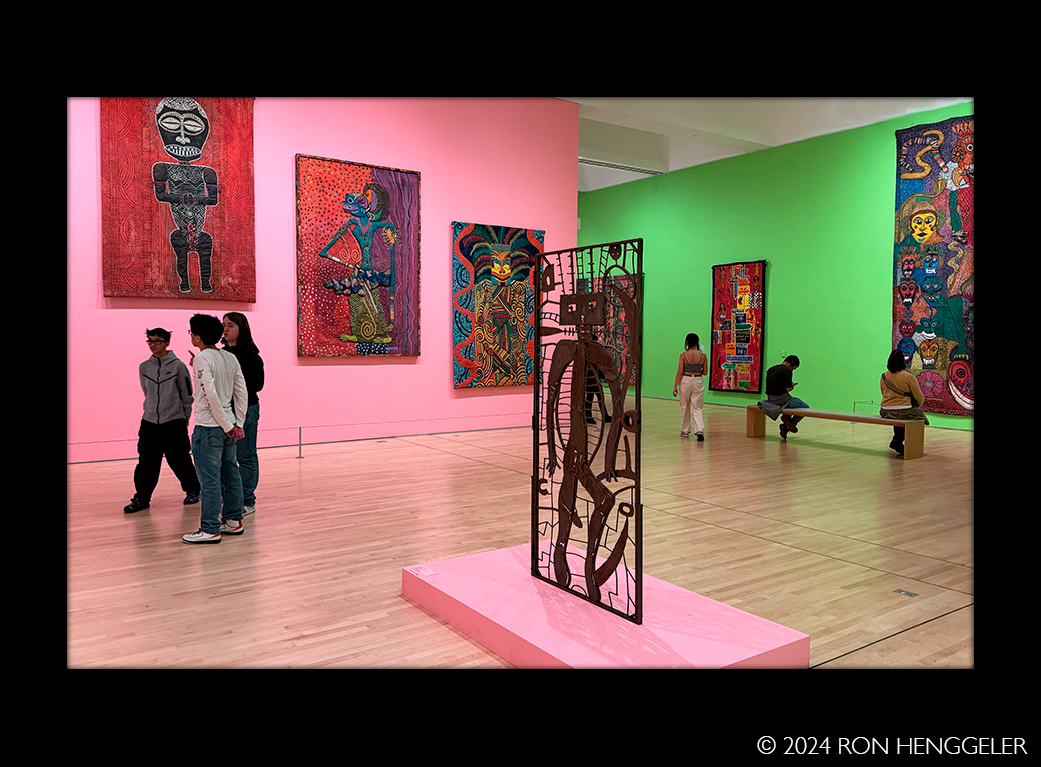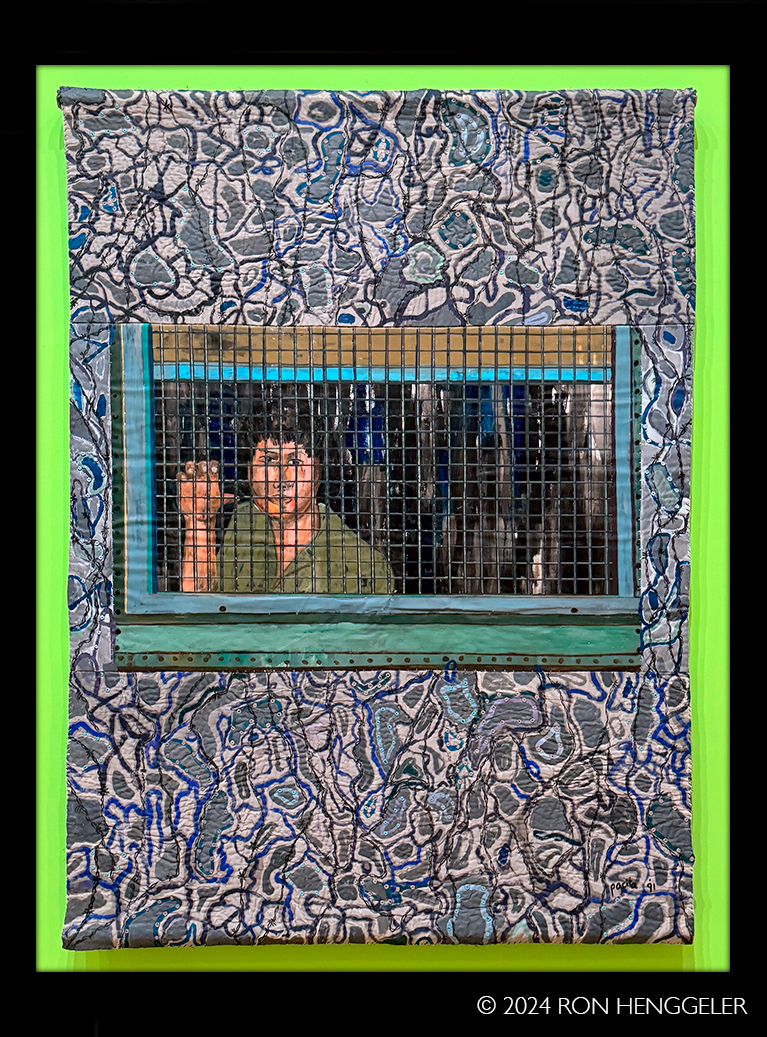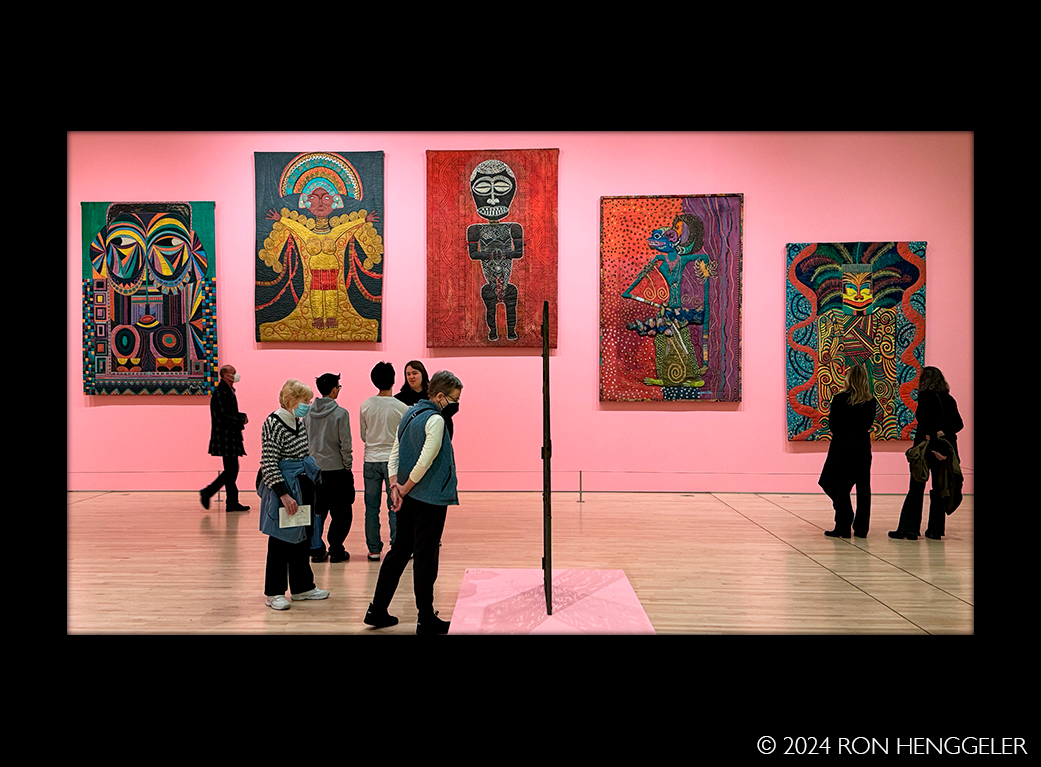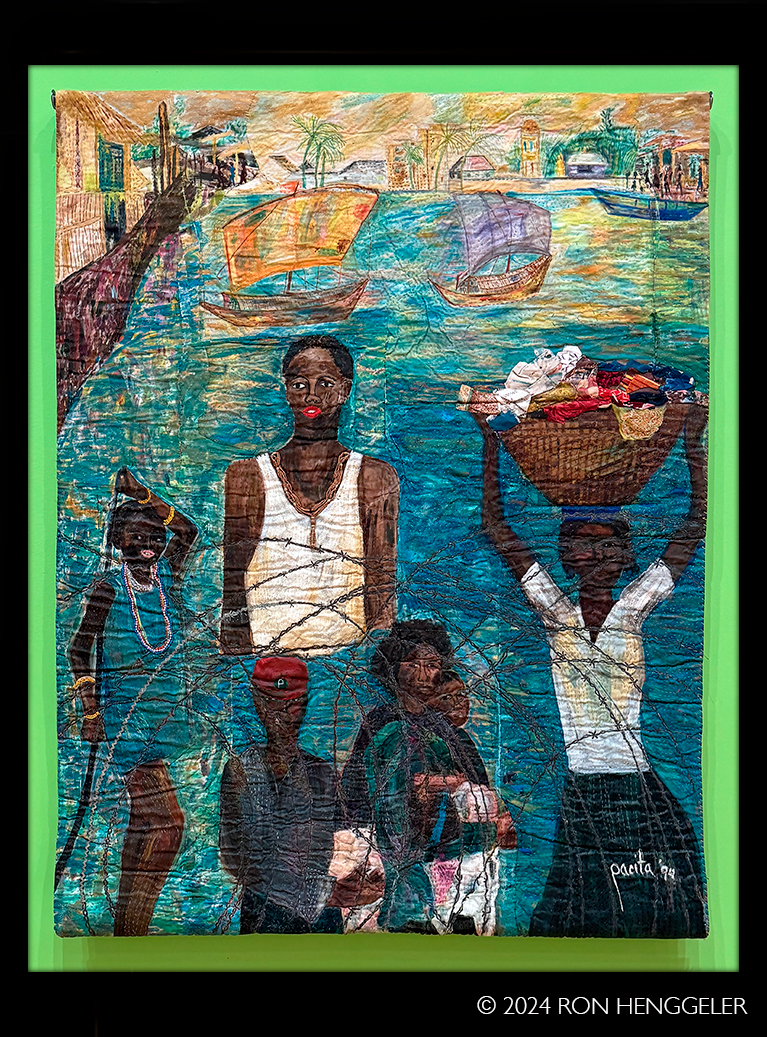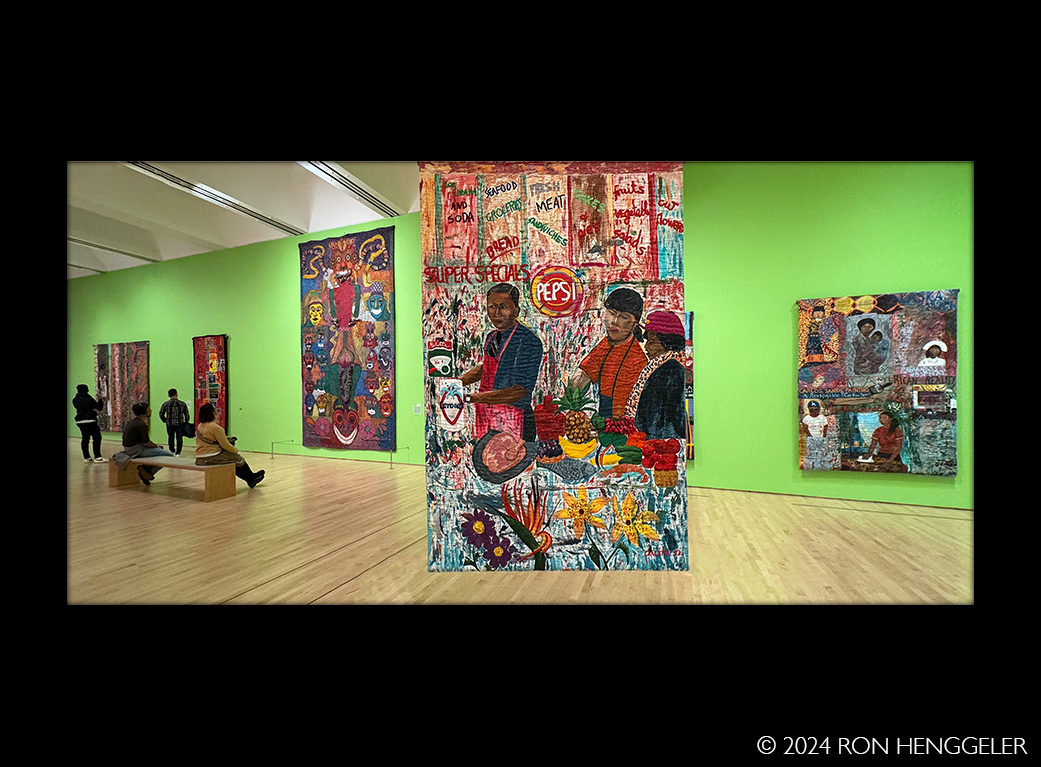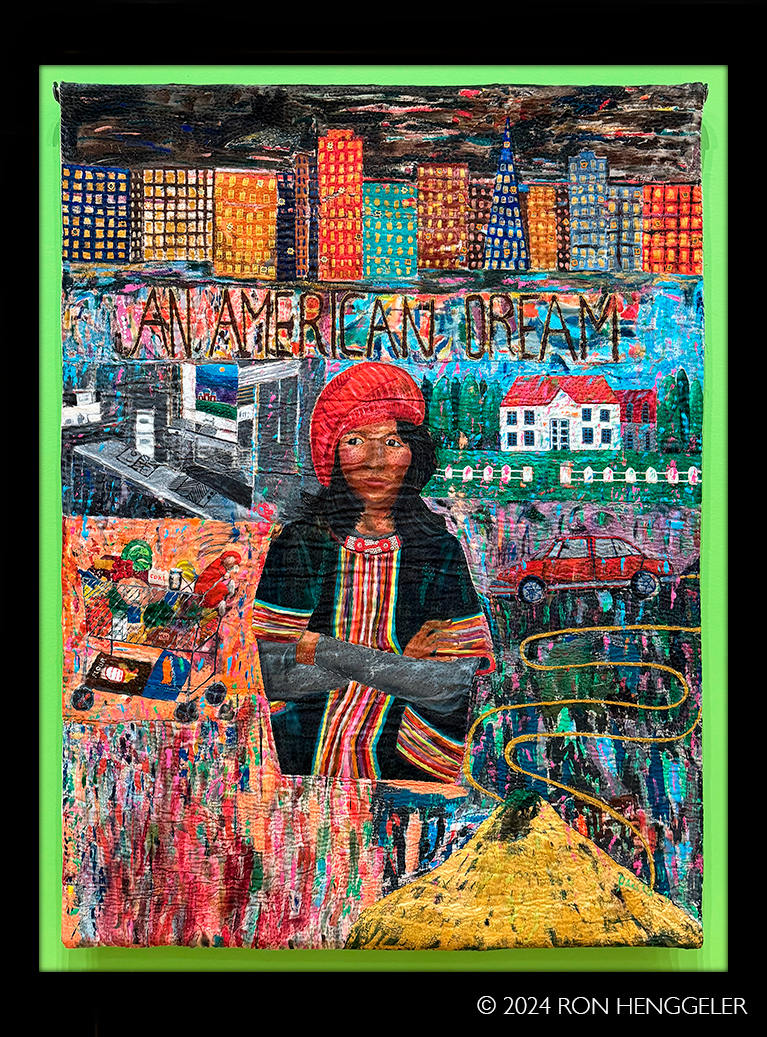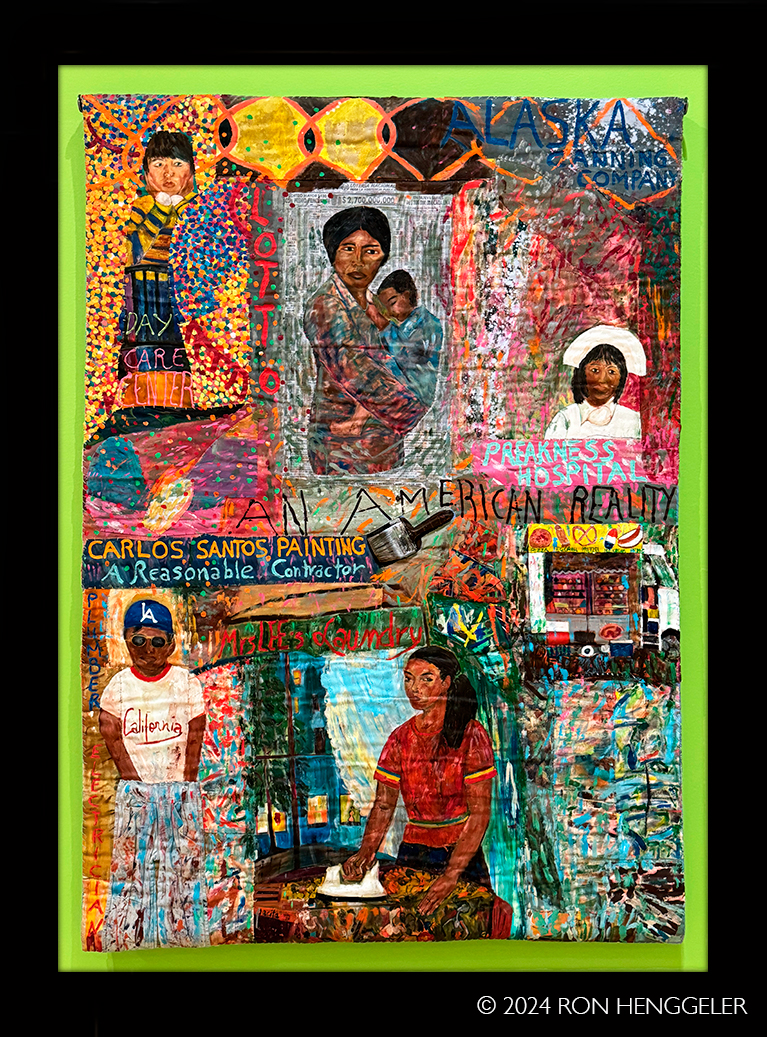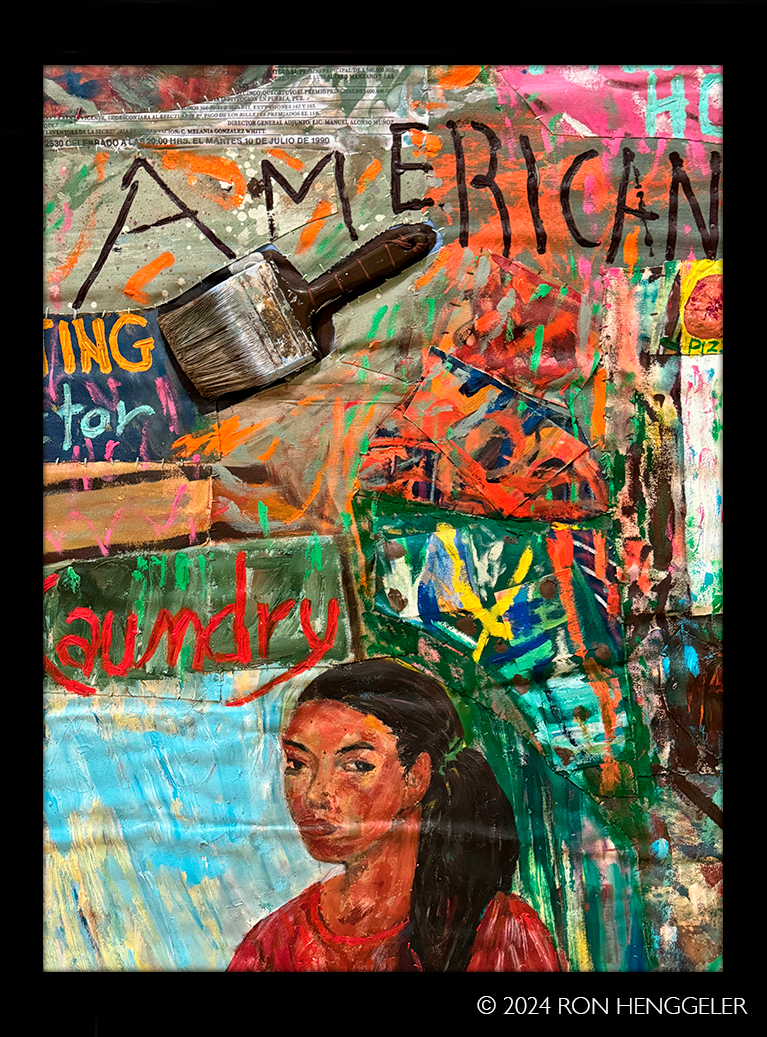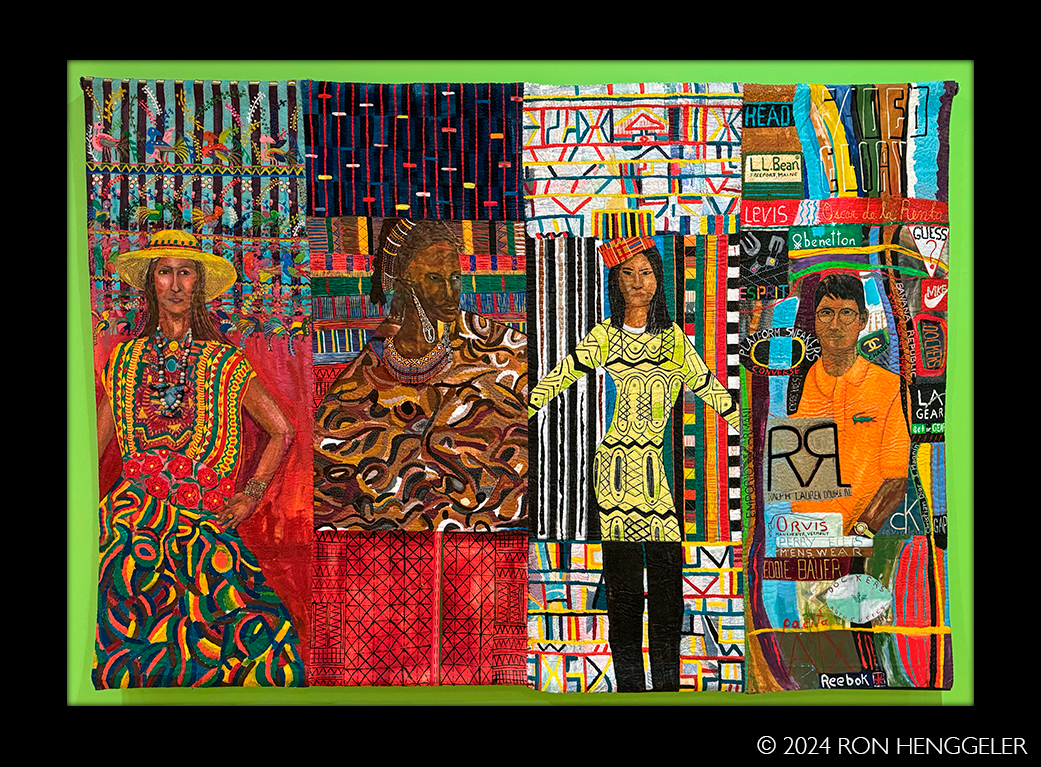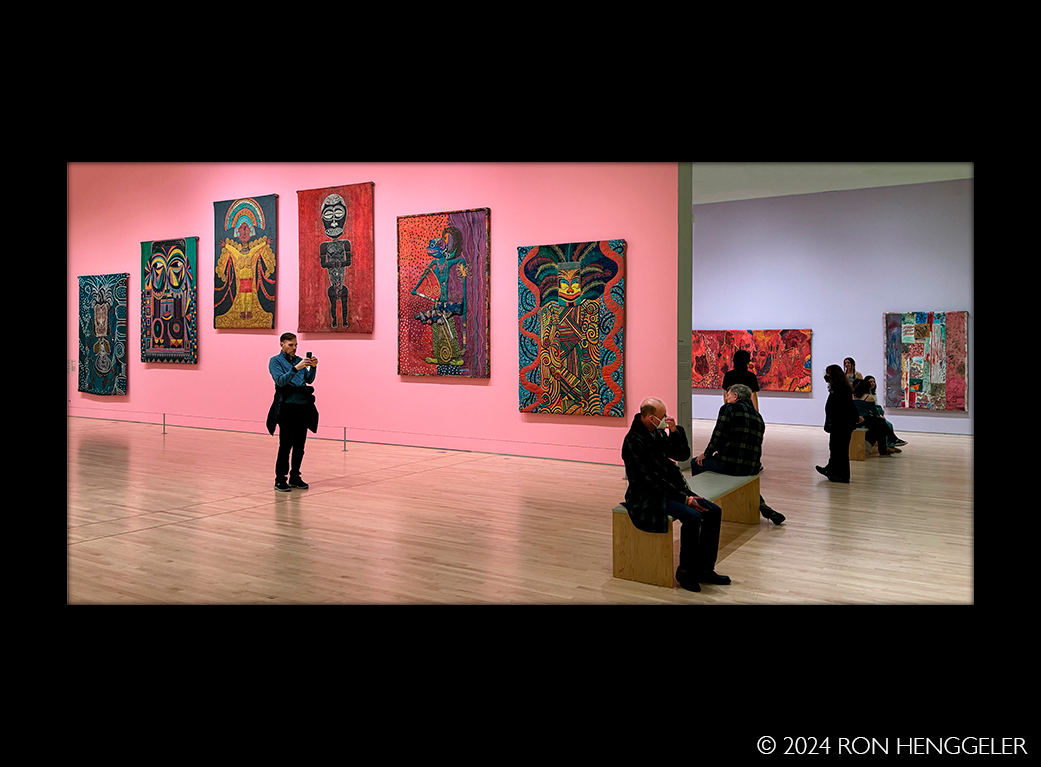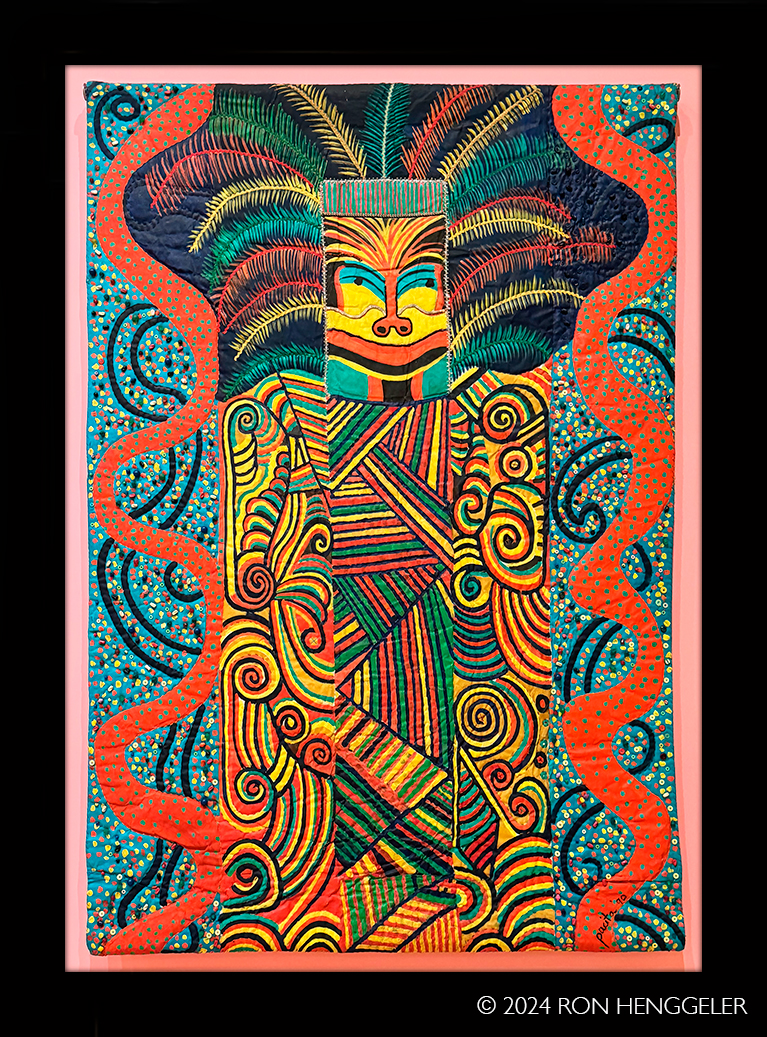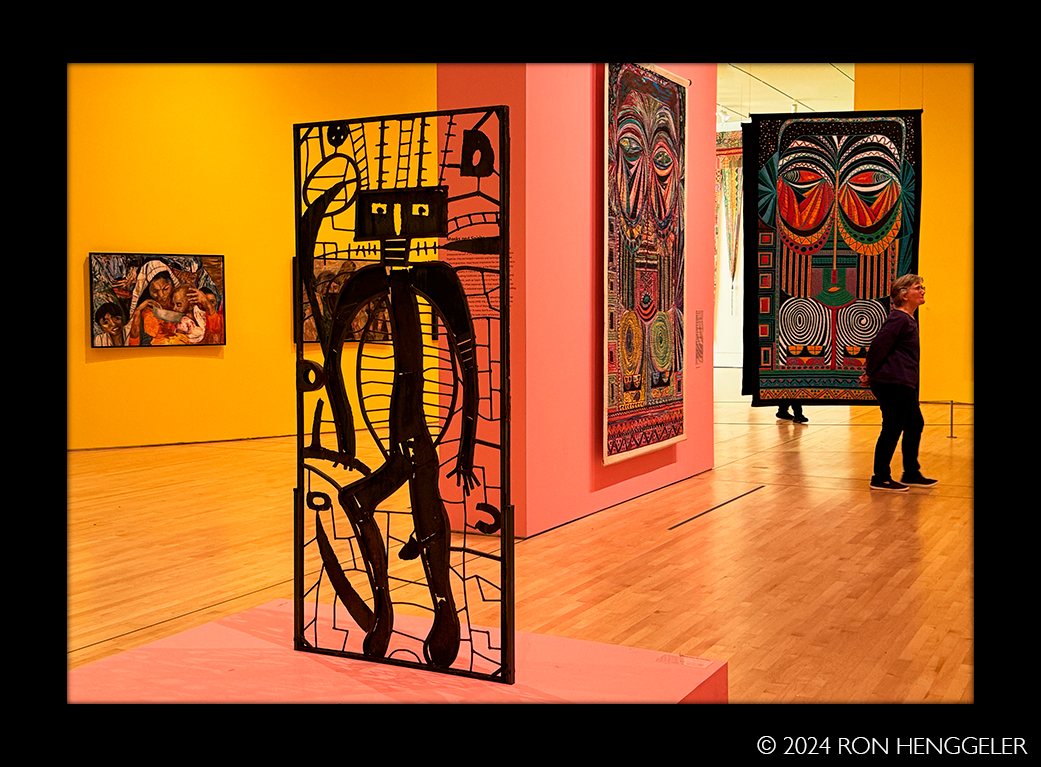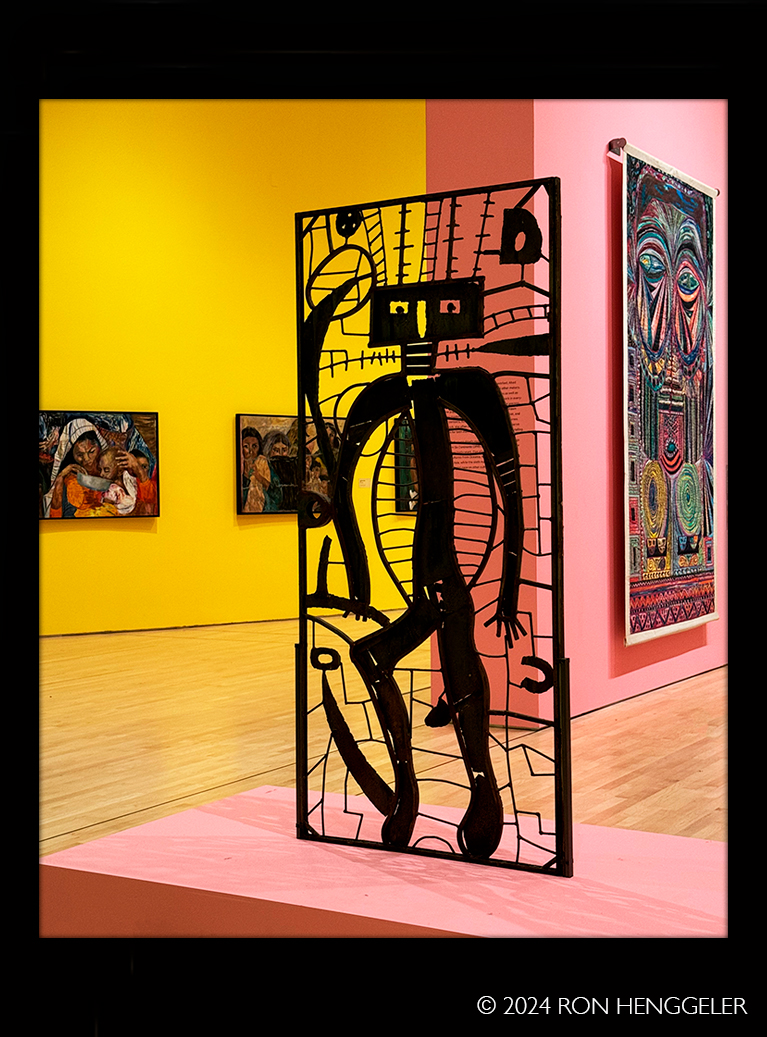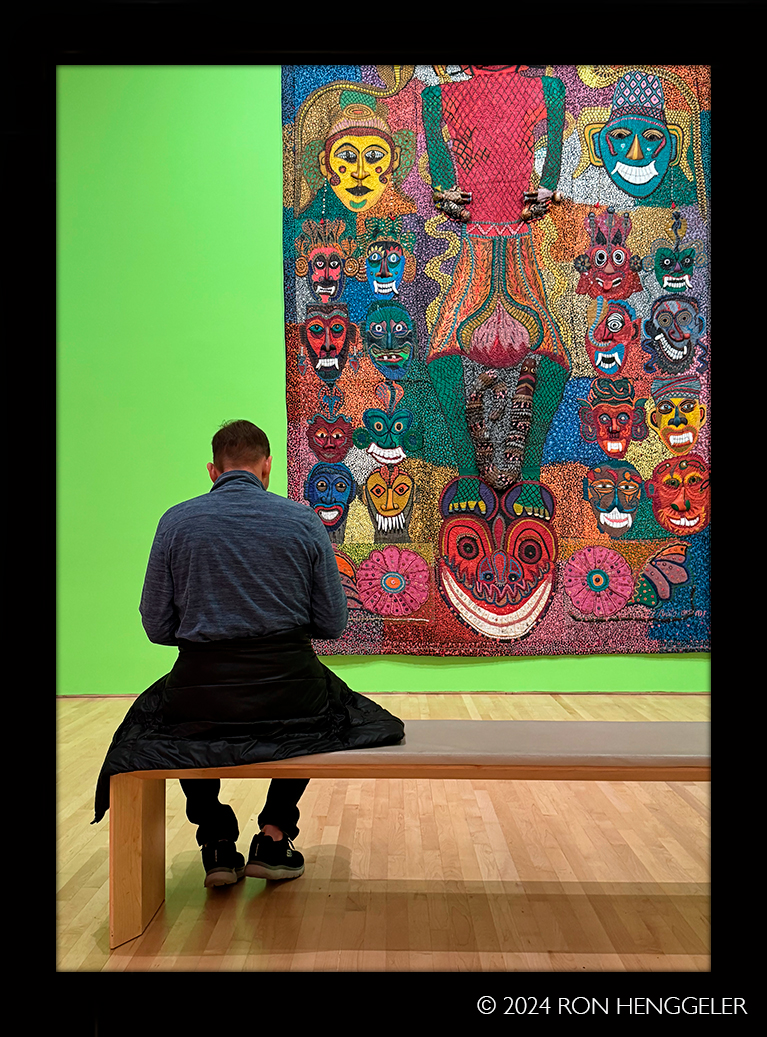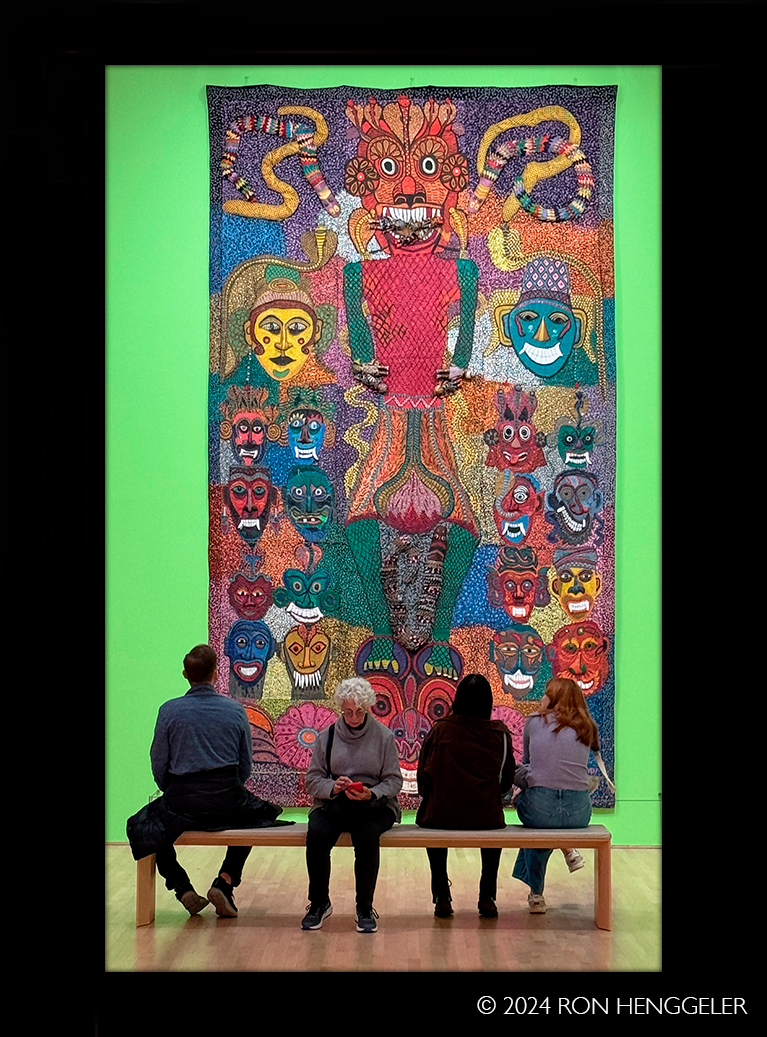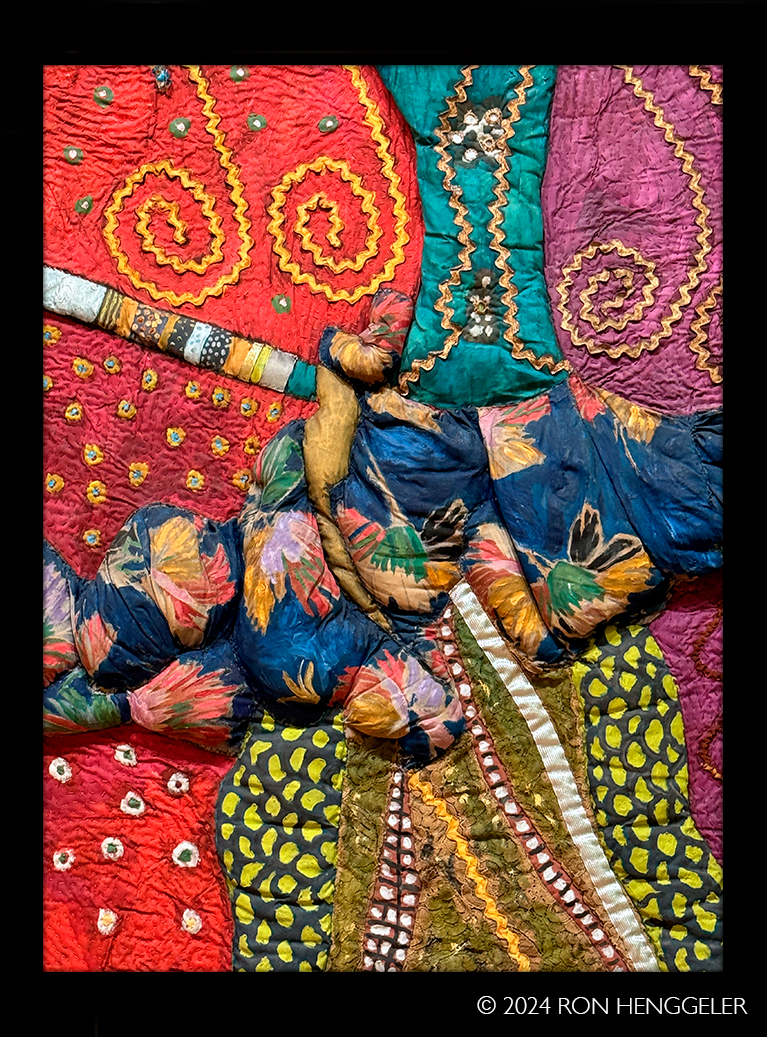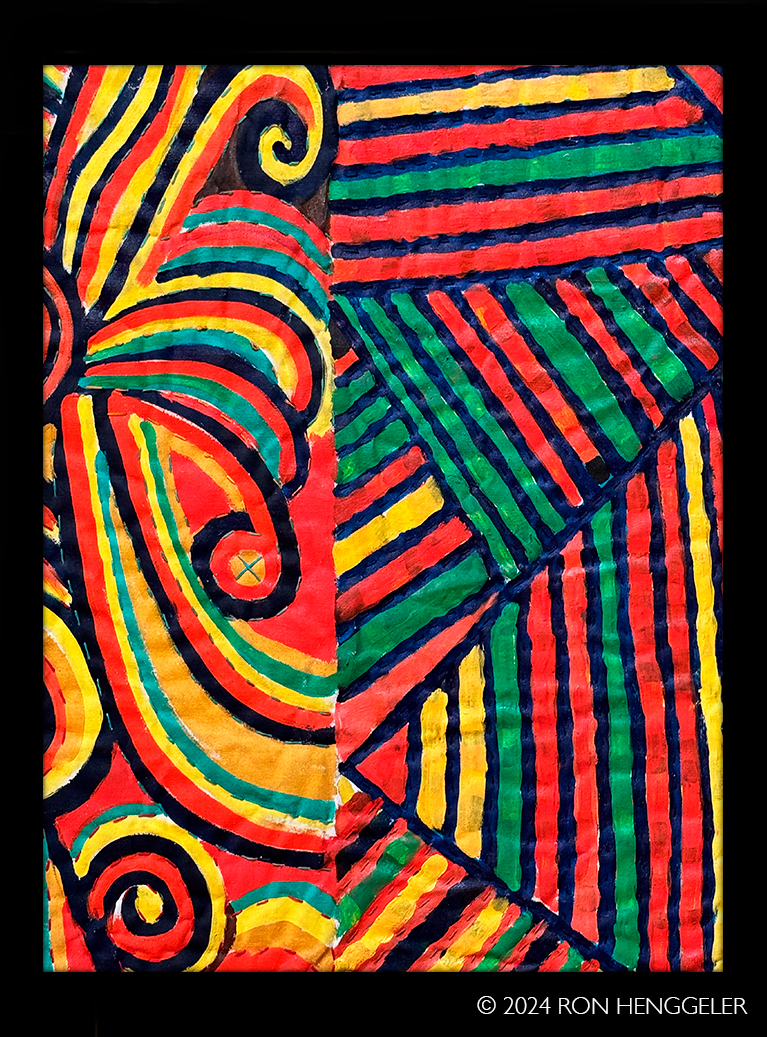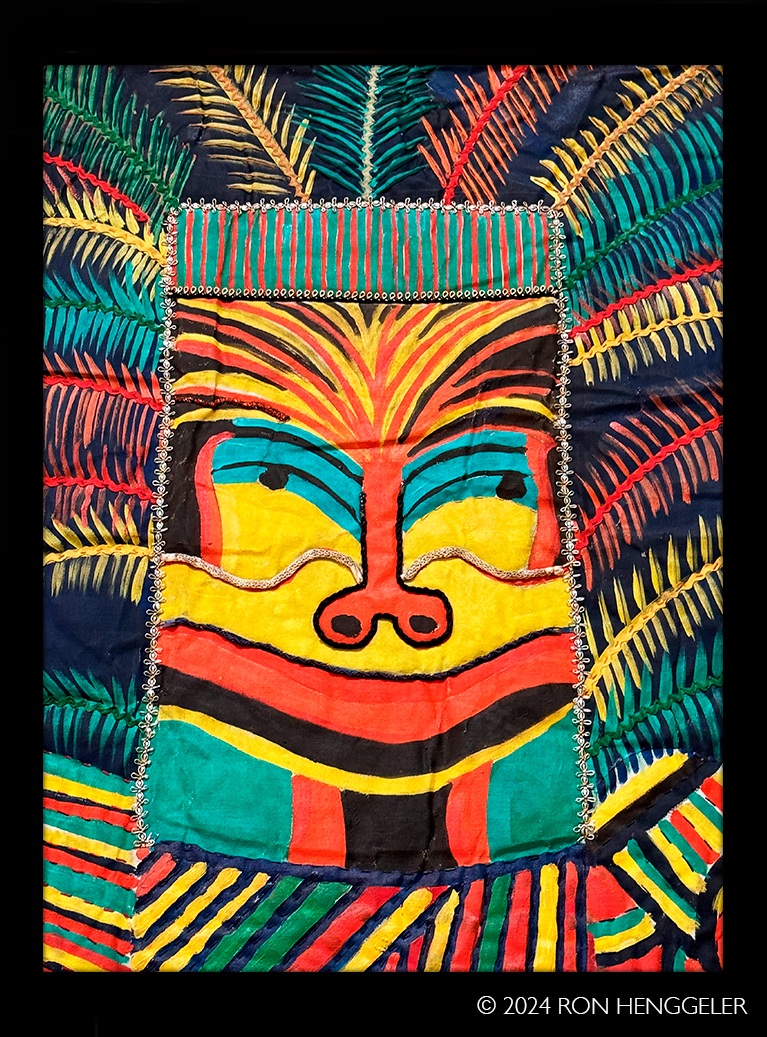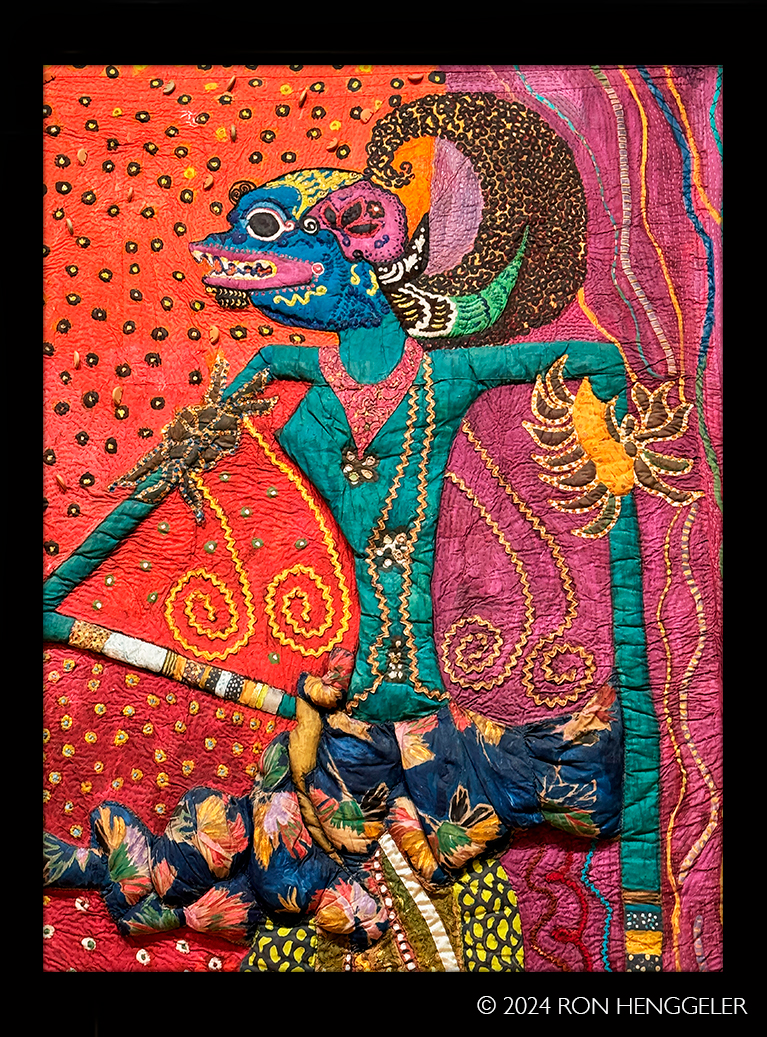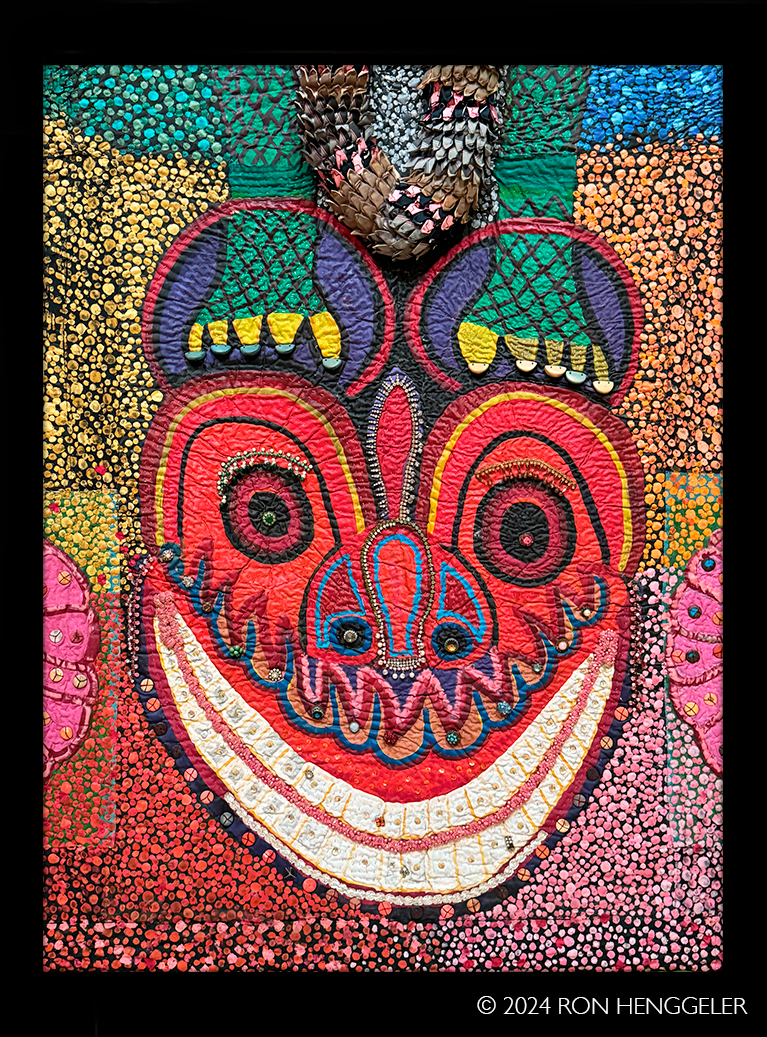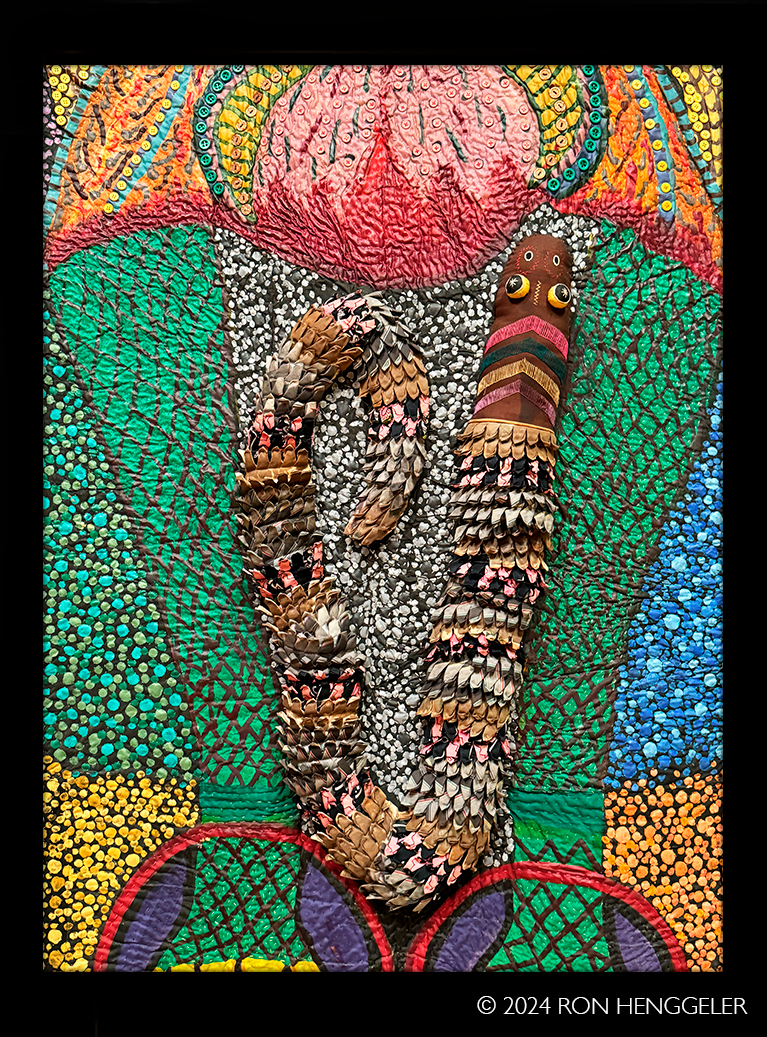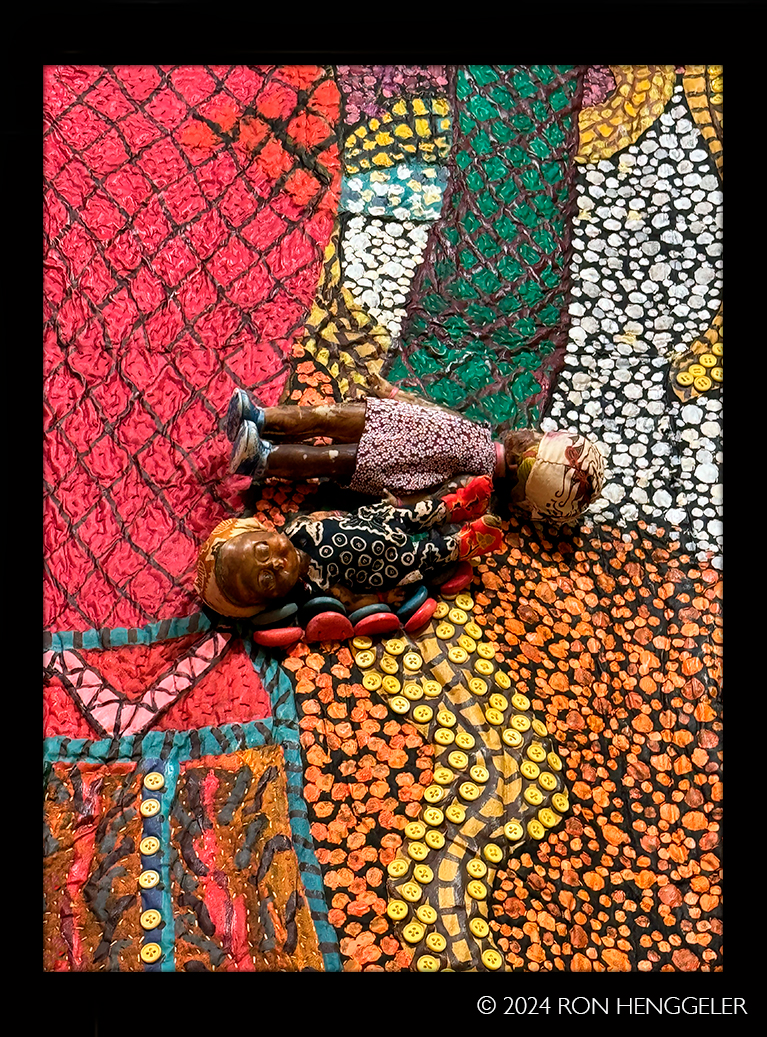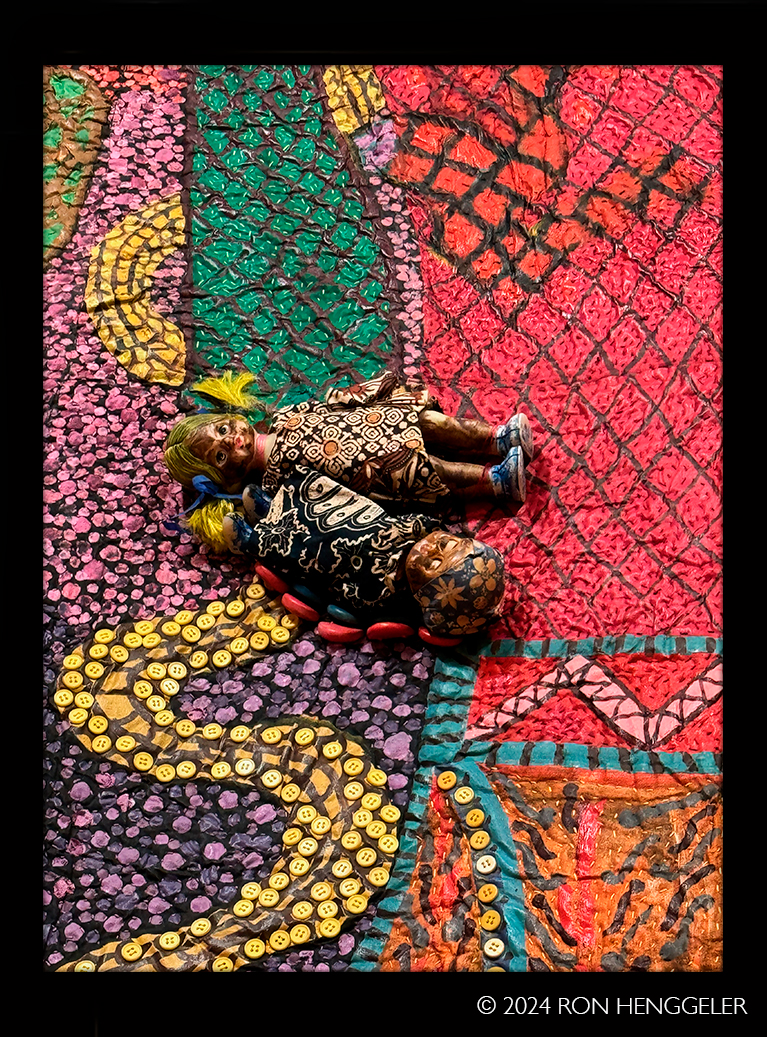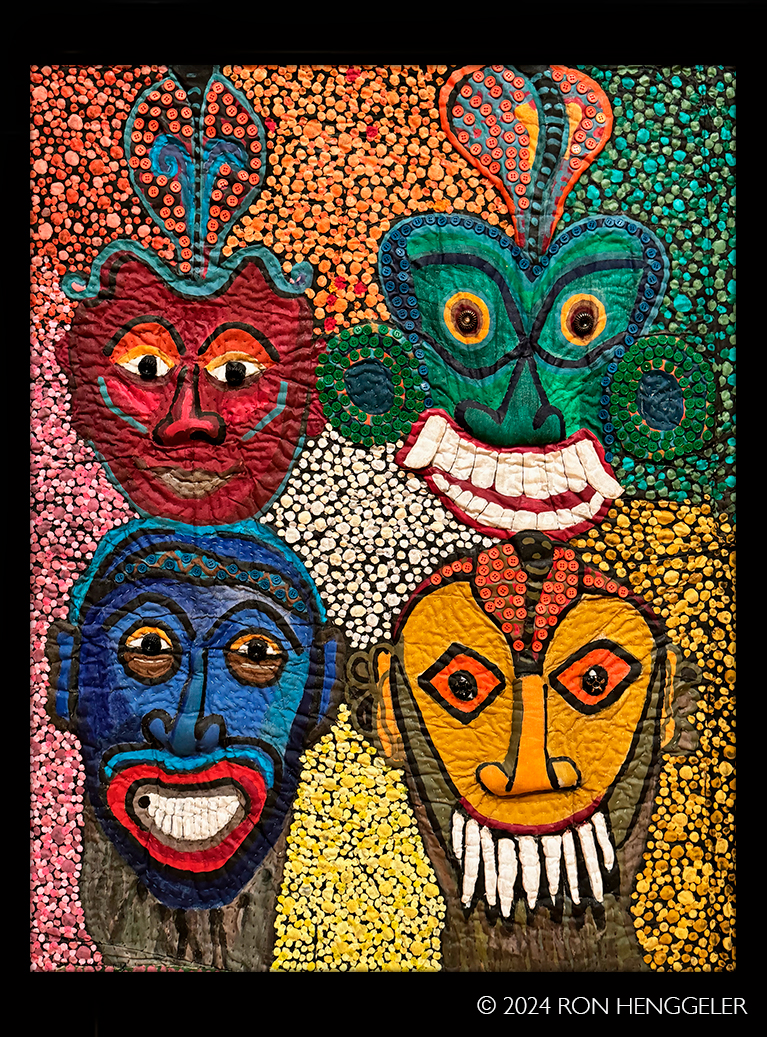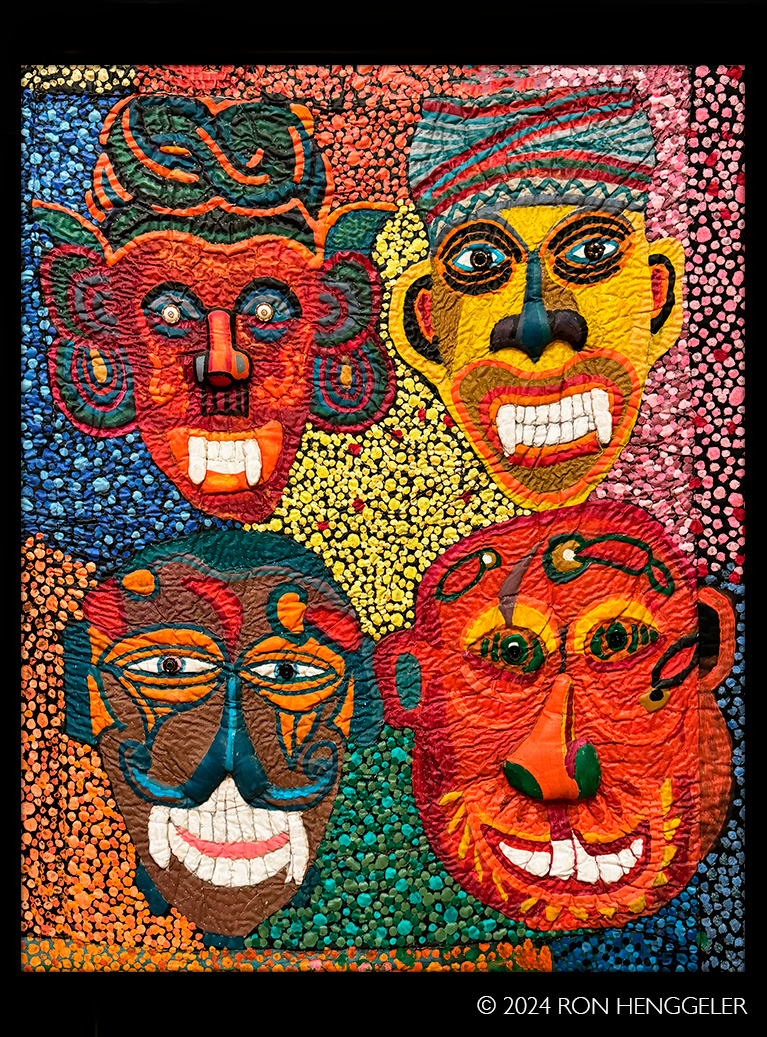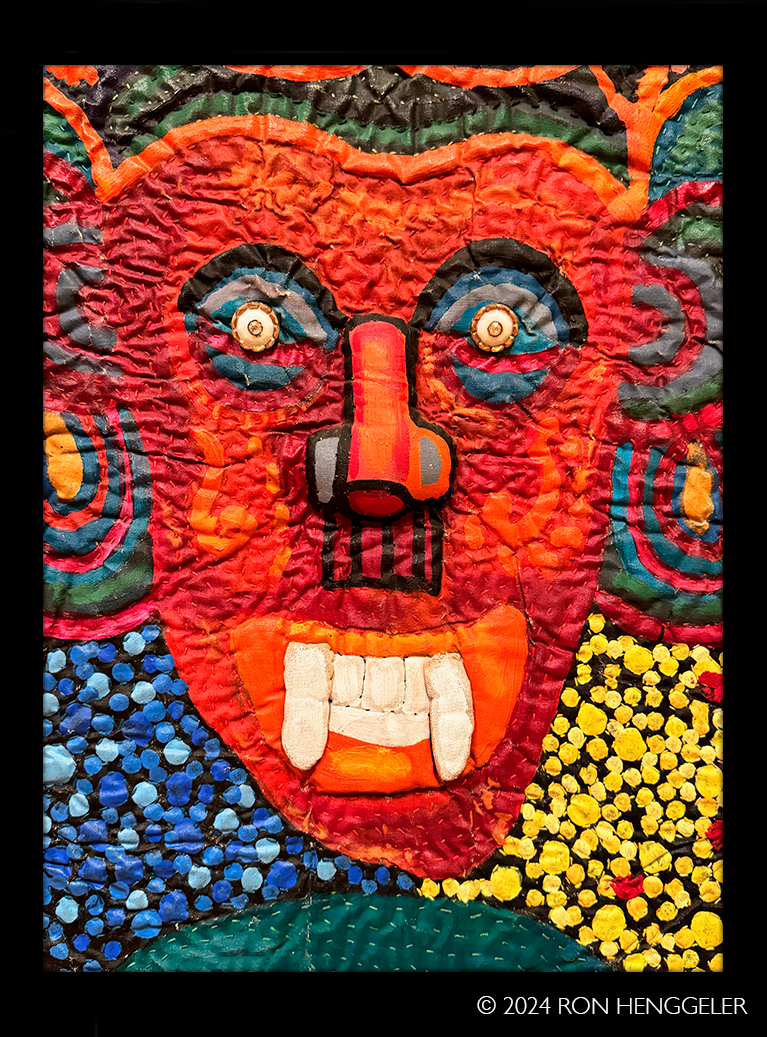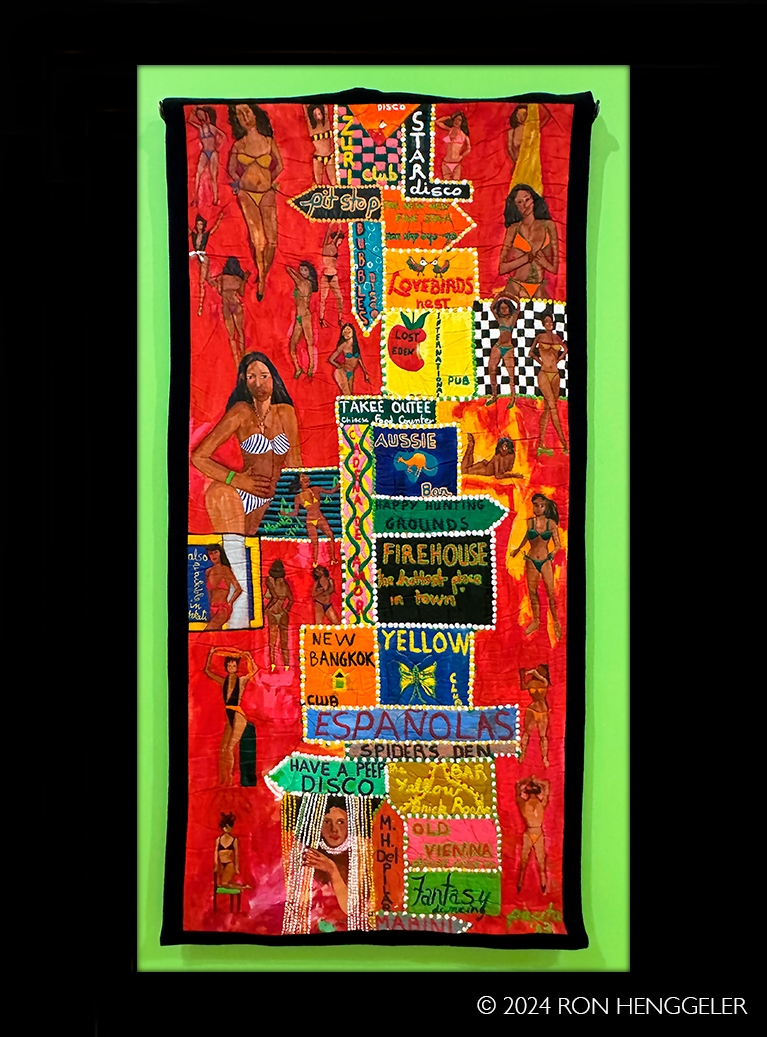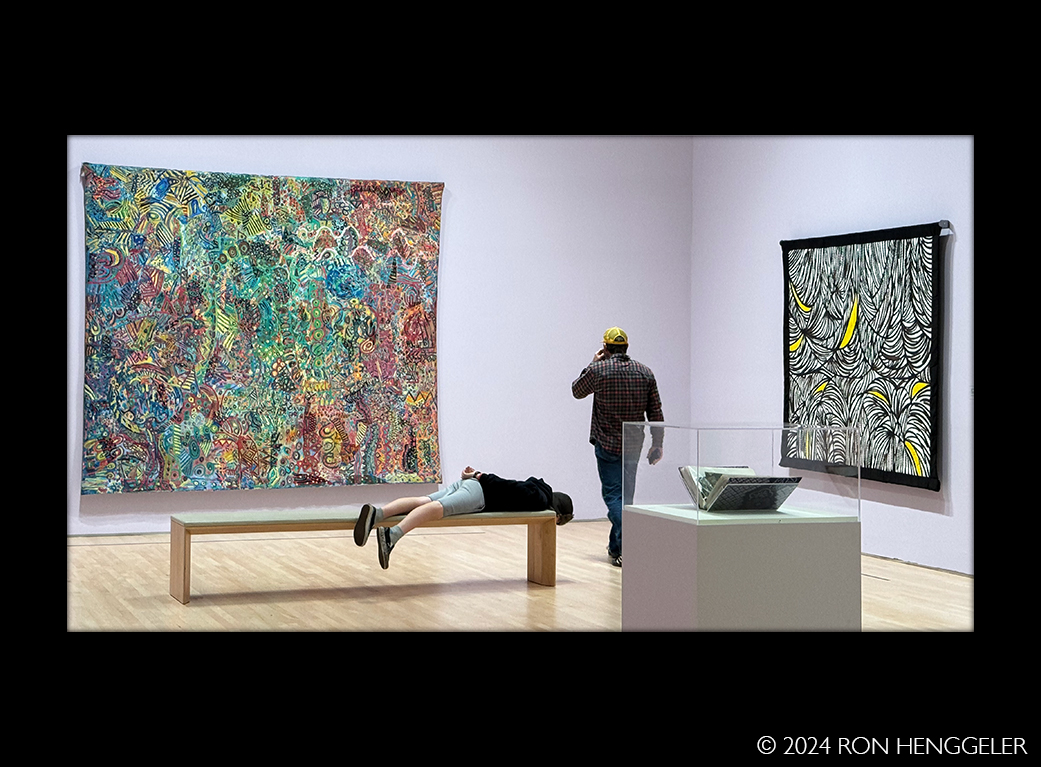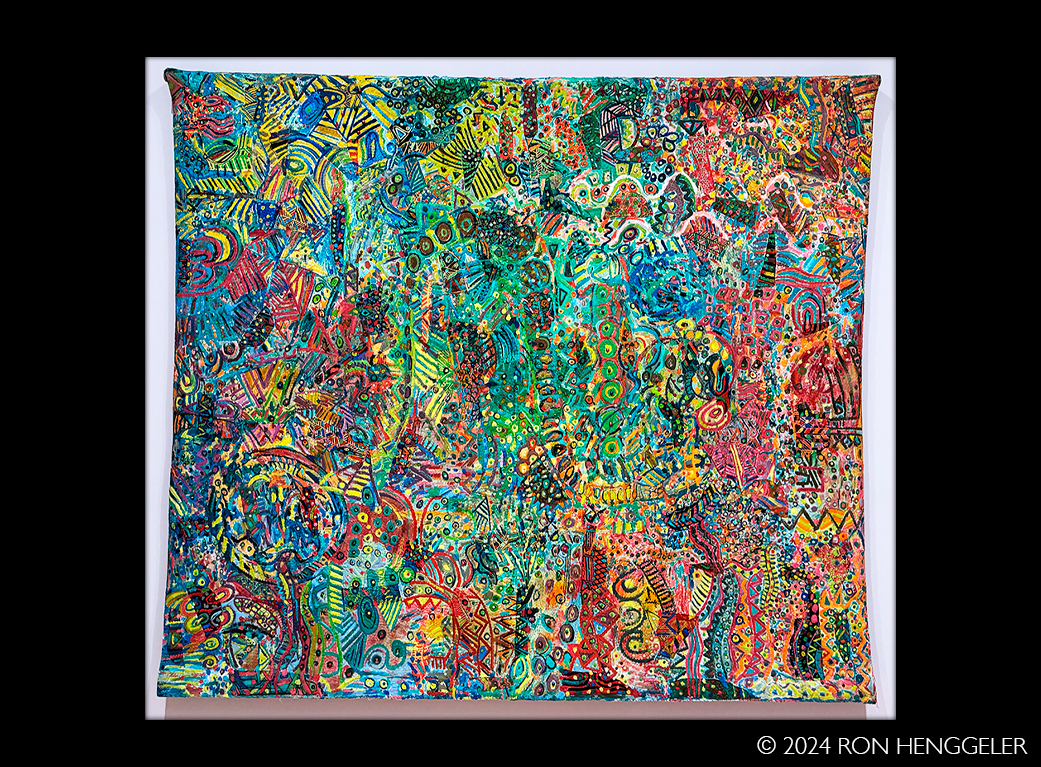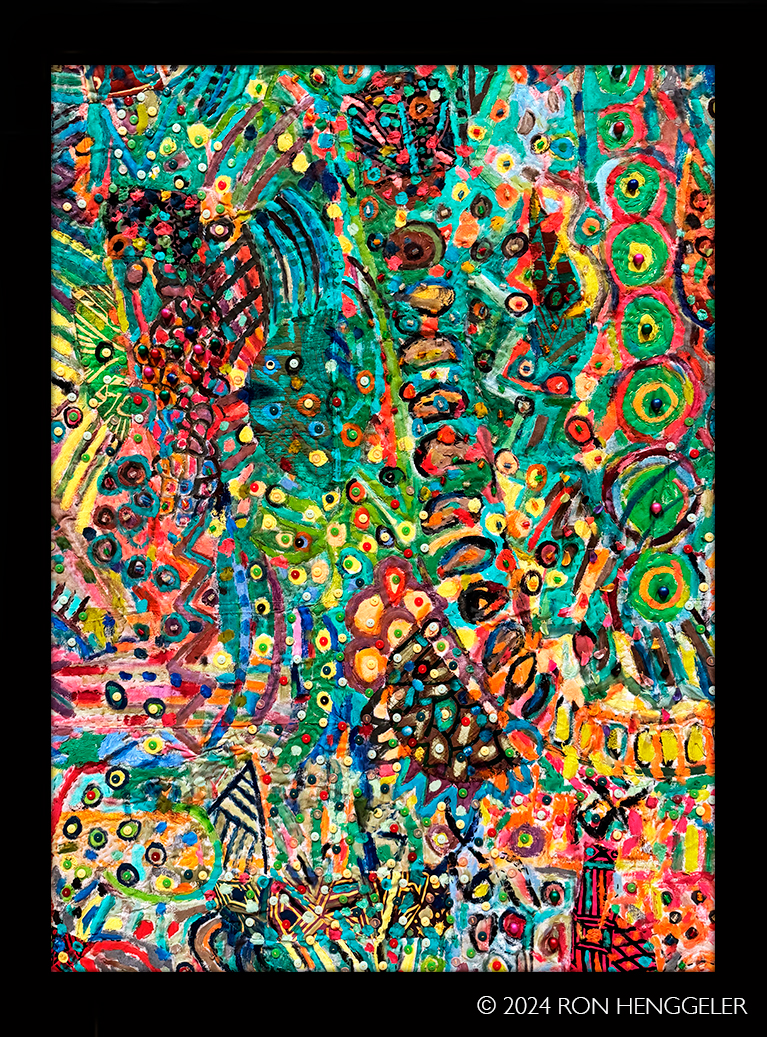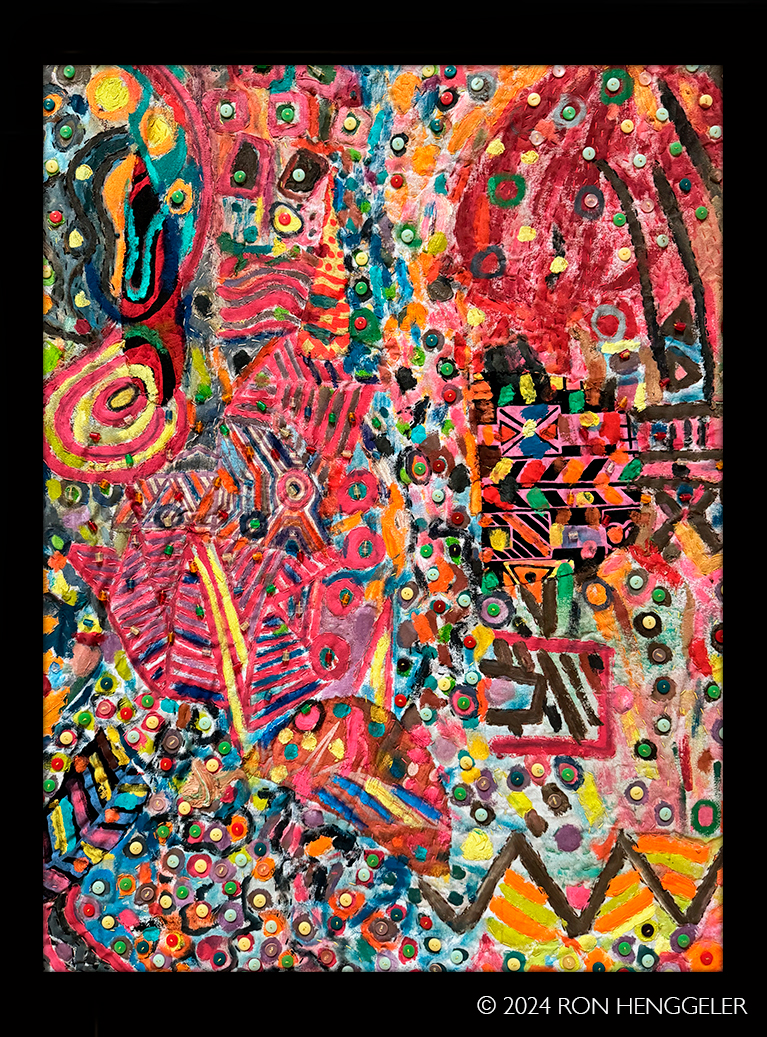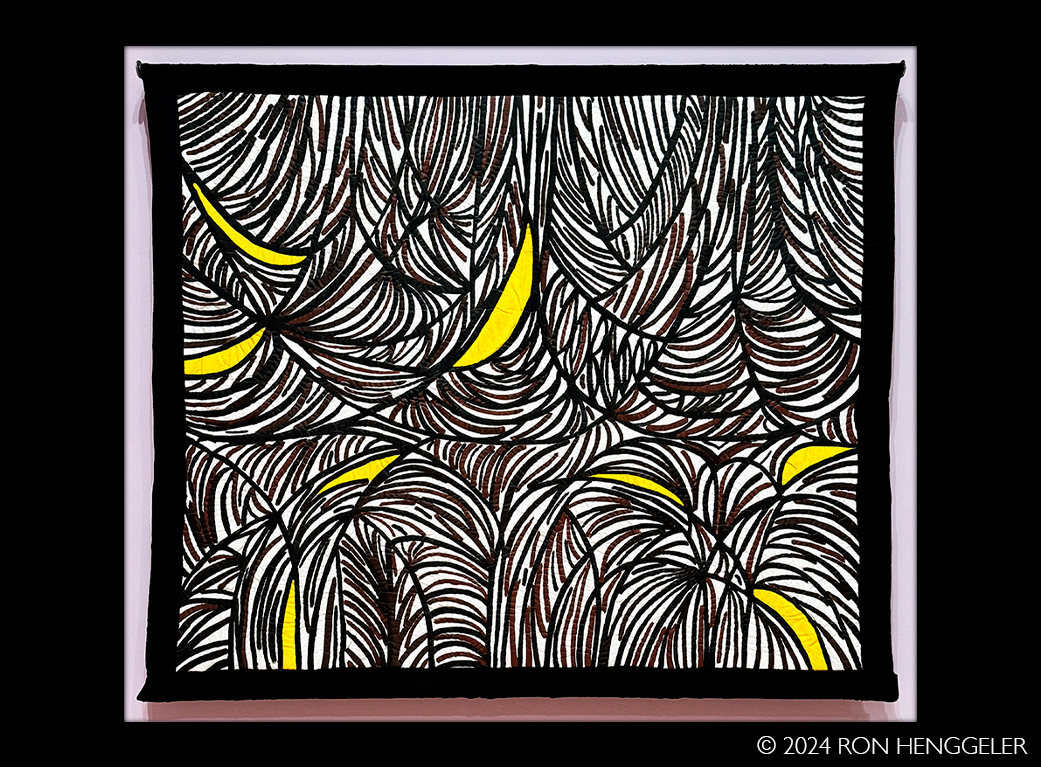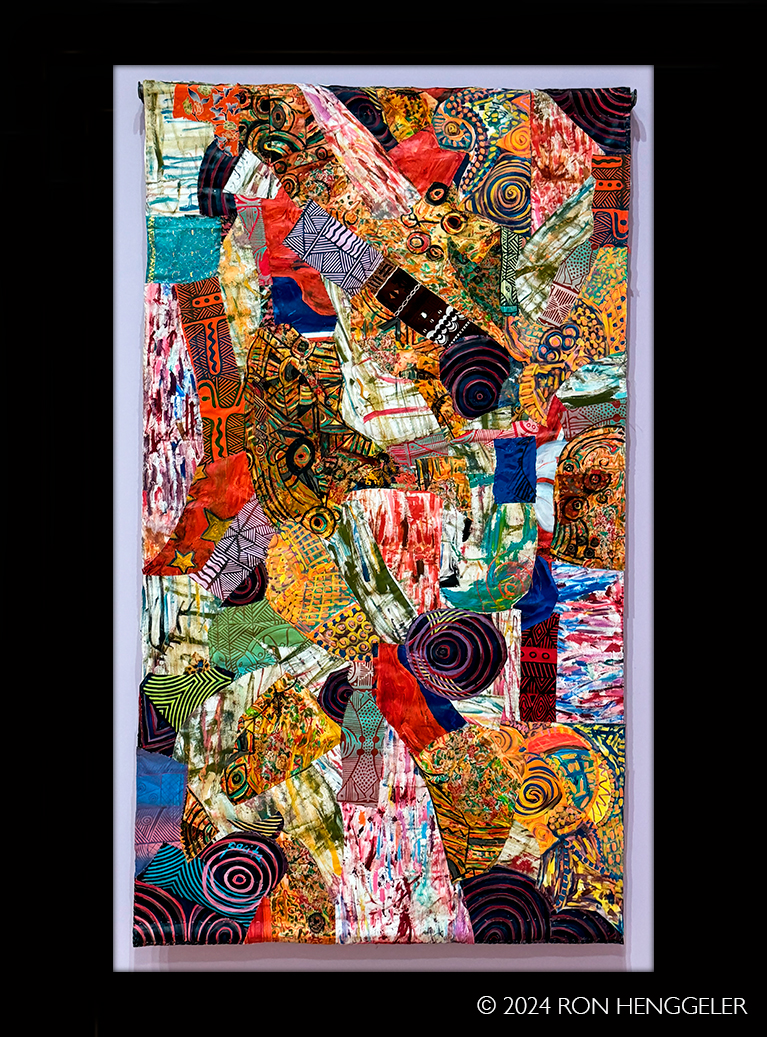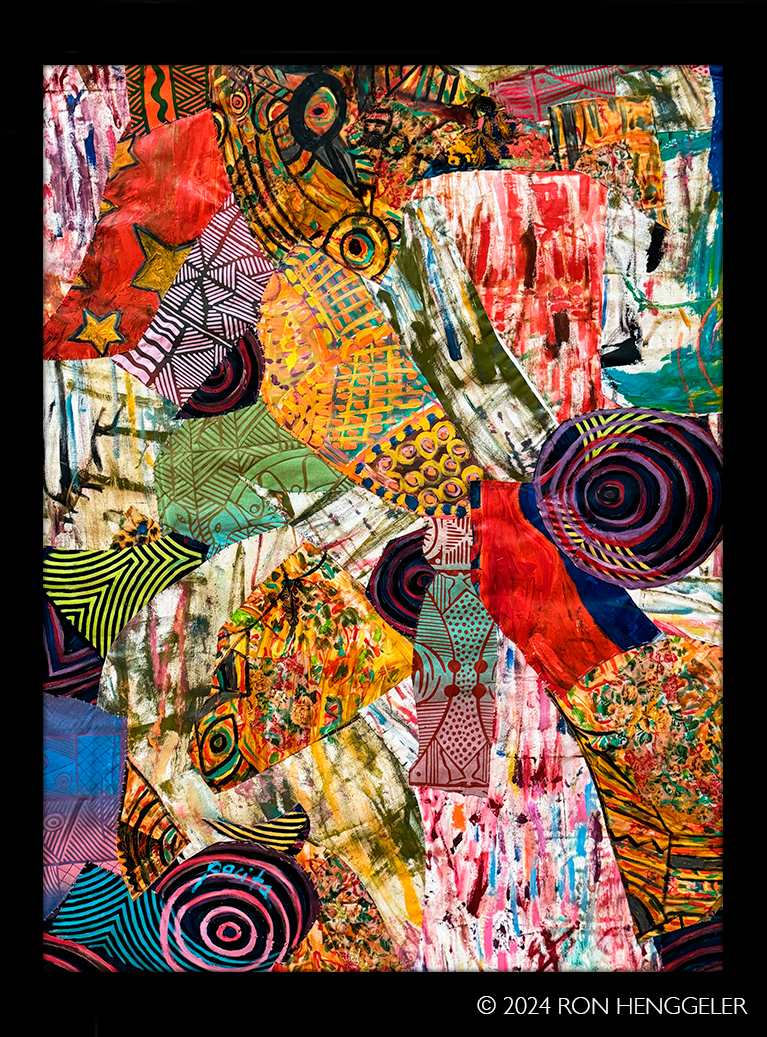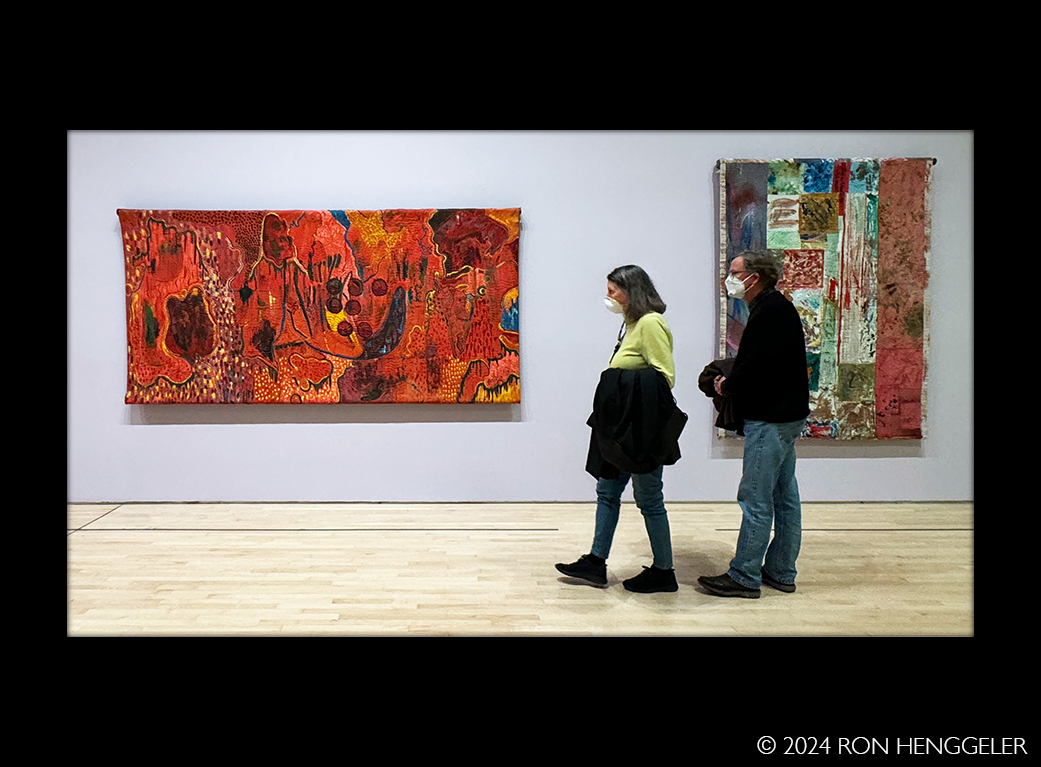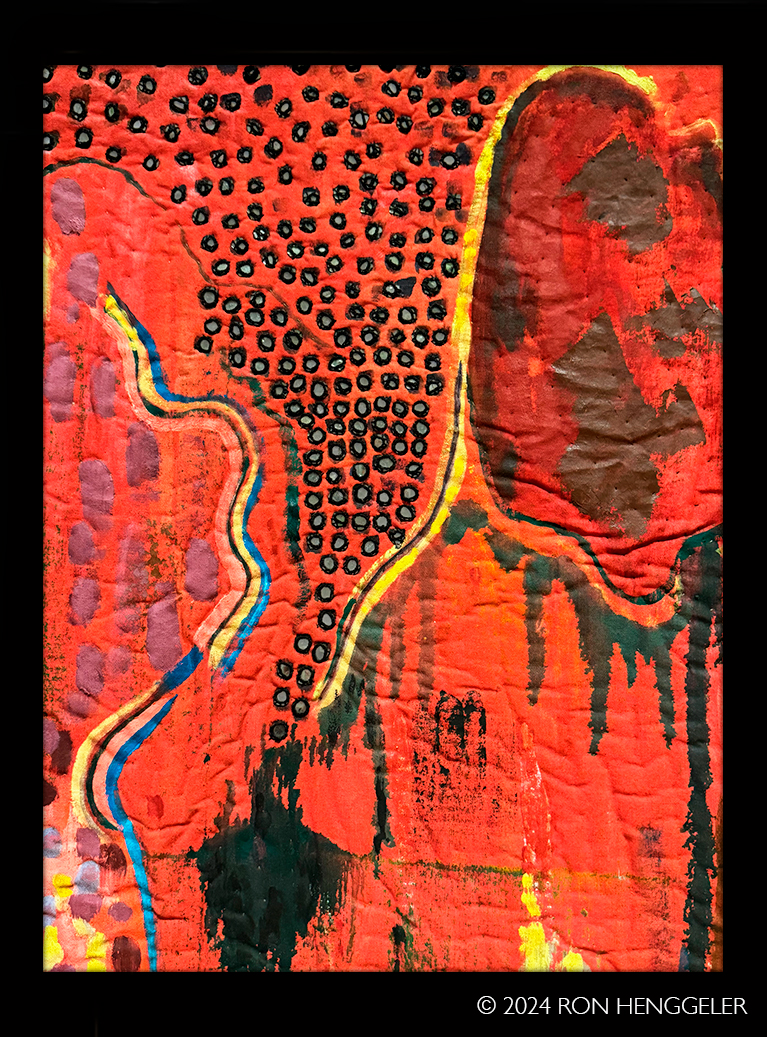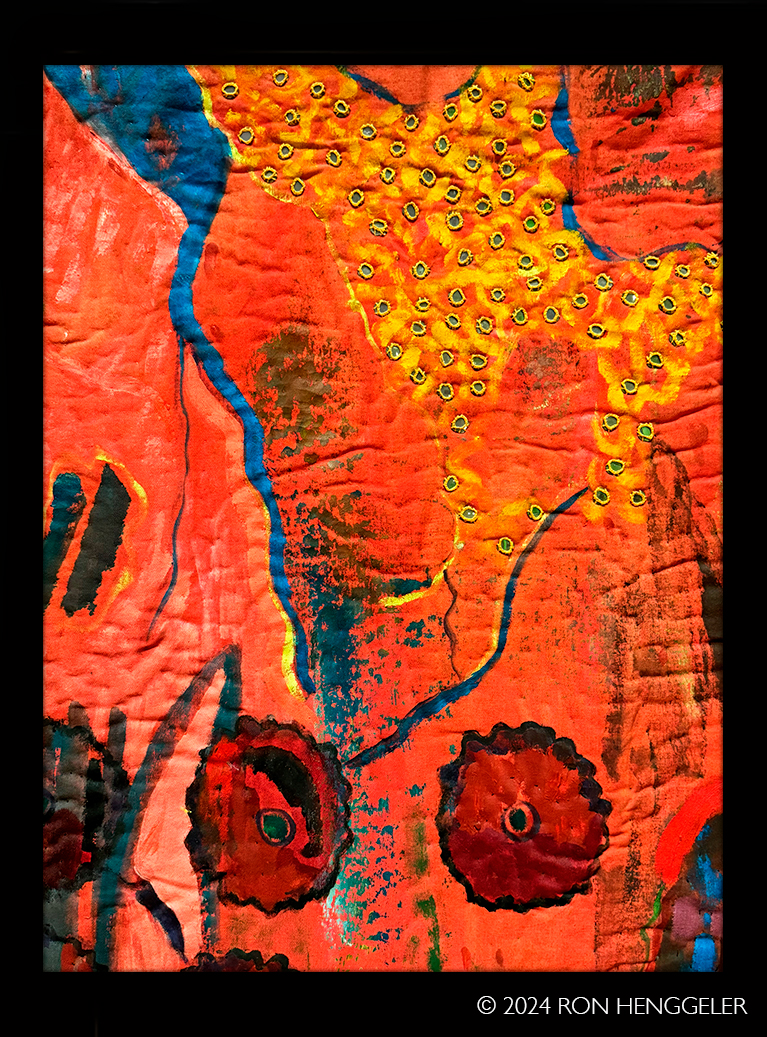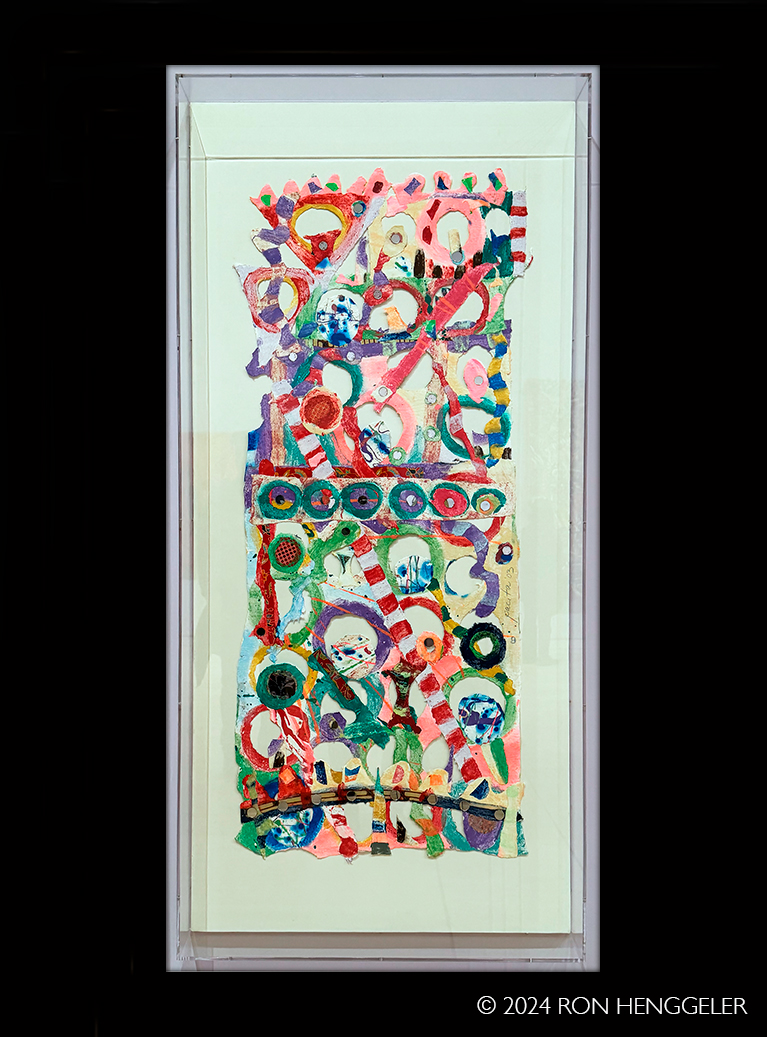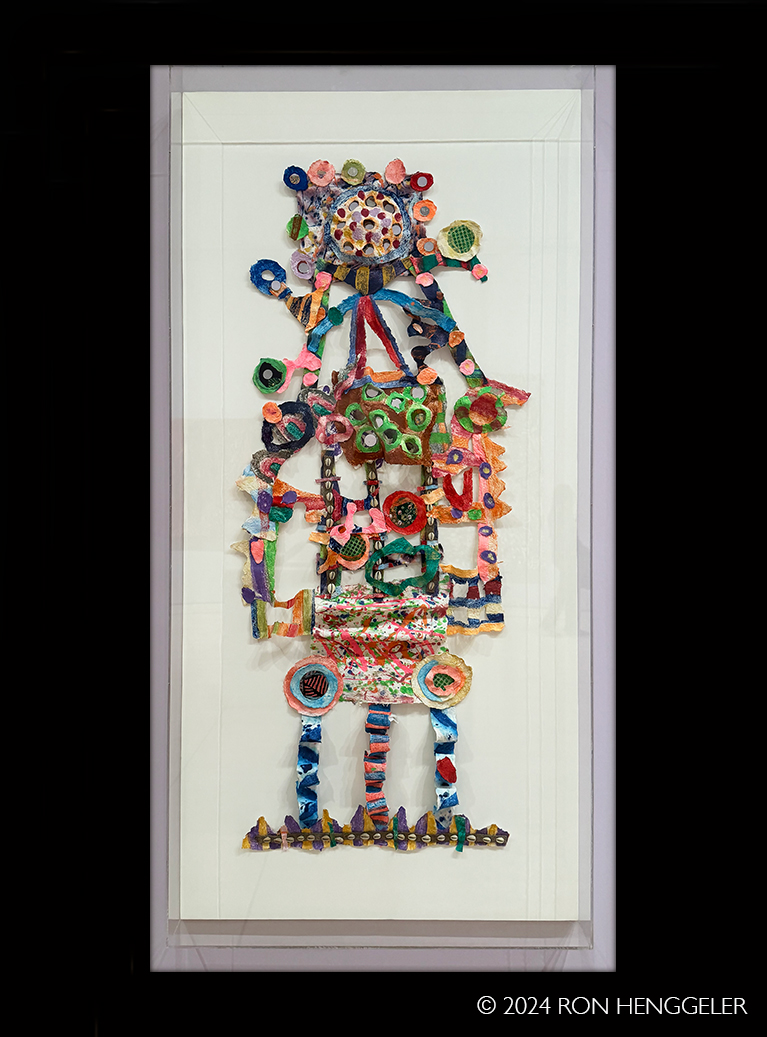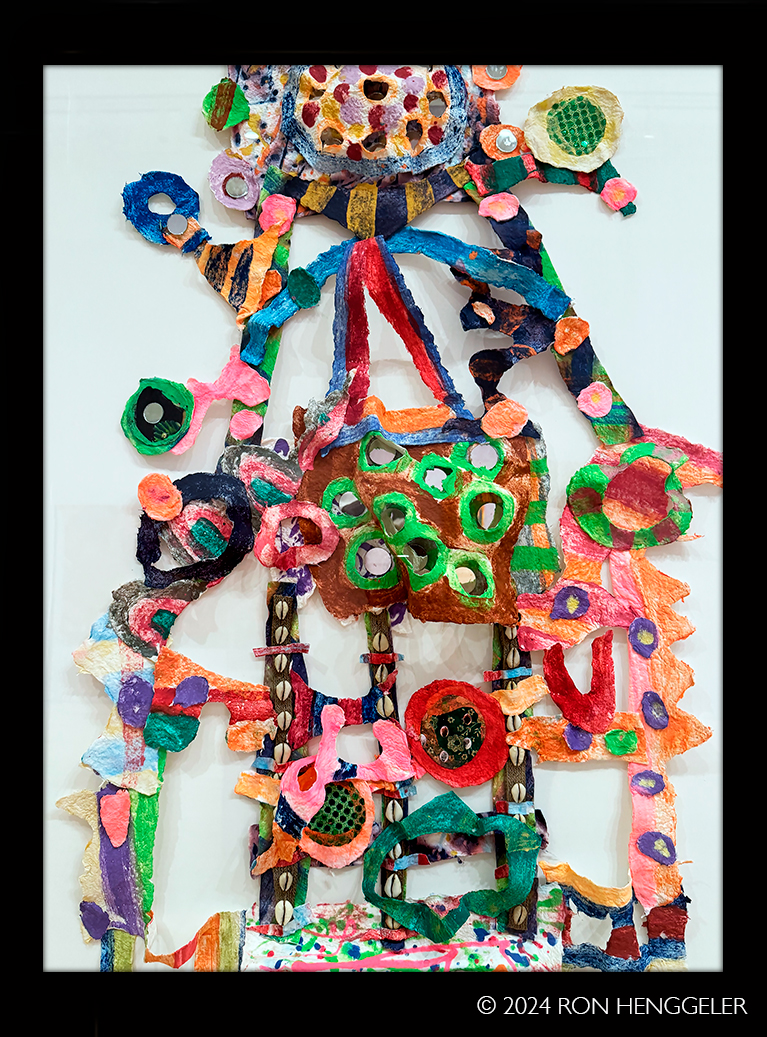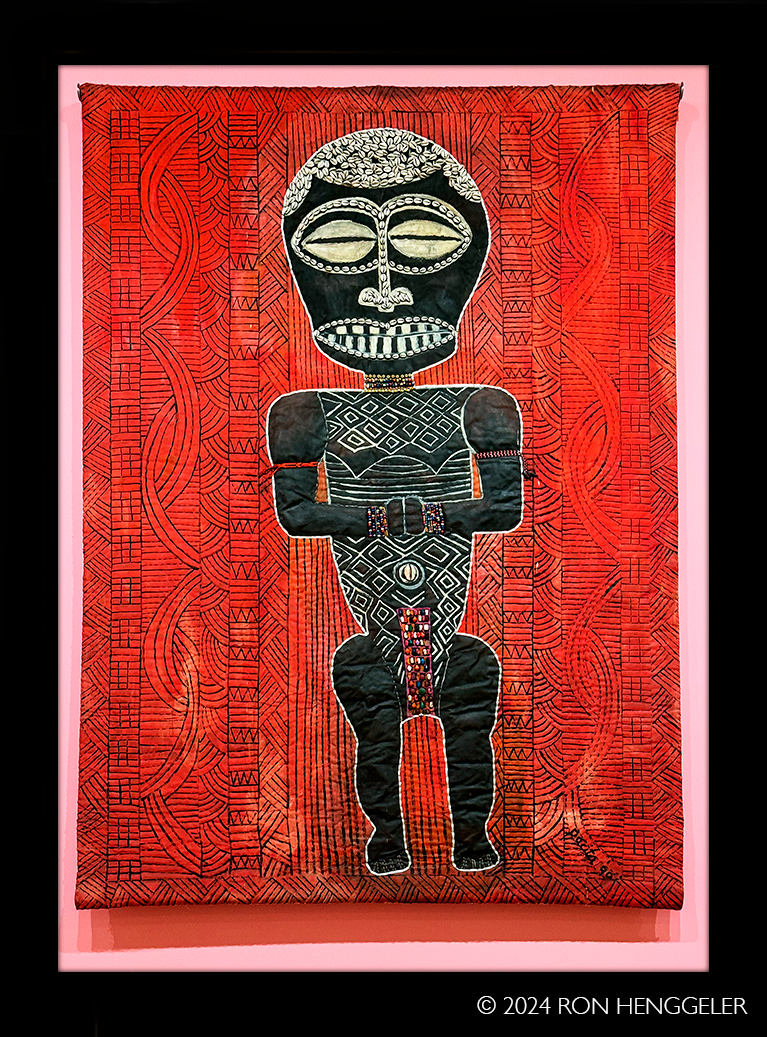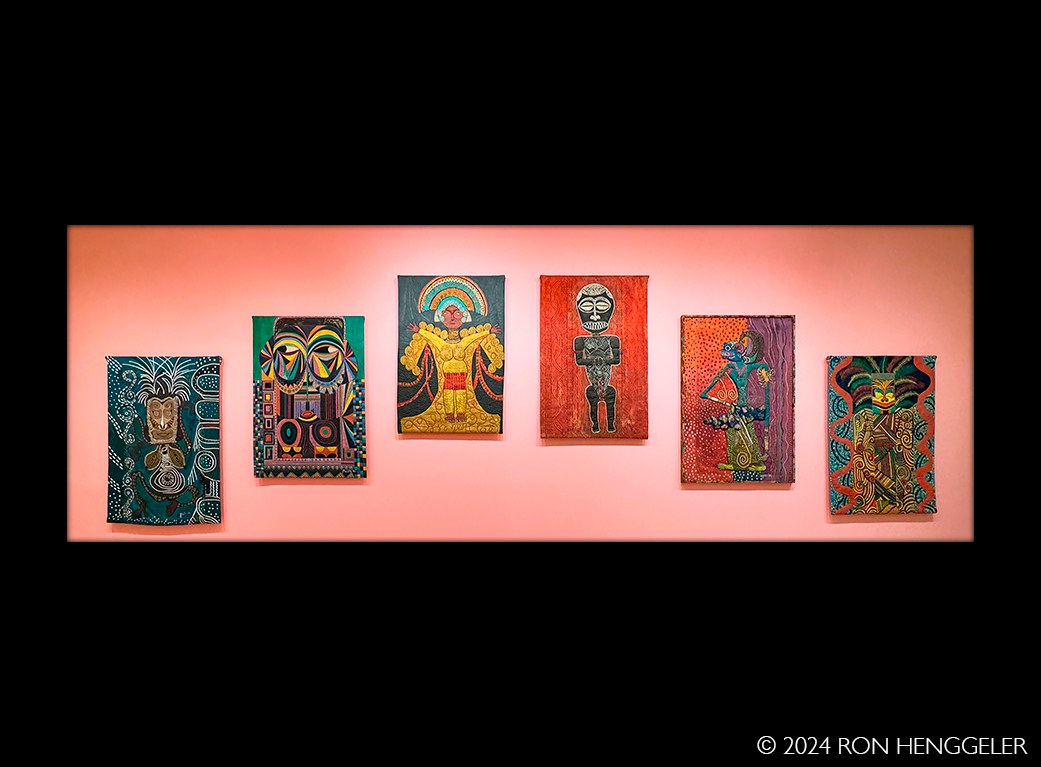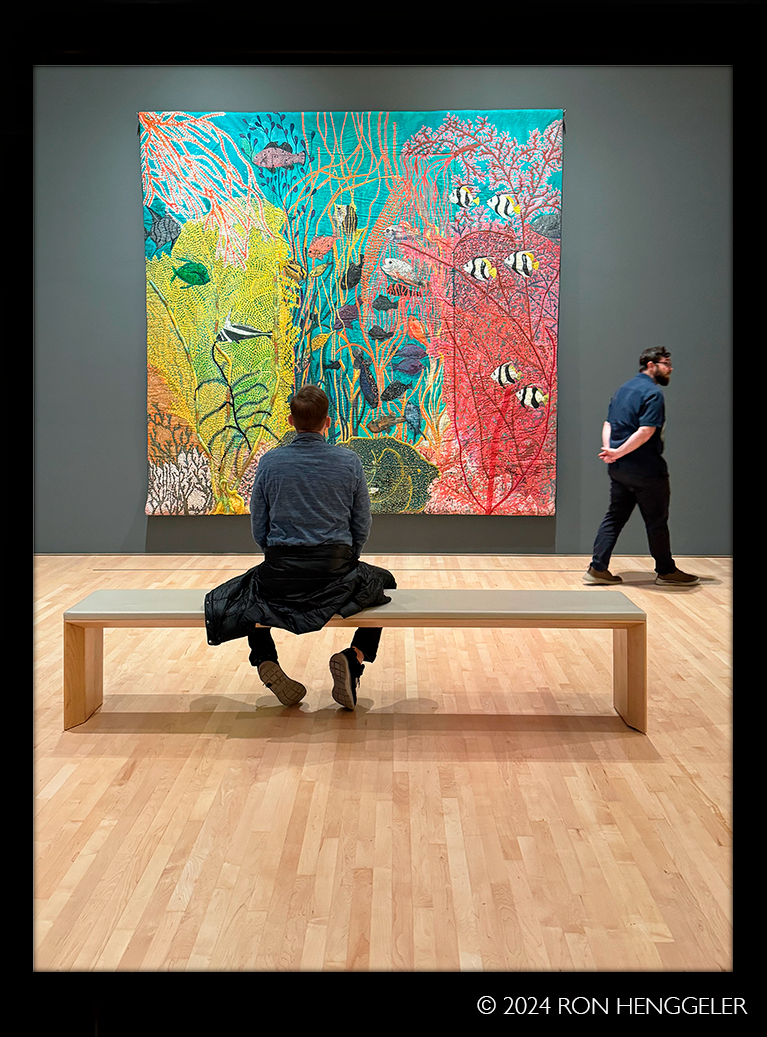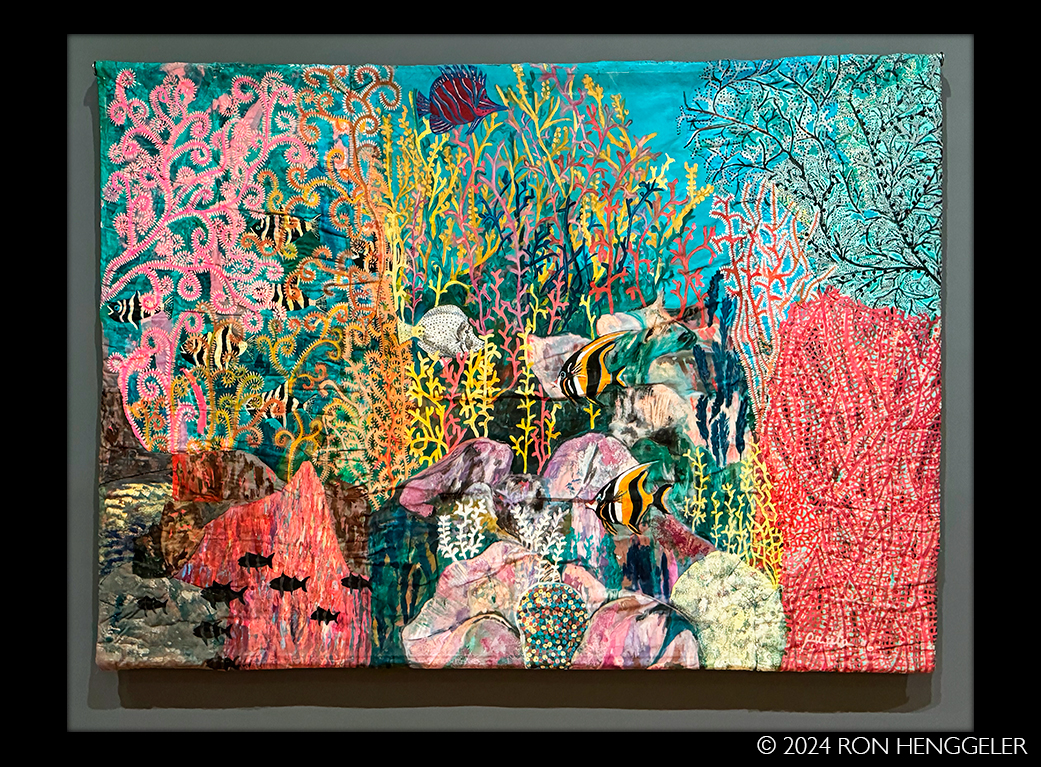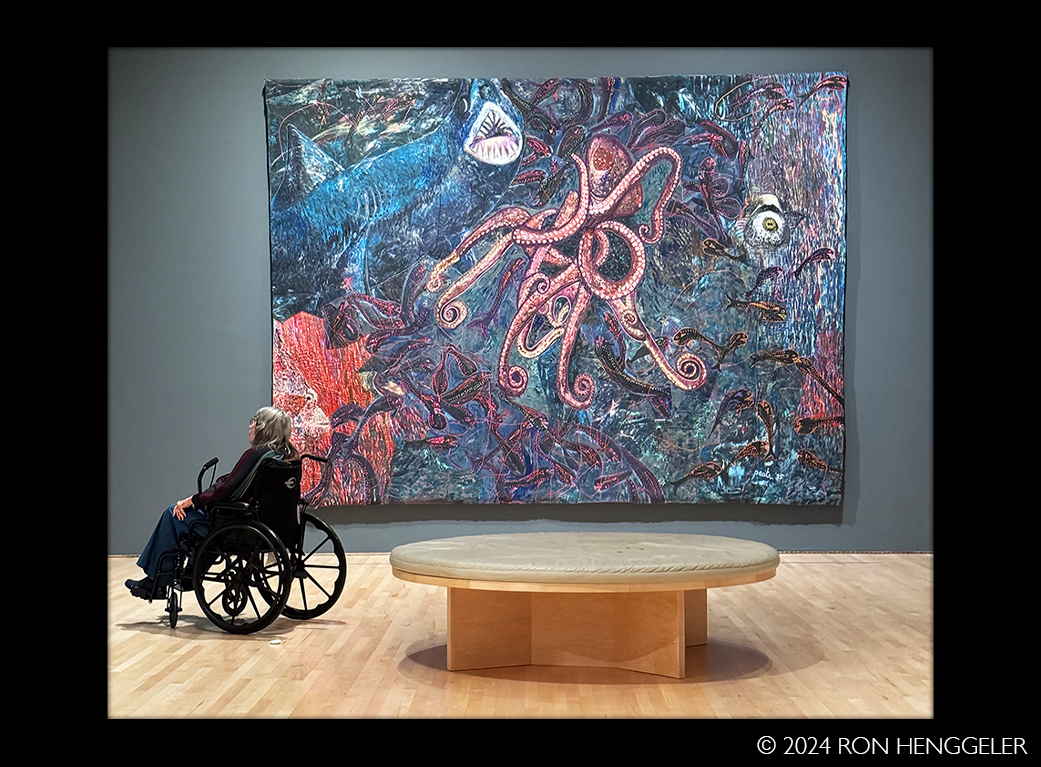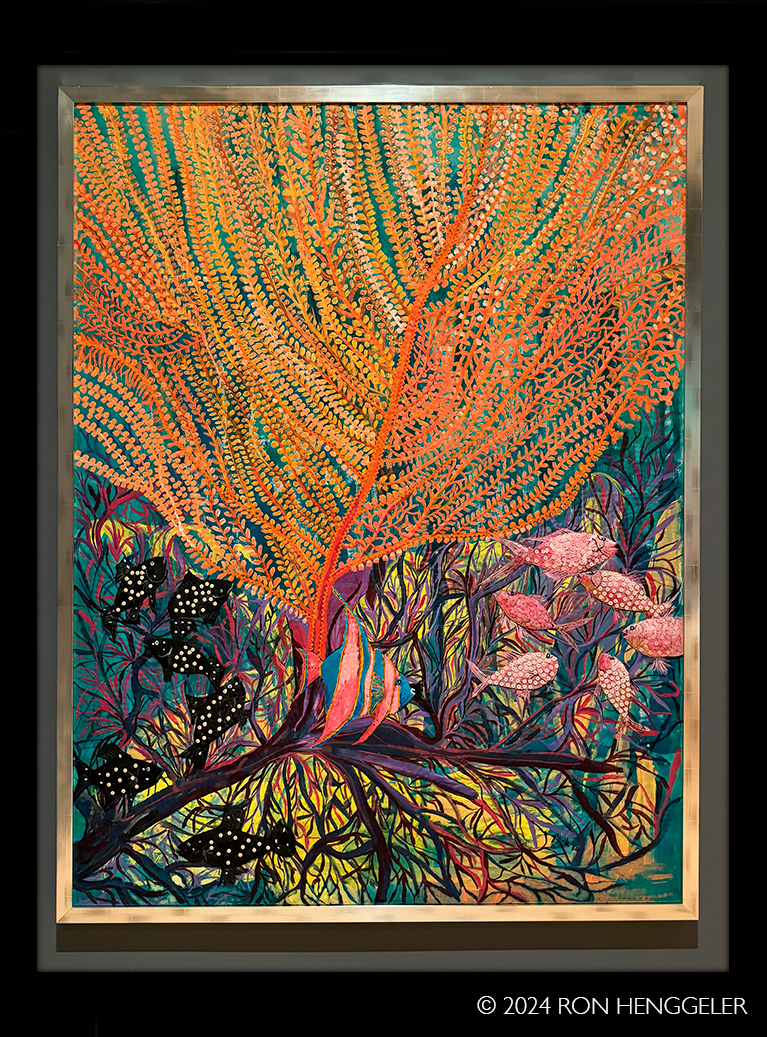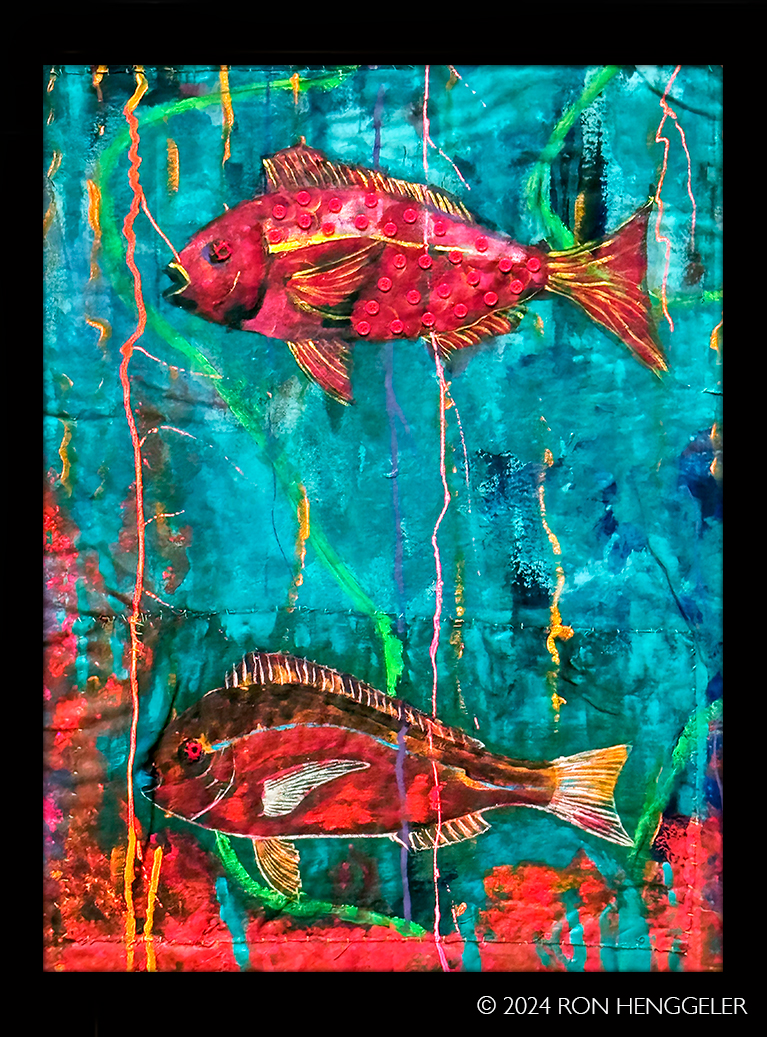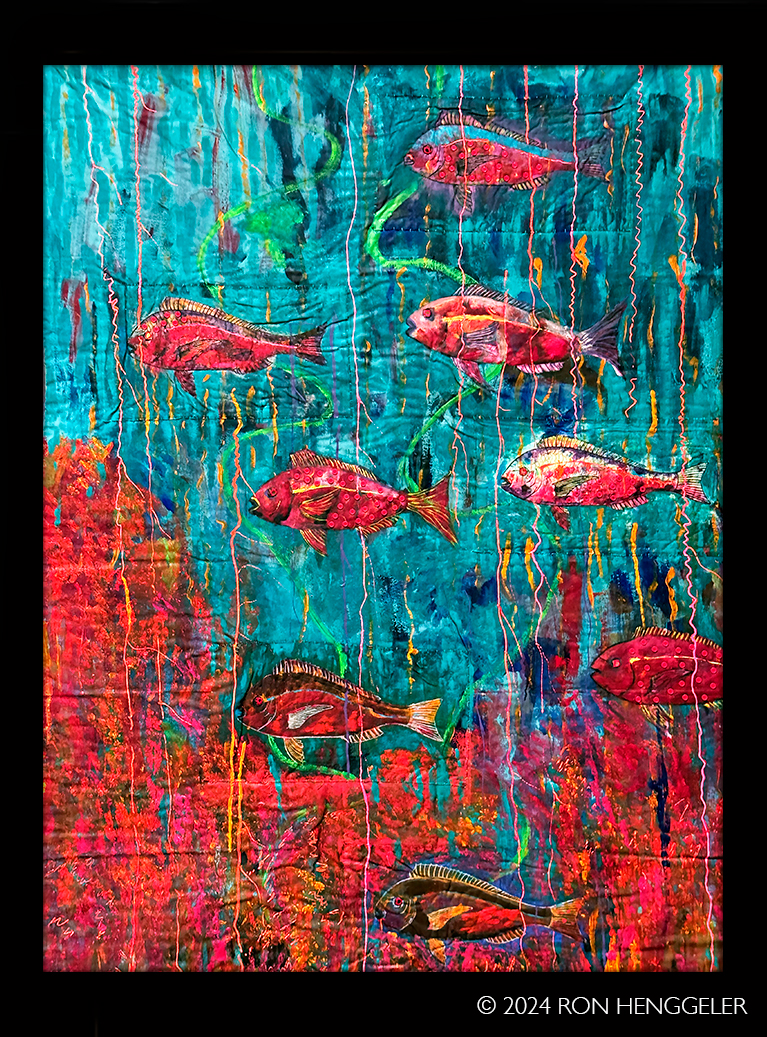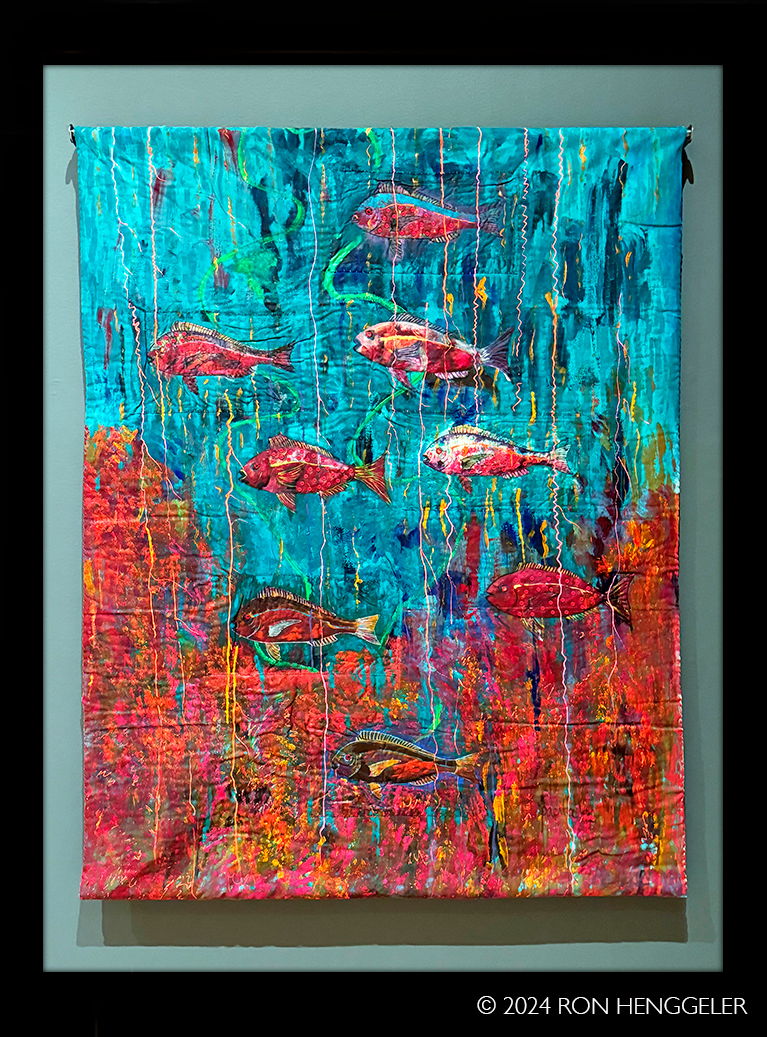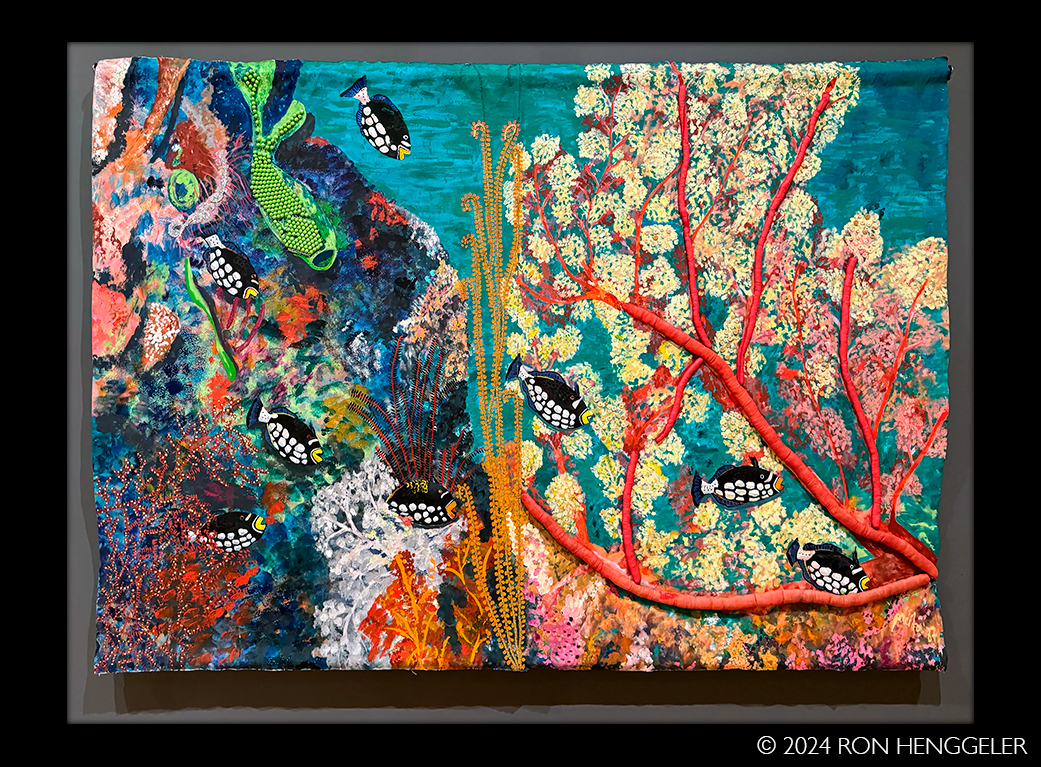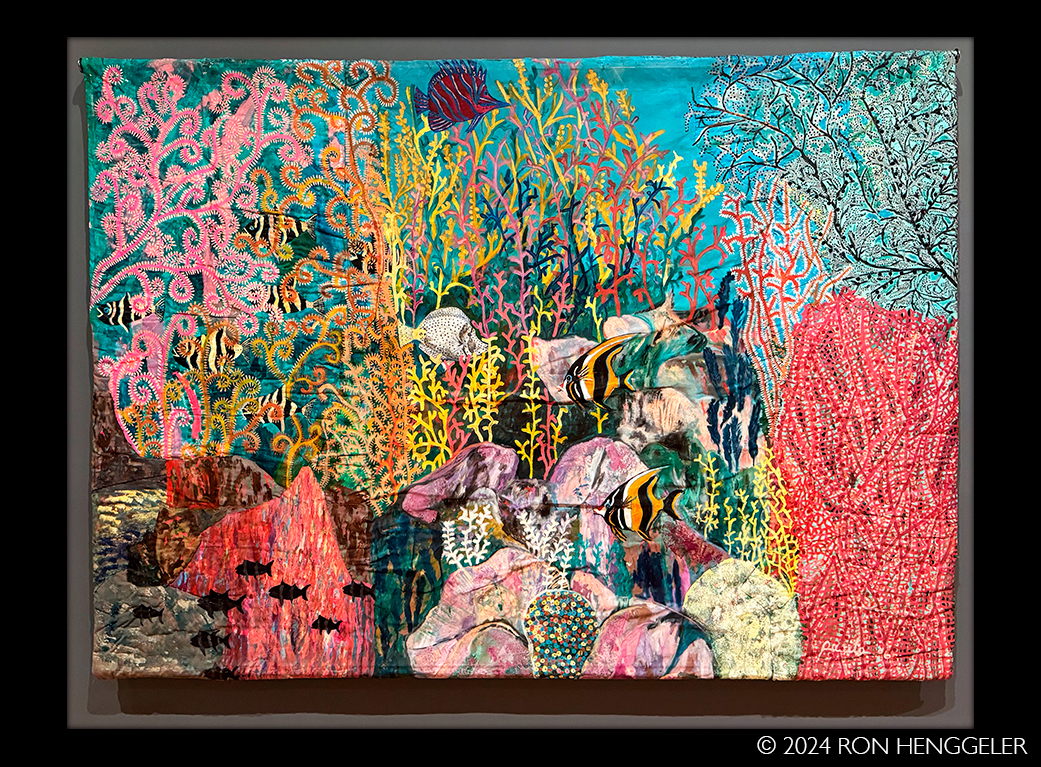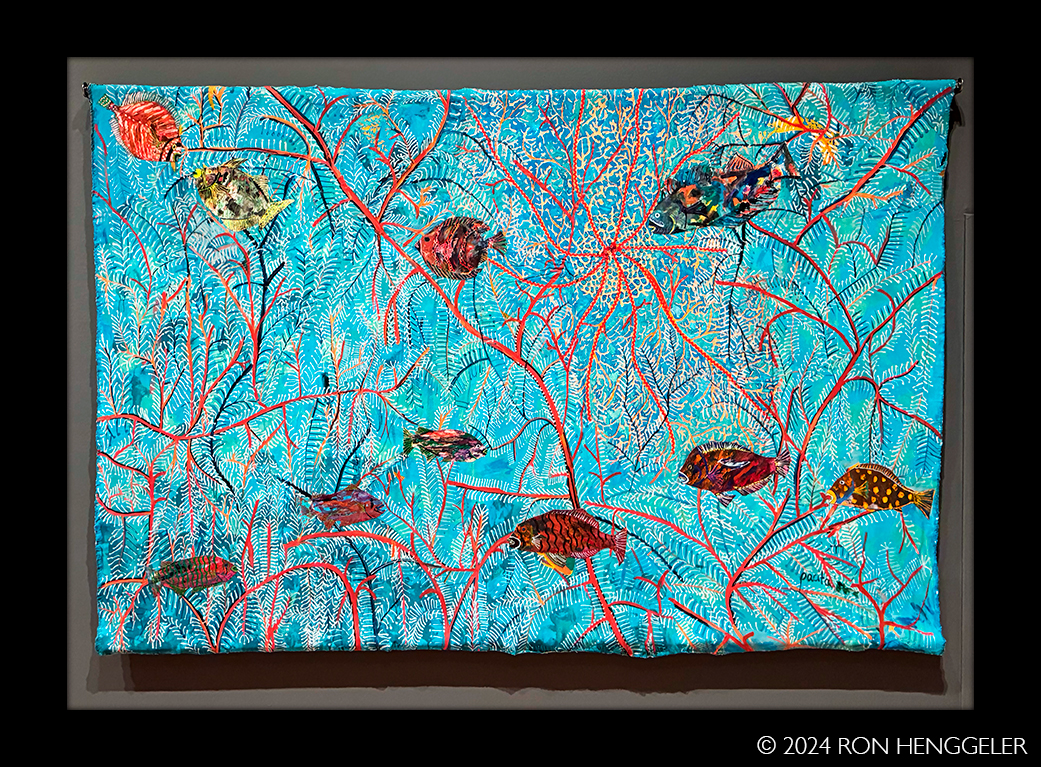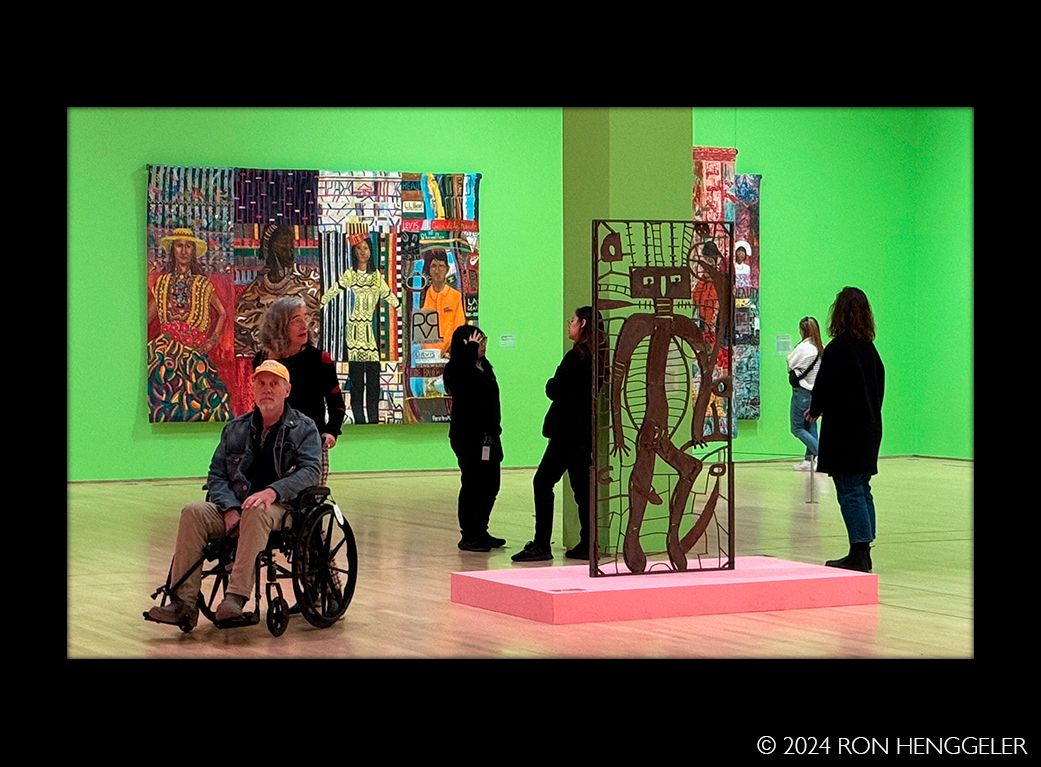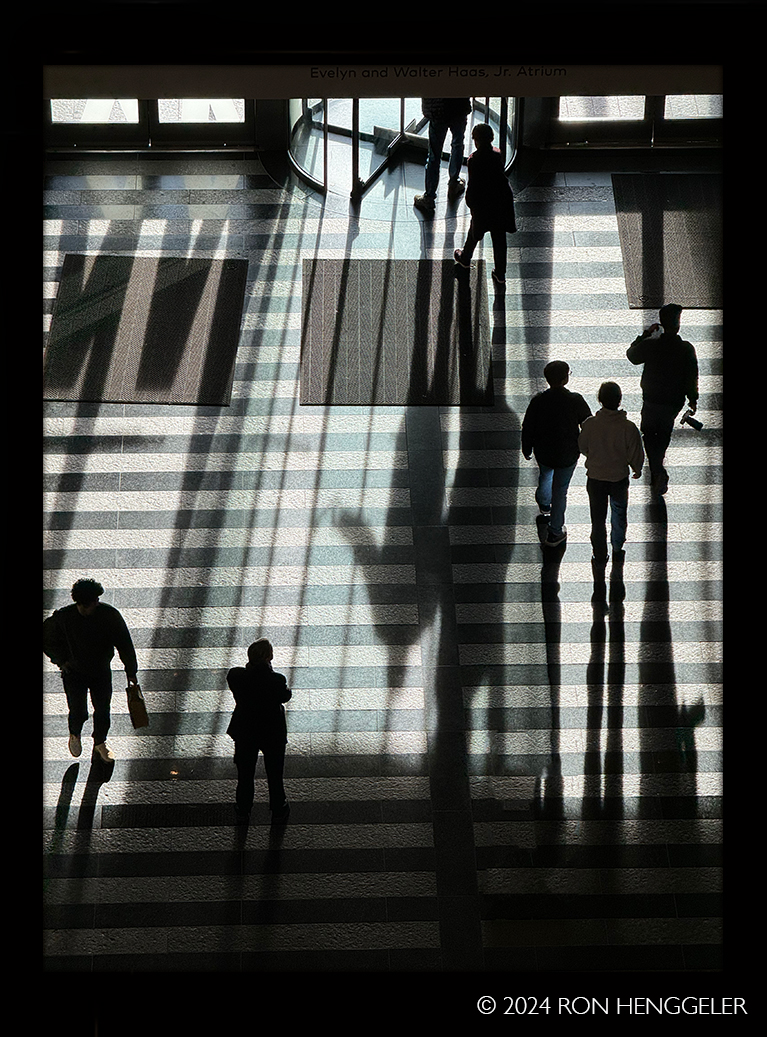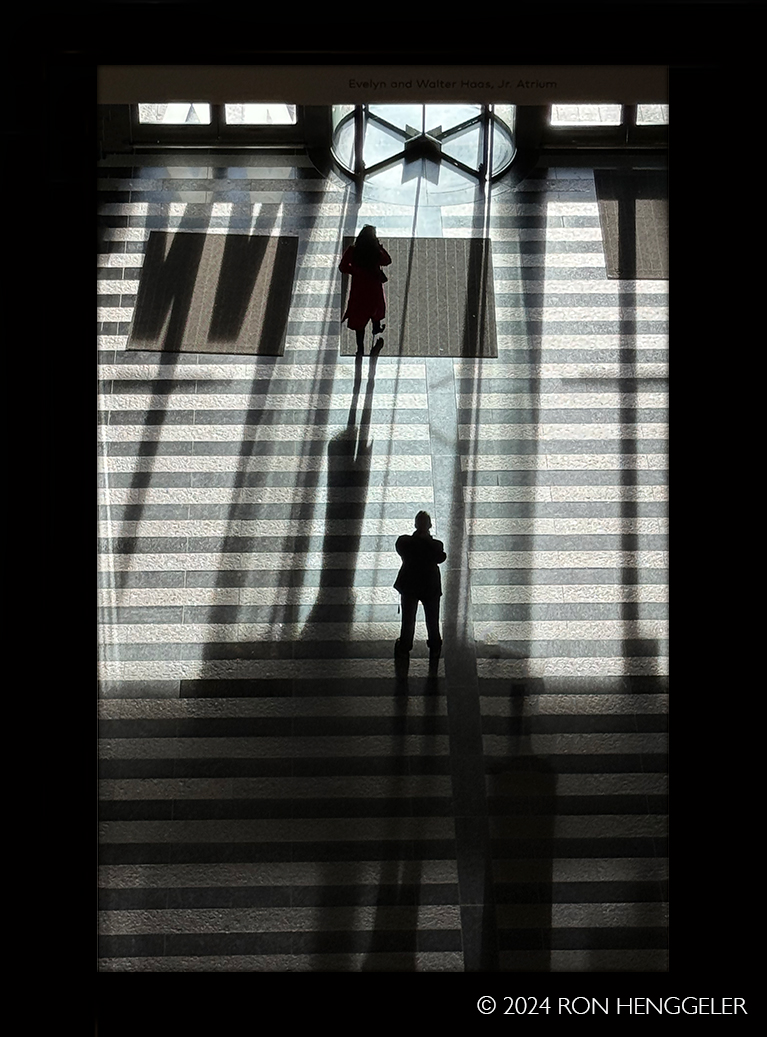| |
January 14, 2024
Pacita Abad at SFMOMA |
|
| |
October 21, 2023–January 28, 2024 |
|
| |
The first retrospective of Pacita Abad (born 1946, Basco, Philippines; died 2004, Singapore) features more than 40 works including her signature trapunto paintings: stuffed, quilted canvases Abad adorned with materials and methods she investigated during her lifetime. Over a 32-year career, the prolific artist made a vast number of artworks that traverse a diversity of subjects—from colorful masks to intricately constructed underwater scenes to abstract compositions—revealing visual, material, and conceptual concerns that still resonate today.
When the 24-year-old Abad left Manila in 1970, she stopped to visit her aunt in San Francisco where she found a city thrumming with radical political and creative activity, from the Women's Liberation, Black Power, and antiwar movements to the Asian American occupation of the -Hotel in Manilatown. She immersed herself in the city, connecting with other immigrants, working at a non-governmental organization (NGO), and studying for her master's degree in history at Lone Mountain College, now the University of San Francisco. This context of Bay Area progressivism formed the crucible of her growing engagement with art. Her extensive world travels, beginning in 1973, solidified her commitment. |
|
|
|
| |
100 Years of Freedom: Batanes to Jolo
1998
Oil, acrylic paint, and Philippine cloth (abaca, pineapple, jusi, and banana fibers; Baguio ikat; Batanes cotton crochet; llocano cotton; Chinese silk and bead; Spanish silk; llongo cloth; Mindanao beads; Zamboanga and Yakan handwoven cloth and sequins) on stitched and dyed cotton fabric
Cantor Arts Center, Stanford University
While traveling through the Philippines, Abad collected bits of fabric, eventually creating this sampler of Indigenous textile work from the 7,641 islands that comprise the Philippines. Thus what may appear as a random assortment of fabrics, from Chinese floral silks from Binondo to her grandmother's Spanish lace mantilla from Cebu, in fact narrates a complex history of the coun-try, which is home to 182 ethnolinguistic groups, 110 of which are Indigenous. For centuries, the Philippines participated in precolonial networks of maritime exchange with peoples from Asia, the Americas, and Europe before the successive waves of Spanish, Japanese, and American colonization began in the sixteenth century.
|
|
| |
|
|
|
| |
Organized thematically, the galleries showcase her bold experiments combining painting and drawing with improvised appliqué and quilting techniques, revealing visual, material, and conceptual concerns that still resonate today.
From Bangladesh to Turkey to Sudan, Abad sought out informal communities of women artists and artisans, eager for an exchange of skills and ideas. She traveled to sixty-three countries on six continents, absorbing textile traditions and techniques including Malian mud cloth, Nigerian tie-dye, and Indonesian batik. These lessons found their greatest expression in her trapunto paintings: canvases that she painted, stuffed, and richly embellished with buttons, cowrie shells, beads, and mirrors. She created hundreds of magnificently textured trapuntos, occasionally enlisting the help of family members and assistants, thereby evoking the communal making that inspired her.
Abad's embrace of quilting and other kinds of needlework confounded critics, who dismissed her works as naïve, childlike, and ethnic. In fact, Abad's multifaceted practice articulated a powerful material politics, reflecting her vision of a nonhierarchical world. This exhibition celebrates Abad's bold self-determination, commitment to social justice, and radical artistic experimentation. |
|
| |
|
|
|
| |
Foothill Cabin
1976
Oil on canvas
Cantor Arts Center, Stanford University
After returning from an eleven-month trip
(1973-74) that took them from Turkey to the Philippines, Abad and her husband, Jack, rented a cabin in the foothills of Palo Alto, California.
Foothill Cabin, one of Abad's earliest paintings, depicts Jack in bed amid the myriad textiles they collected on their travels that decorated the space. Playing with linear perspective, the artist makes Jack the focal point of the composition while enveloping him in vibrant and varied patterns, from the patchwork quilt covering the bed to the Punjabi phulkari hanging on the back wall. With its emphasis on fabric elements, this painting is a formative example of Abad's engagement with textile art. |
|
| |
|
|
|
| |
Bacongo VIII
1988
Acrylic paint, cowrie shells, plastic buttons, and mirrors on stitched, screenprinted, and padded canvas
Walker Art Center, Minneapolis, Butler Family and Clinton and Della Walker Acquisition Funds, 2022 |
|
| |
|
|
|
| |
Flight to Freedom |
|
| |
|
|
|
| |
Old Dhaka
1978
Oil on canvas |
|
| |
|
|
|
| |
Detail of: Flight to Freedom |
|
| |
|
|
|
| |
Detail of: Flight to Freedom |
|
| |
|
|
|
| |
Detail of: Flight to Freedom |
|
| |
|
|
|
| |
Oceania Mask (Dancing Demon)
1983/1990
Acrylic paint and cowrie shells on stitched and padded canvas
Pacita Abad Art Estate |
|
| |
|
|
|
| |
Detail of: Oceania Mask (Dancing Demon)
1983/1990
Acrylic paint and cowrie shells on stitched and padded canvas
Pacita Abad Art Estate |
|
| |
|
|
|
| |
Hopi Mask
1990
Acrylic paint, yarn, and sequins on stitched and padded canvas
Guggenheim Abu Dhabi
Abad created Masks from Six Continents after receiving a public commission from the Metro Center in Washington, DC, in 1990. Recognizing the Metro Center's role as a major transit hub, where people from different countries cross paths during their daily commutes, she was keen to construct a work encompassing the six inhabitable continents of the world. From left to right:
Oceania Mask (Dancing Demon) represents Oceania, European Mask represents Europe, Mayan Mask represents South America, African Mask (Kongo) represents Africa, Subali represents Asia, and Hopi Mask represents North America. |
|
| |
|
|
|
| |
|
|
| |
|
|
|
| |
|
|
| |
|
|
|
| |
|
|
| |
|
|
|
| |
European Mask
1990
Acrylic paint, screenprint, and thread on canvas
Tate: Purchased with funds provided by the Asia Pacific Acquisitions Committee 2019 |
|
| |
|
|
|
| |
|
|
| |
|
|
|
| |
|
|
| |
|
|
|
| |
|
|
| |
|
|
|
| |
|
|
| |
|
|
|
| |
|
|
| |
|
|
|
| |
Caught at the Border
1991
Acrylic paint, oil, mirrors, and sequins on stitched and padded canvas
Pacita Abad Art Estate |
|
| |
|
|
|
| |
Masks trom Six Continents
1990-93 |
|
| |
|
|
|
| |
Haitians Waiting at Guantanamo Bay
1994
Oil, painted cloth, buttons, and beads on stitched and padded canvas
Pacita Abad Art Estate |
|
| |
|
|
|
| |
Immigrant Experience
In 1983 Abad began a series of paintings illuminating the everyday realities of immigrants in the United States. Some works center the triumphs and sufferings of people on the periphery of power, while others refer to specific events such as the Haitian Refugee Crisis (1991-94), the Los Angeles Uprising (1992), and the ongoing detention of migrants at the US-Mexico border.
In portraying working-class immigrants of color at larger-than-life scale, Abad made space for those whose stories are often reduced by racism. These works were first exhibited as a group in 1994, the same year she became a US citizen. |
|
| |
|
|
|
| |
Marcos and His Cronies
1985-95
Mixed media
Singapore Art Museum
Abad's demon figures represent a bold statement of dissent against the Philippine dictator Ferdinand Marcos, who was president from 1965 to 1986. The artist depicts Marcos, surrounded by his generals and other cronies, as he devours the bodies of the Philippine people, represented here by plastic dolls. The composition was inspired by traditional Sinhalese masks used for tovil (healing rituals), which Abad encountered in Sri Lanka in 1984. During this ritual, dancers wear demon masks symbolizing various diseases in an effort to banish the cause of a person's affliction. Abad titled her work Marcos and His Cronies in the middle of a growing resistance movement that led to the dictator's ouster in 1986. |
|
| |
|
|
|
| |
If My Friends Could See Me Now
1991
Acrylic paint, painted canvas, and gold yarn on stitched and padded canvas
San Francisco Museum of Modern Art, purchase, by exchange, through a gift of Peggy Guggenheim
Here, the central figure stands beneath San Francisco's nocturnal skyline, surrounded by the promises of the so-called American Dream-white picket fences, an overflowing grocery cart, and a road outlined in gold. Abad's protagonist is cut directly out of the painting Thanh Lo (1980) from her Cambodian Refugee series (1979-80), portraits of those seeking refuge in humanitarian camps across the Thai border. Resituated in a US context, Thanh Lo stands with arms crossed amid this tapestry of vignettes of Americana, exuding ambivalence about whether she has achieved these dreams through her journey-or whether these are her dreams at all. |
|
| |
|
|
|
| |
I Thought the Streets Were Paved with Gold
1991
Acrylic paint, oil, paintbrush, painted canvas, and painted cloth on stitched and padded canvas
Private collection, London
During a trip to Ellis Island, Abad was struck by a 1903 quote by an Italian immigrant in a museum display: "I came to America because I heard the streets were paved with gold. When I got here, I found out three things: First, the streets weren't paved with gold; second, they weren't paved at all; and third, I was expected to pave them." Abad used the quote as a title for this painting, honoring the labor of immigrants who work as caregivers, housekeepers, electricians, plumbers, construction workers, street vendors, and nurses.
|
|
| |
|
|
|
| |
Detail of: I Thought the Streets Were Paved with Gold
1991
Acrylic paint, oil, paintbrush, painted canvas, and painted cloth on stitched and padded canvas |
|
| |
|
|
|
| |
Cross-cultural Dressing (Julia, Amina,
Maya, and Sammy)
1993
Oil, cloth, and plastic buttons on stitched and padded canvas |
|
| |
|
|
|
| |
Masks from Six Continents
1990-93 |
|
| |
|
|
|
| |
|
|
| |
|
|
|
| |
|
|
| |
|
|
|
| |
|
|
| |
|
|
|
| |
Detail of: Marcos and His Cronies
1985-95
Mixed media |
|
| |
|
|
|
| |
Subali
1983/1990
Acrylic paint, oil, gold cotton, batik cloth, sequins, and rickrack ribbons on stitched and padded canvas
Pacita Abad Art Estate |
|
| |
|
|
|
| |
Marcos and His Cronies
1985-95
Mixed media |
|
| |
|
|
|
| |
Detail of: Subali
1983/1990
Acrylic paint, oil, gold cotton, batik cloth, sequins, and rickrack ribbons on stitched and padded canvas
Pacita Abad Art Estate |
|
| |
|
|
|
| |
Detail of: Hopi Mask
1990 |
|
| |
|
|
|
| |
Hopi Mask
1990
Acrylic paint, yarn, and sequins on stitched and padded canvas
Guggenheim Abu Dhabi
Abad created Masks from Six Continents after receiving a public commission from the Metro Center in Washington, DC, in 1990. Recognizing the Metro Center's role as a major transit hub, where people from different countries cross paths during their daily commutes, she was keen to construct a work encompassing the six inhabitable continents of the world. From left to right:
Oceania Mask (Dancing Demon) represents Oceania, European Mask represents Europe, Mayan Mask represents South America, African Mask (Kongo) represents Africa, Subali represents Asia, and Hopi Mask represents North America. |
|
| |
|
|
|
| |
Detail of: Subali
1983/1990
Acrylic paint, oil, gold cotton, batik cloth, sequins, and rickrack ribbons on stitched and padded canvas |
|
| |
|
|
|
| |
Detail of: Marcos and His Cronies
1985-95
Mixed media |
|
| |
|
|
|
| |
Detail of: Marcos and His Cronies
1985-95
Mixed media |
|
| |
|
|
|
| |
Detail of: Marcos and His Cronies
1985-95
Mixed media |
|
| |
|
|
|
| |
Detail of: Marcos and His Cronies
1985-95
Mixed media |
|
| |
|
|
|
| |
Detail of: Marcos and His Cronies
1985-95
Mixed media |
|
| |
|
|
|
| |
Detail of: Marcos and His Cronies
1985-95
Mixed media |
|
| |
|
|
|
| |
Detail of: Marcos and His Cronies
1985-95
Mixed media |
|
| |
|
|
|
| |
Detail of: Marcos and His Cronies
1985-95
Mixed media |
|
| |
|
|
|
| |
Girls in Ermita
1983
Acrylic paint on stitched and padded muslin
Pacita Abad Art Estate
This work portrays a vivid scene from Ermita, a bustling commercial district in Manila. The painting celebrates the people who work in the area at restaurants, nightclubs, hotels, saunas, and other establishments. Ermita is a center of cultural life dating to the Spanish colonial period and was enlivened by neighboring US military bases established between 1898 and
1941. Destroyed during World War II, the area was later revived and for many years was known as a red-light district. |
|
| |
|
|
|
| |
|
|
| |
|
|
|
| |
The Sky Is Falling, the Sky Is Falling
1998
Oil, plastic buttons, plastic beads, and painted cloth on stitched and padded canvas
|
|
| |
|
|
|
| |
Detail of: The Sky Is Falling, the Sky Is Falling
1998 |
|
| |
|
|
|
| |
Detail of: The Sky Is Falling, the Sky Is Falling
1998 |
|
| |
|
|
|
| |
Freedom from Illusion
1984
Oil and painted cloth on screen printed, stitched, and padded canvas
Pacita Abad Art Estate |
|
| |
|
|
|
| |
Spring Is Coming
2001
Oil and painted cloth on stitched canvas
Pacita Abad Art Estate |
|
| |
|
|
|
| |
Life in the Margins
2002
Oil, printed cloth, and painted cloth stitched on canvas
Pacita Abad Art Estate |
|
| |
|
|
|
| |
Detail of: Life in the Margins
2002 |
|
| |
|
|
|
| |
Liquid Experience
1985
Oil on stitched and padded canvas with mirrors
Shah Garg Collection
The Marcos regime (1965-86) initiated large-scale infrastructure projects across the Philippines-erecting Brutalist concrete monuments and whitewashing city walls-in a show of presidential power. This work was influenced by the colorful layers of peeling paint in Manila and other urban areas in Latin America, Africa, Asia, and Oceania.
Bright reds and pinks pool together with remnants of graffiti and an underlayer of green, blue, and purple hues. With its coded reference to the country's declining infrastructure, Abad's celebration of color is also a sharp critique of the Marcos administration and its endorsement of Western forms of Modernism. |
|
| |
|
|
|
| |
Detail of: Liquid Experience
1985
Oil on stitched and padded canvas with mirrors |
|
| |
|
|
|
| |
Detail of: Liquid Experience
1985
Oil on stitched and padded canvas with mirrors |
|
| |
|
|
|
| |
Buns and Bread
2003
19-color paper pulp and mixed media on shaped, handmade STPI paper assemblage |
|
| |
|
|
|
| |
Self-portrait
2003
24-color paper pulp and mixed media on shaped, handmade STPI paper assemblage
In 2002 Abad was an artist in residence at the Singapore Tyler Print Institute. There, she collaborated with printmakers and papermakers to create a new body of work called Circles in My Mind. Rather than traditionally drawing or printing on paper, Abad experimented with repeating circular motifs in three-dimensional paper assemblages. At this time, Abad was battling cancer. Choosing to live her life to its fullest, she took on an ambitious commission to paint the Alkaff Bridge, a 180-foot pedestrian walkway crossing the Singapore River. Working with a team, she painted the bridge with thousands of multicolored circles that echo the shapes of this series. |
|
| |
|
|
|
| |
Detail of: Self-portrait
2003
24-color paper pulp and mixed media on shaped, handmade STPI paper assemblage |
|
| |
|
|
|
| |
African Mask (Kongo)
1990
Acrylic paint, beads, shells, handwoven yarn, padded cloth, and painted canvas on stitched cloth
Pacita Abad Art Estate |
|
| |
|
|
|
| |
Mayan Mask
1990
Acrylic paint, buttons, beads, mirrors, handwoven cloth, rickrack ribbons, and sequins on stitched and padded cloth
Paulino and Hetty Que, Manila, Philippines |
|
| |
|
|
|
| |
Masks trom Six Continents
1990-93
LEFT TO RIGHT
Oceania Mask (Dancing Demon)
1983/1990
Acrylic paint and cowrie shells on stitched and padded canvas
Pacita Abad Art Estate
European Mask
1990
Acrylic paint, screenprint, and thread on canvas
Tate: Purchased with funds provided by the Asia Pacific Acquisitions Committee 2019
Mayan Mask
1990
Acrylic paint, buttons, beads, mirrors, handwoven cloth, rickrack ribbons, and sequins on stitched and padded cloth
Paulino and Hetty Que, Manila, Philippines
African Mask (Kongo)
1990
Acrylic paint, beads, shells, handwoven yarn, padded cloth, and painted canvas on stitched cloth
Pacita Abad Art Estate
Subali
1983/1990
Acrylic paint, oil, gold cotton, batik cloth, sequins, and rickrack ribbons on stitched and padded canvas
Pacita Abad Art Estate
Hopi Mask
1990
Acrylic paint, yarn, and sequins on stitched and padded canvas
Guggenheim Abu Dhabi
Abad created Masks from Six Continents after receiving a public commission from the Metro Center in Washington, DC, in 1990. Recognizing the Metro Center's role as a major transit hub, where people from different countries cross paths during their daily commutes, she was keen to construct a work encompassing the six inhabitable continents of the world. From left to right:
Oceania Mask (Dancing Demon) represents Oceania, European Mask represents Europe, Mayan Mask represents South America, African Mask (Kongo) represents Africa, Subali represents Asia, and Hopi Mask represents North America. |
|
| |
|
|
|
| |
|
|
| |
|
|
|
| |
Underwater Wilderness
In the mid-1980s, Abad learned to scuba dive. The rich flora and fauna of worlds she witnessed beneath the sea provided new inspiration for her use of color, texture, and pattern. Taking her cue from the subaquatic realm, Abad created a group of large-scale trapunto paintings that depict brilliantly colored scenes of marine life. The series underscores the artist's sensitivity to the precarious nature of Earth's ecosystems. "It is such a peaceful environment down there that one feels like an infidel intruding into somewhere sacred," she said. "Every time I dive, I feel like saying, 'Excuse me, but here I come again!'"
When these works were first shown in 1986, Abad constructed an immersive experience, covering the gallery walls with her trapunto paintings and suspending soft sculptures of squid and other creatures from the ceiling. Materials such as fishing nets, sand, and shells were strewn across the floor. With goggles atop her head and flippers on her feet, Abad arrived at the opening in scuba gear, as if ready to dive into her imagined world. |
|
| |
|
|
|
| |
|
|
| |
|
|
|
| |
Dumaguete's Underwater Garden
1987
Oil, acrylic paint, glitter, gold thread, buttons, lace, and sequins on stitched and padded canvas
Pacita Abad Art Estate |
|
| |
|
|
|
| |
Detail of: The Far Side of Apo Island
1989
Oil, acrylic paint, gold thread, plastic buttons, lace, and sequins on stitched and padded canvas
Pacita Abad Art Estate |
|
| |
|
|
|
| |
Detail of: The Far Side of Apo Island
1989
Oil, acrylic paint, gold thread, plastic buttons, lace, and sequins on stitched and padded canvas |
|
| |
|
|
|
| |
The Far Side of Apo Island
1989
Oil, acrylic paint, gold thread, plastic buttons, lace, and sequins on stitched and padded canvas
Pacita Abad Art Estate |
|
| |
|
|
|
| |
Puerto Galera IV
1986
Acrylic paint, mirrors, buttons, and sequins on stitched and padded canvas
Collection of Butch Abad, Manila, Philippines |
|
| |
|
|
|
| |
Detail of :Puerto Galera IV
1986
Acrylic paint, mirrors, buttons, and sequins on stitched and padded canvas
Collection of Butch Abad, Manila, Philippines |
|
| |
|
|
|
| |
Dumaguete's Underwater Garden
1987
Oil, acrylic paint, glitter, gold thread, buttons, lace, and sequins on stitched and padded canvas
Pacita Abad Art Estate |
|
| |
|
|
|
| |
|
|
| |
|
|
|
| |
This exhibition is curated by Victoria Sung, Phyllis C. Wattis Senior Curator at Berkeley Art Museum and Pacific Film Archive (BAMPFA), and former Associate Curator, Visual Arts, Walker Art Center; with Matthew Villar Miranda, Curatorial Associate at BAMPFA, and former Curatorial Fellow, Visual Arts, Walker Art Center. SMOMA's presentation is organized by Eungie Joo, Curator and Head, Contemporary Art, and Nancy Lim, Associate Curator, Painting and Sculpture; with Alison Guh, Curatorial Associate, Contemporary Art. |
|
| |
|
|
|
| |
3rd Street Entrance of the San Francisco Museum of Modern Art |
|
| |
|
|
|
| |
3rd Street Entrance of the San Francisco Museum of Modern Art |
|
| |
|
|
